John and Mary Kormendy: Birding Sri Lanka, the Andaman Islands, and South India (2023)
This private web site shows pictures from our November 17 -- December 19, 2023, birding trip to Sri Lanka, the Andaman Islands of India, and the Western Ghats mountains of South India. The trip was planned by our excellent "world guide", Jack Poll, and our Indian "factotum della nazione" Vinod Goswami ( babitagoswami@gmail.com ).
Pictures in this web site are arranged chronologically as a travelog, along with a few scenery pictures. Once the web site is finished, I will also make a version that lists birds in taxonomic order.
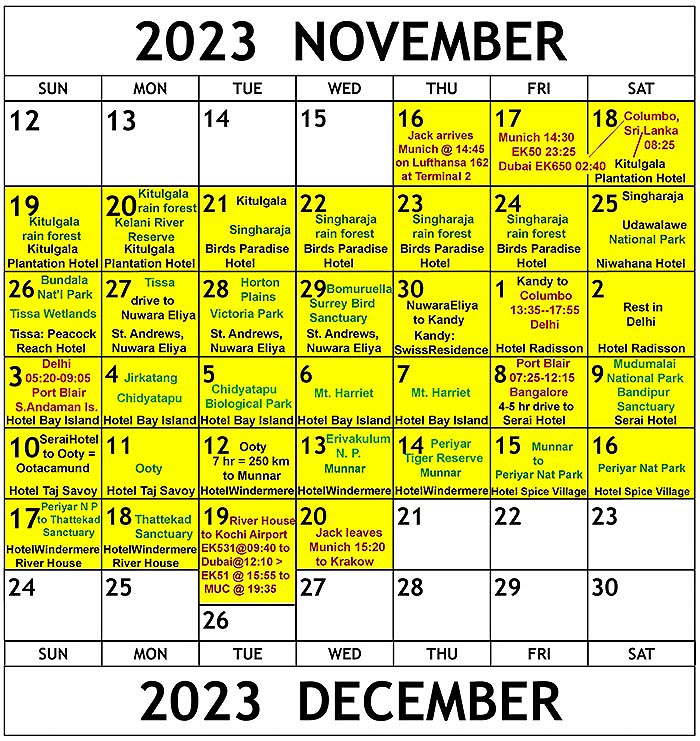
This was the itinerary of the trip. In the following, "Day 1" is 2023 November 18.
During the trip, John got 118 and Mary got 49 life birds. The numbers are somewhat smaller than we hoped, but we were whacked by unseasonable monsoon rains, and many outings were necessarily too hard for Mary's strength and age (81 yr). Still, we both enjoyed the trip very much and are exceedingly grateful to Vinod, who went spectacularly "beyond the call of duty" to solve many problems, and to Jack for all his help with our frailties and for his expertise. We would have mistakes in our bird list if not for his finesse.
This web site is barely begun, and, given planned trips and commitments, will grow only slowly in the coming (I would guess) year. Progress will be recorded here.
Pictures are copyrighted and should not be used without permission.
Trip Bird

Black-and-orange flycatcher (This was the "nemesis bird" of our trip. We looked hard for it for days. We heard it often ... but it is a "gully skulker" and never appeared. Finally, late on Day 27 = December 15, 2023, after we gave up and were walking down the road toward our vehicle, our local guide, Sam Kumar, heard it in the semi-darkness, straight down in a gully bridged by the road. John managed to see the bird -- it is, of course, his life bird -- and he got a series of pictures. In the almost-darkness, they were taken at ISO 32,000 and so are very grainy. This is the average of the best 2 pictures, still grainy but enhanced as much as possible. The colors were as rich as the picture shows. The satisfaction was enormous. This has to be my trip bird.)
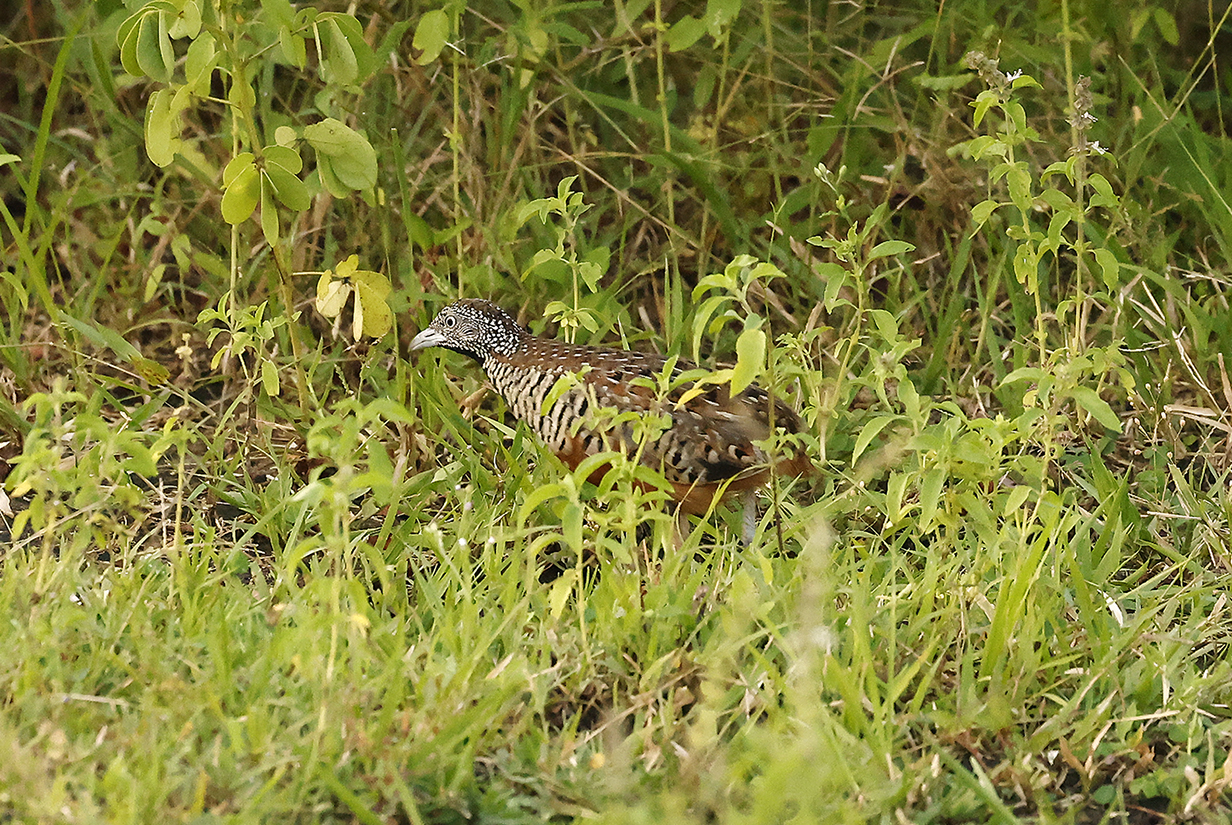
Barred buttonquail seen during our safari drive through the Tissa Wetlands on the Indian Ocean coast of Sri Lanka. We saw the bird -- probably the same bird and therefore our life bird -- twice, on the way in and again here, better, on the drive out. Buttonquails are always elusive, so this is our "trip bird" for Sri Lanka.
Part 1: Sri Lanka
Days 1 - 4: Rain forest near Kitulgala
Based out of our hotel on the Kelani Ganga River (below), we birded for the first 4 days at various rain forest stops nearby. Weather tended to be good -- hot and very humid -- in the morning, turning to torrential rain in the afternoon. Leeches were a constant danger, here and through most of the trip. Despite wearing calf-high "leech socks", we were "leeched" repeatedly, sometimes even on the hands and neck. Not charming. Fortunately not dangerous. Messy. And, for the following few days, itchy.
Interesting trivia: The site where the "Bridge on the River Kwai" was built and the film was filmed is about a mile downstream from our hotel.

This was the view from the balcony of our first hotel room, at Kitulgala Plantation Hotel, Kitulgala, Sri Lanka. Scroll right to see the full panorama. Nice!
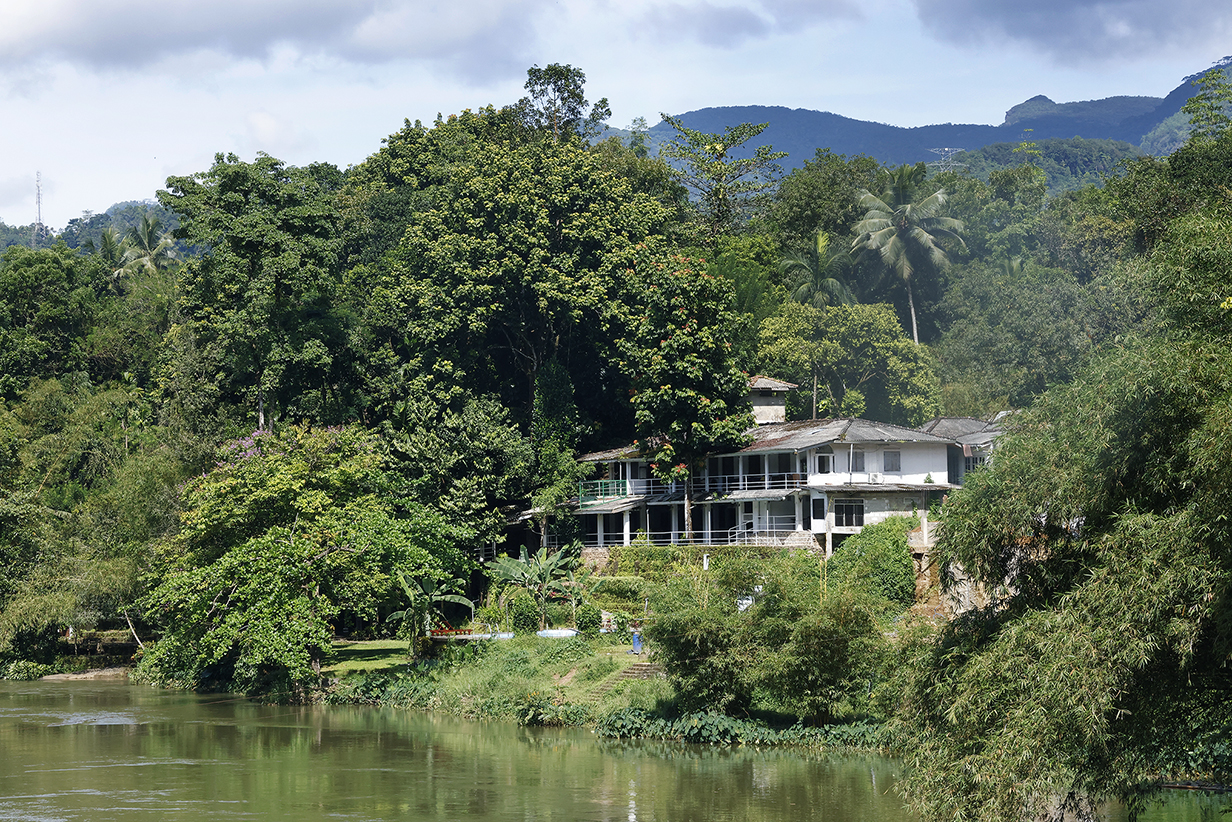
Kitulgala Plantation Hotel from a suspension foodbridge over the river just upstream from the hotel. Our balcony is on the upper floor, and the first picture above was taken from its nearest corner in this view. The restaurant is almost at river level, largely hidden by forest near the bottom-left of this picture.
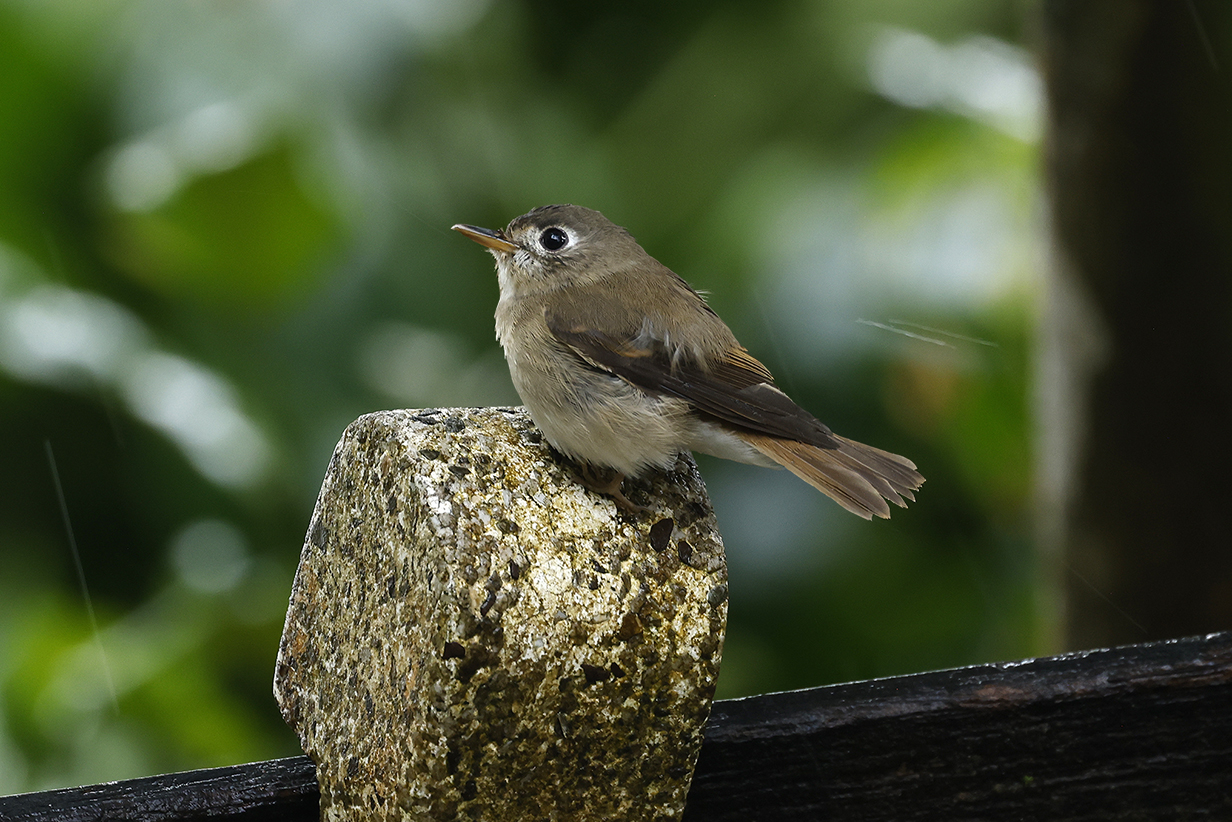
Brown-breasted flycatcher (This was the first life bird for both of us, from the restaurant, riverside, at Kitulgala Plantation Hotel. In the rain, like many pictures from this trip.)
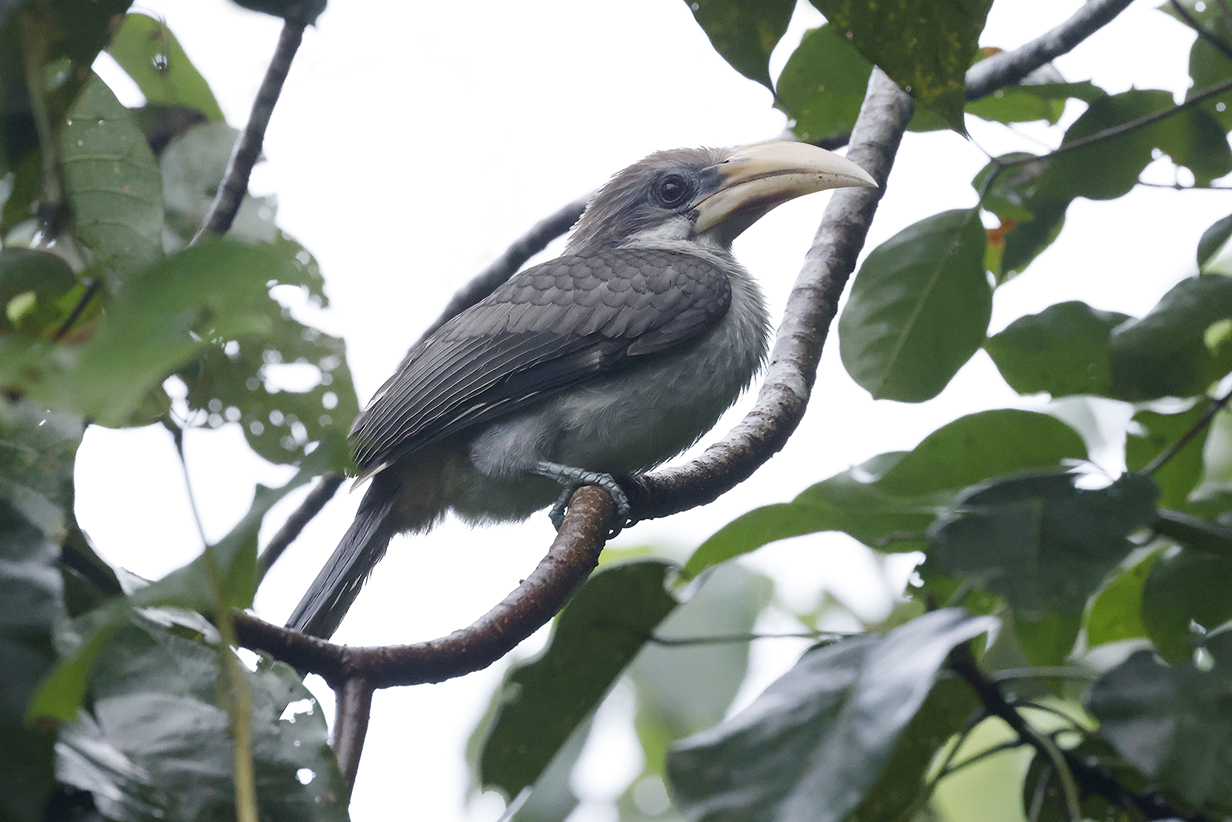
Sri Lankan gray hornbill (This is John's first Sri Lankan endemic life bird of the trip. Mary got hers later in the trip.)
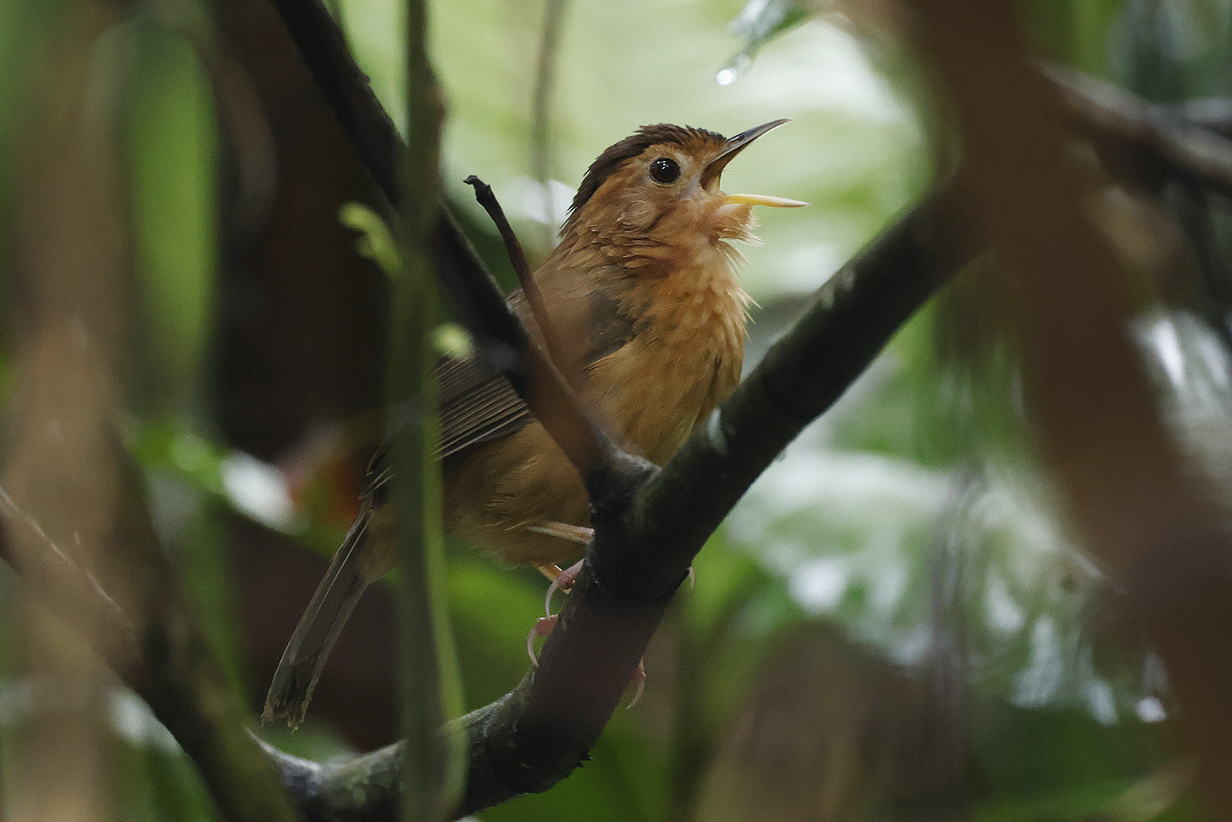
Brown-capped babbler (Babblers seem to come in two "types" -- some are "in your face" loud and obvious, while others are solitary and shy skulkers. This one is a skulker and much prized. Endemic to Sri Lanka, it is John's life bird.)
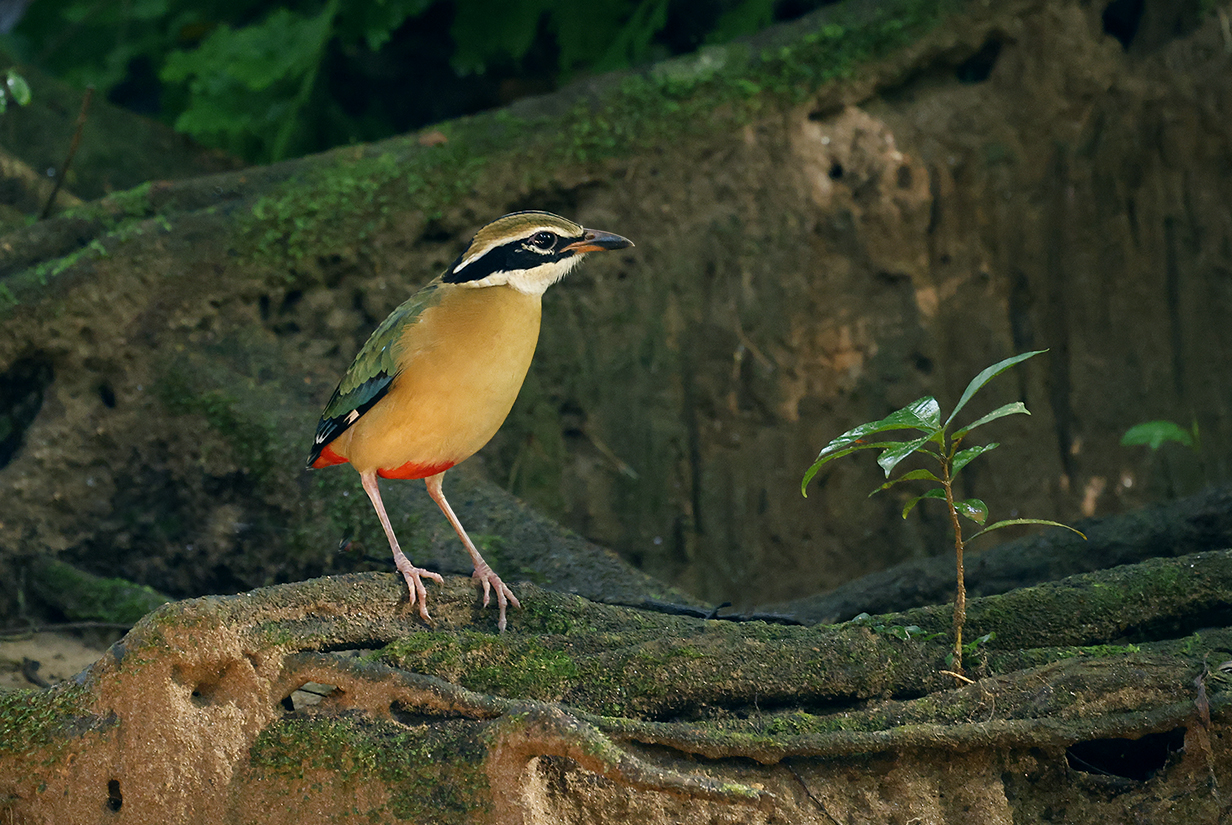
Indian pitta seen early on our first full day of birding. Pittas are almost always very difficult. The usual view is fleeting; the birds like to lurk in dense vegetaion and dark overhangs. To see one in glorious color, posing in morning sunlight, is vanishingly rare. This is John's life bird.
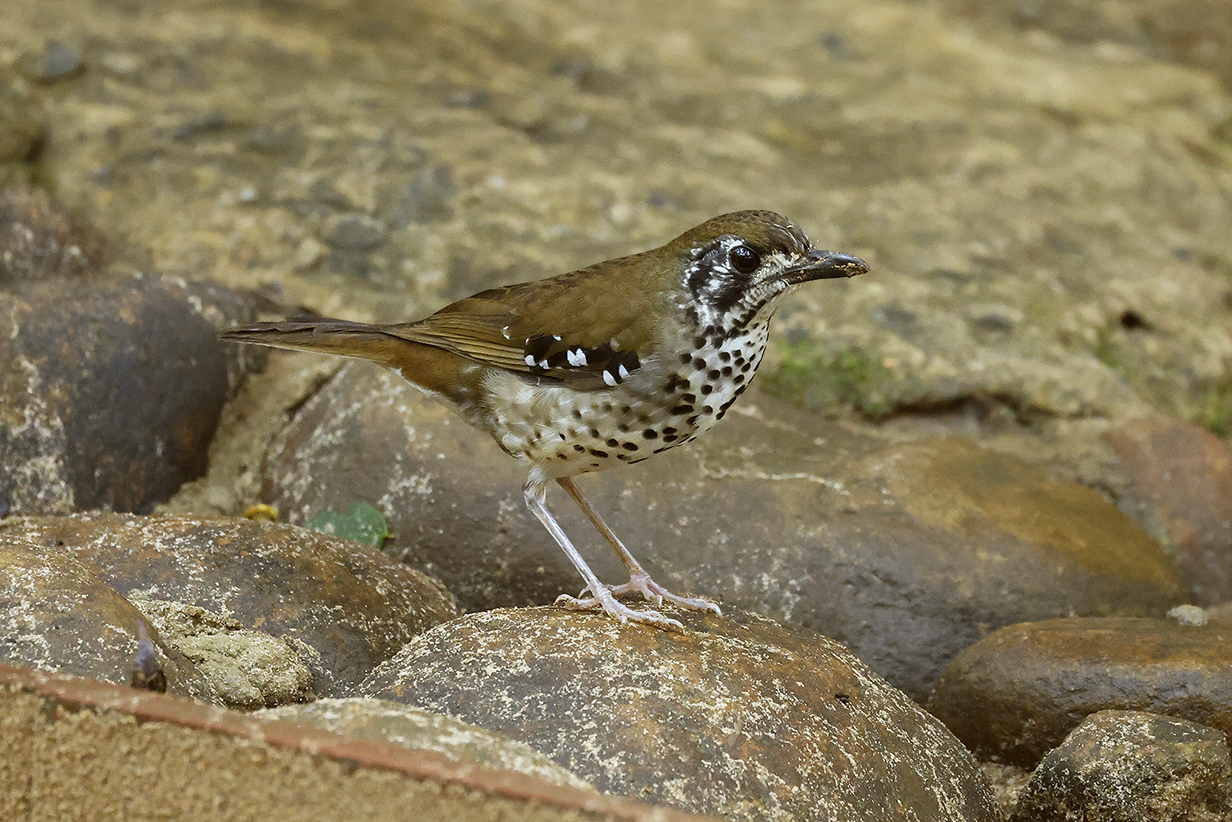
Spot-winged thrush (This is John's life bird, a Sri Lankan endemic.)
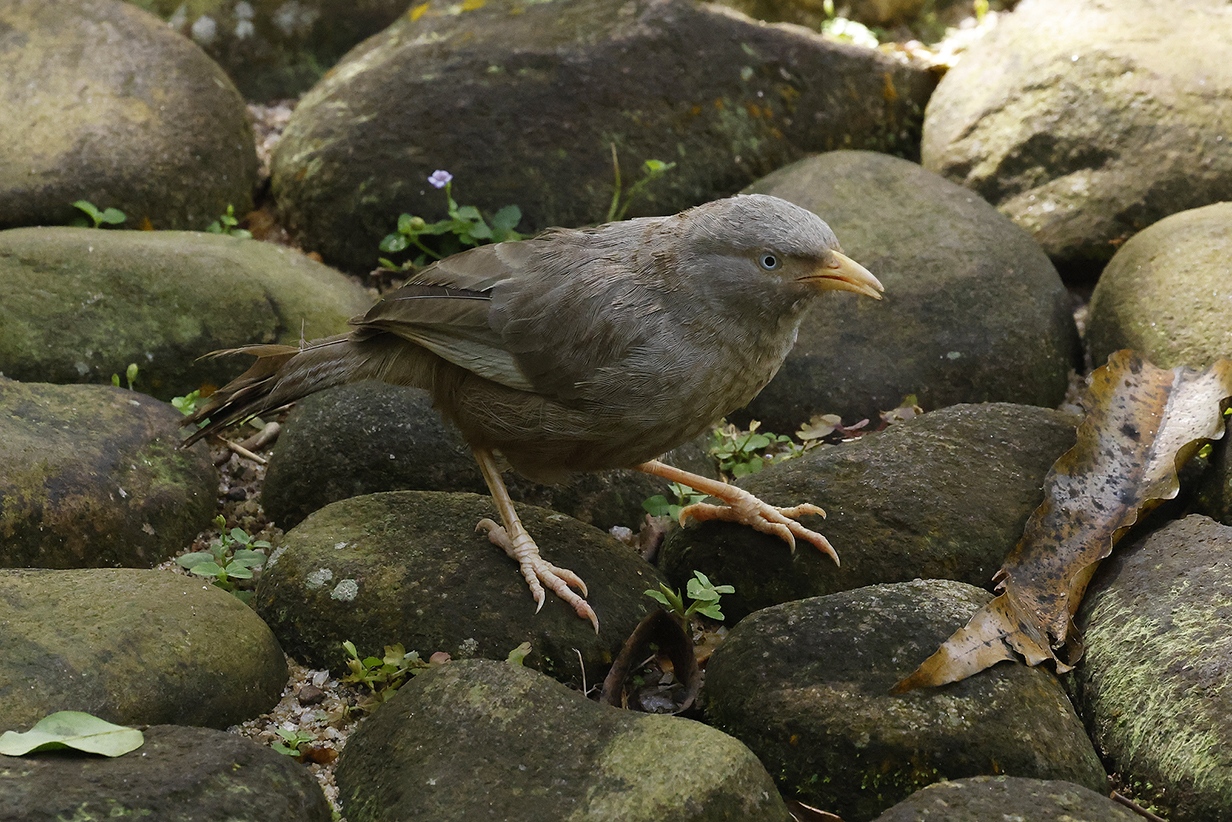
Yellow-billed babbler (This is John's life bird -- one of the easy babblers, seen often throughout the trip.)

Square-tailed bulbul (This is John's life bird, in the rain.)
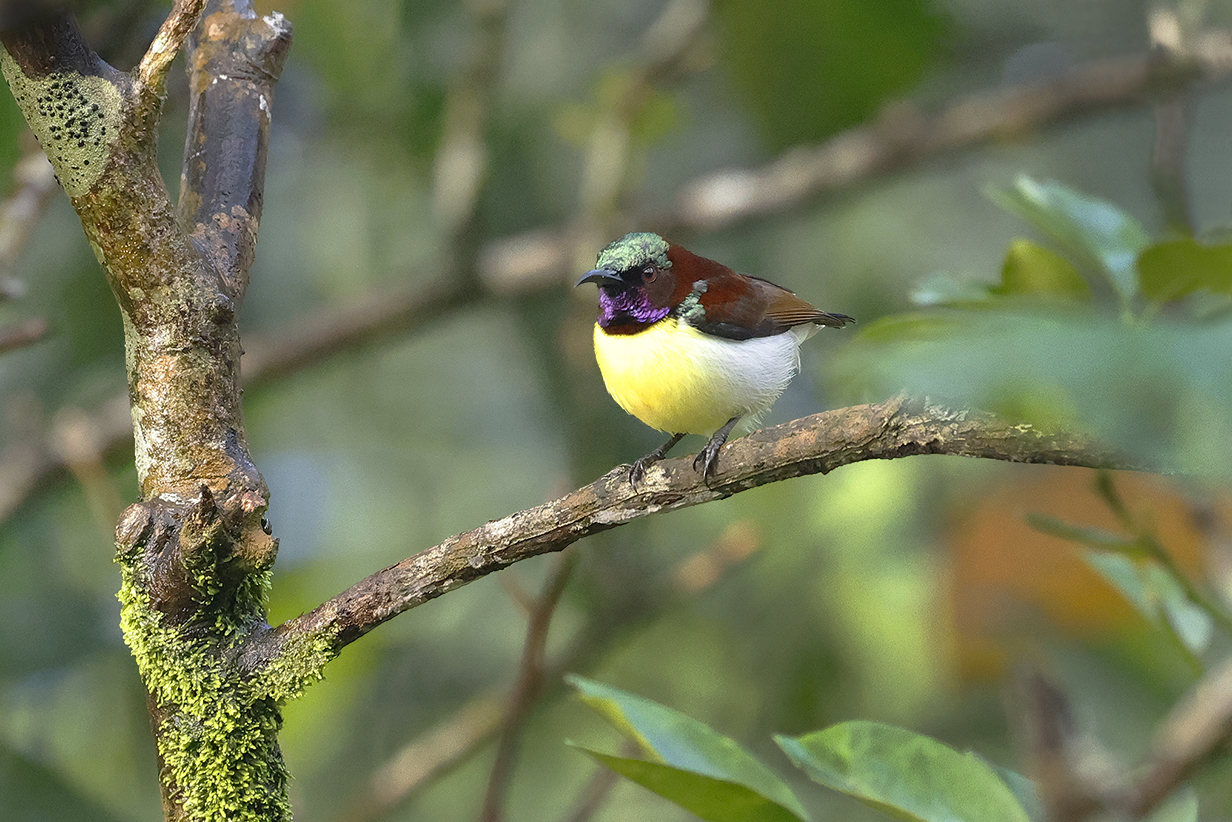
Purple-rumped sunbird (This is John's life bird.)

Chestnut-backed owlet (This is John's life bird, a Sri Lankan endemic. Hard to get a good picture of a shadowed bird with a bright background.)
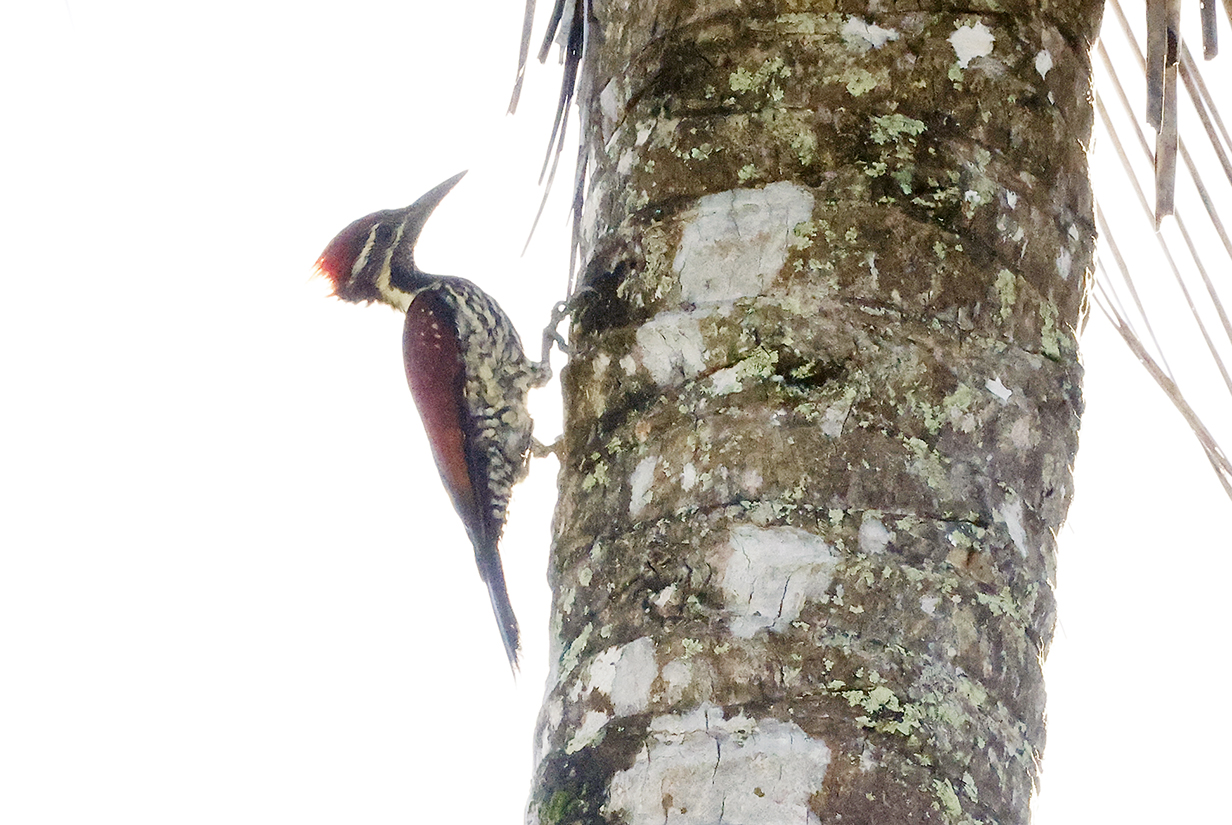
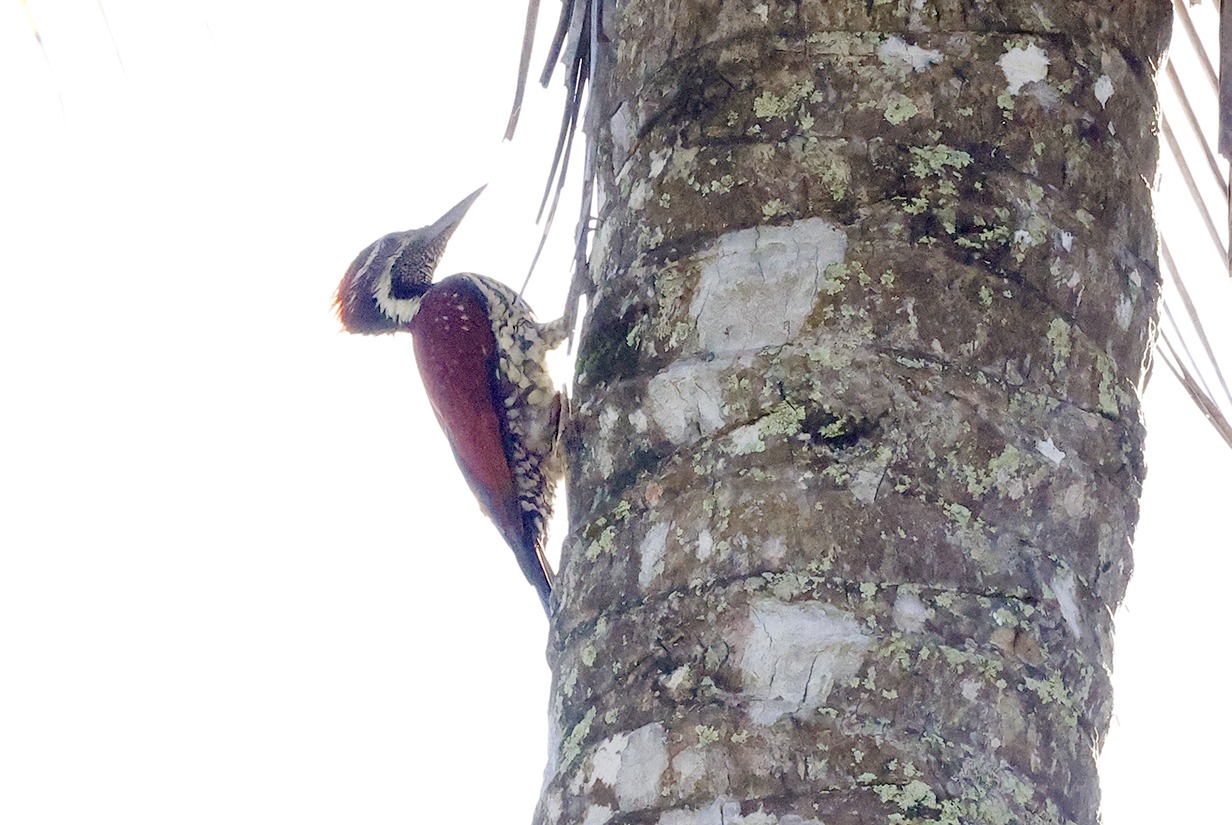
Red-backed flameback (This Sri Lankan endemic is John's life bird ... although the pictures are not very good.)

Alexandrine parakeet
Days 4 -- 7: Sinharaja Rain Forest
On these days, we birded locations near Birds Paradise Hotel, in rain forests with lots of leeches.
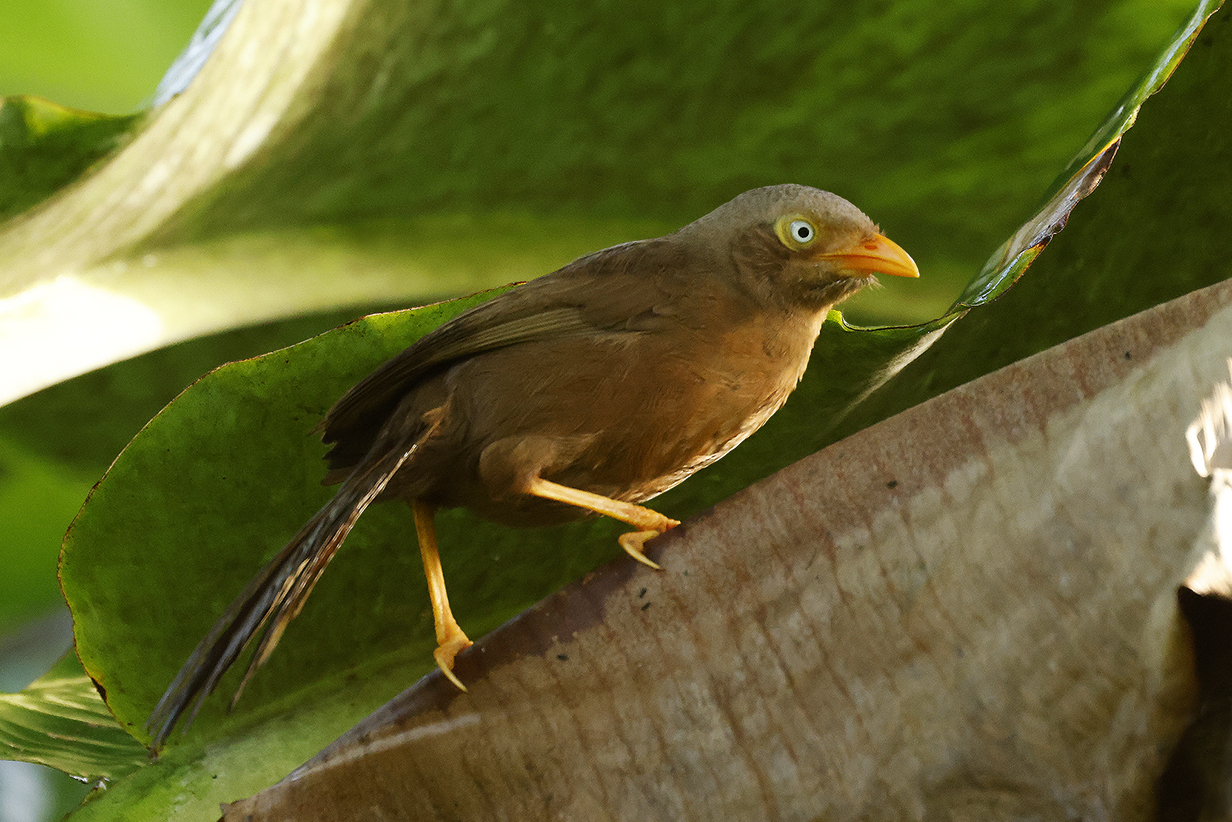
Orange-billed babbler (This is John's life bird -- similar to Yellow-billed babbler: easy, but only in its very restricted range.)

Layard's parakeet (This is John's life bird -- a Sri Lankan endemic.)
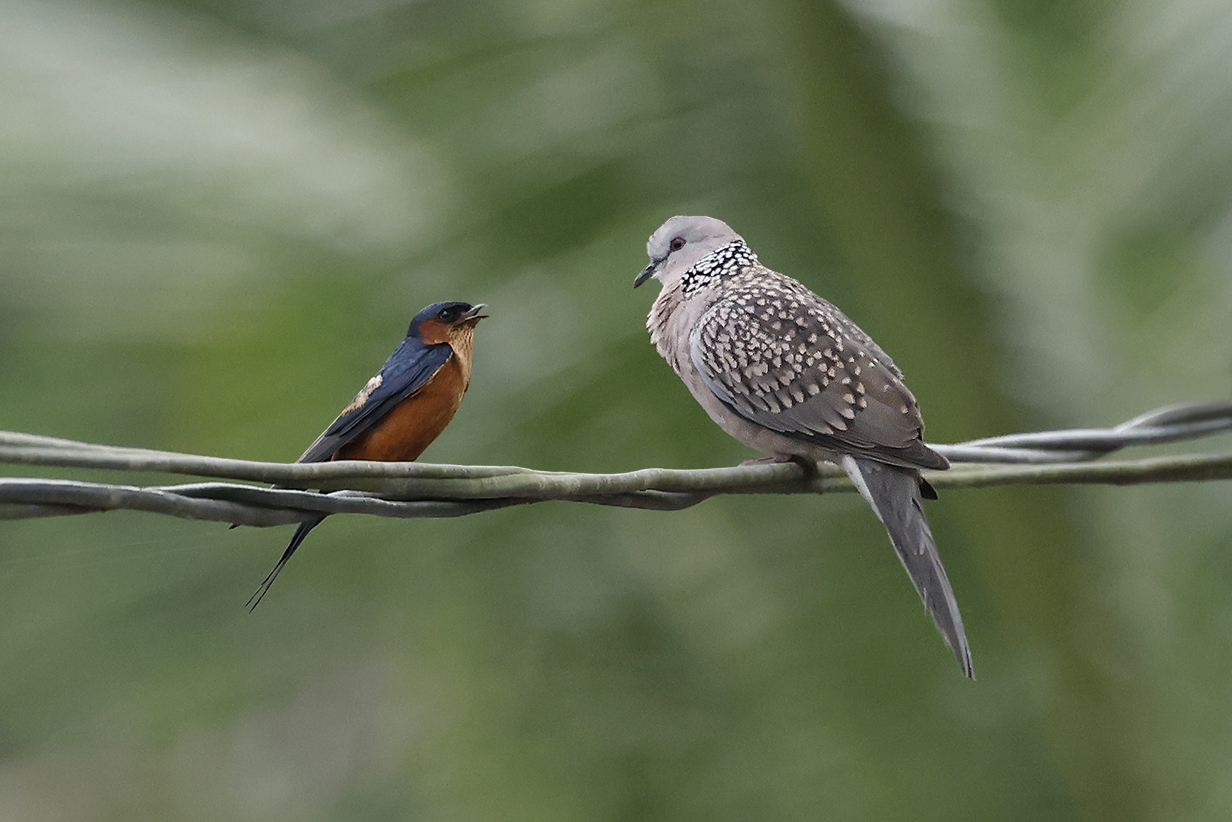
Sri Lankan swallow (This is one of a small flock of our life birds, also Sri Lankan endemics. With Spotted dove.)
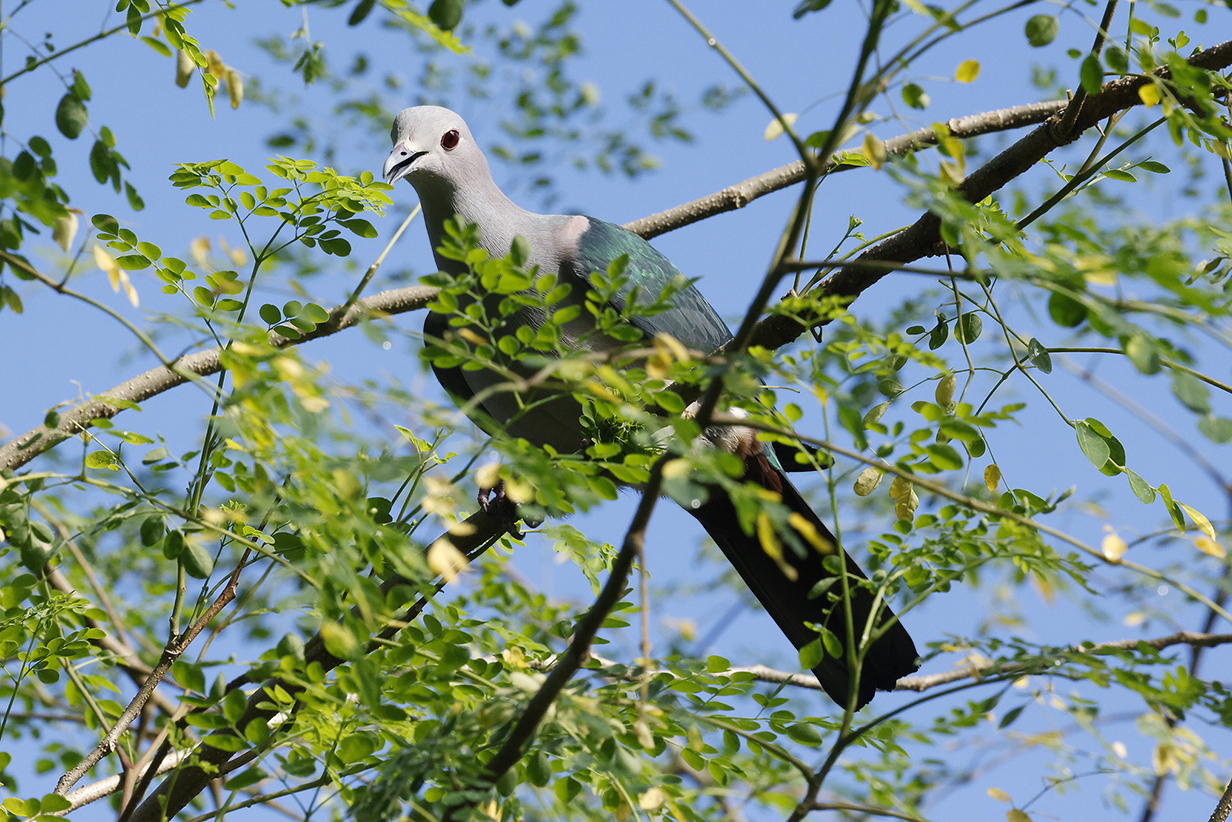
Green imperial-pigeon

Sri Lankan blue magpie (This is our first life bird on Day 5, 2023 November 22. It is one of the most spectacular Sri Lankan endemics. We saw it much better on Day 7, below.)
On Day 5, we were taken to a hide several (difficult-driving) hours from our hotel. There, we got superb looks at several extraordinarily difficult endemic life birds:

Emerald dove showed up early.
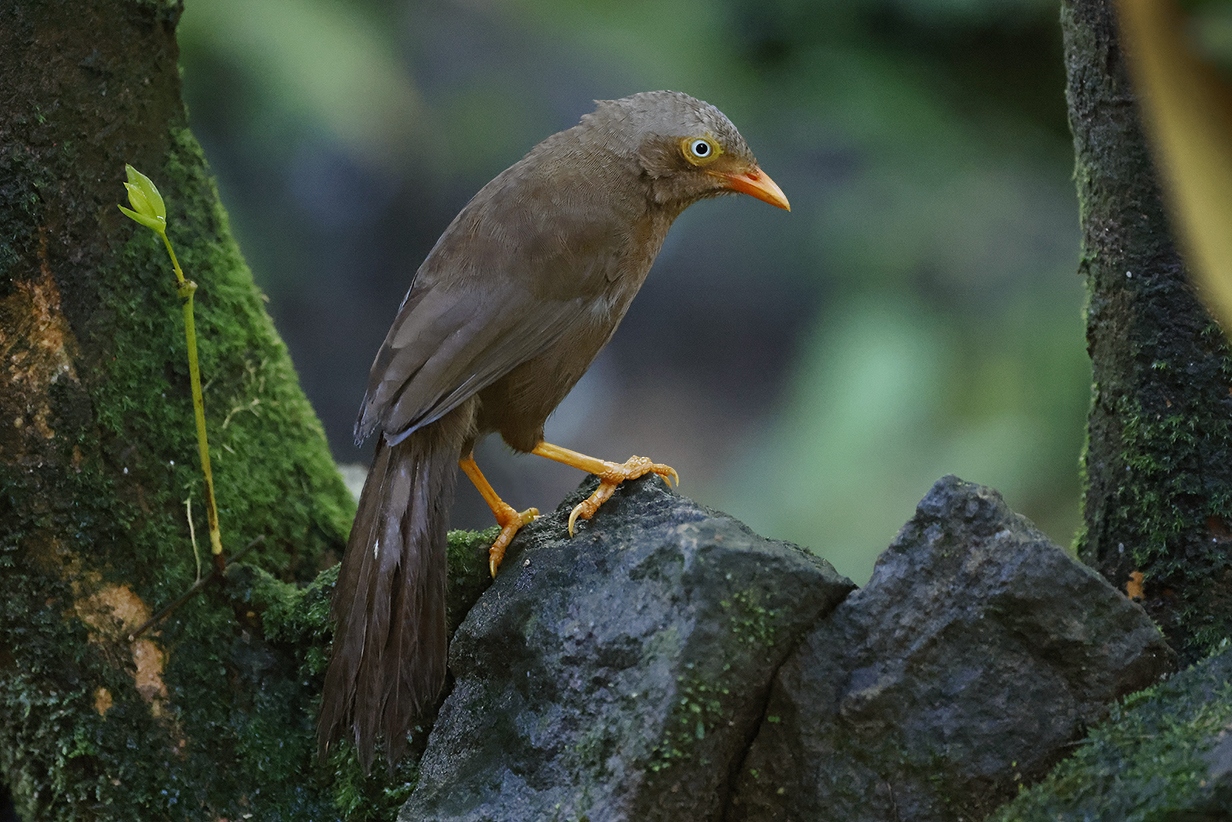
Orange-billed babbler, too (This is Mary's life bird.)

Ashy-headed laughingthrush (This is our life bird -- another Sri Lankan endemic with a small range. We always love to see a new laughingthrush.)

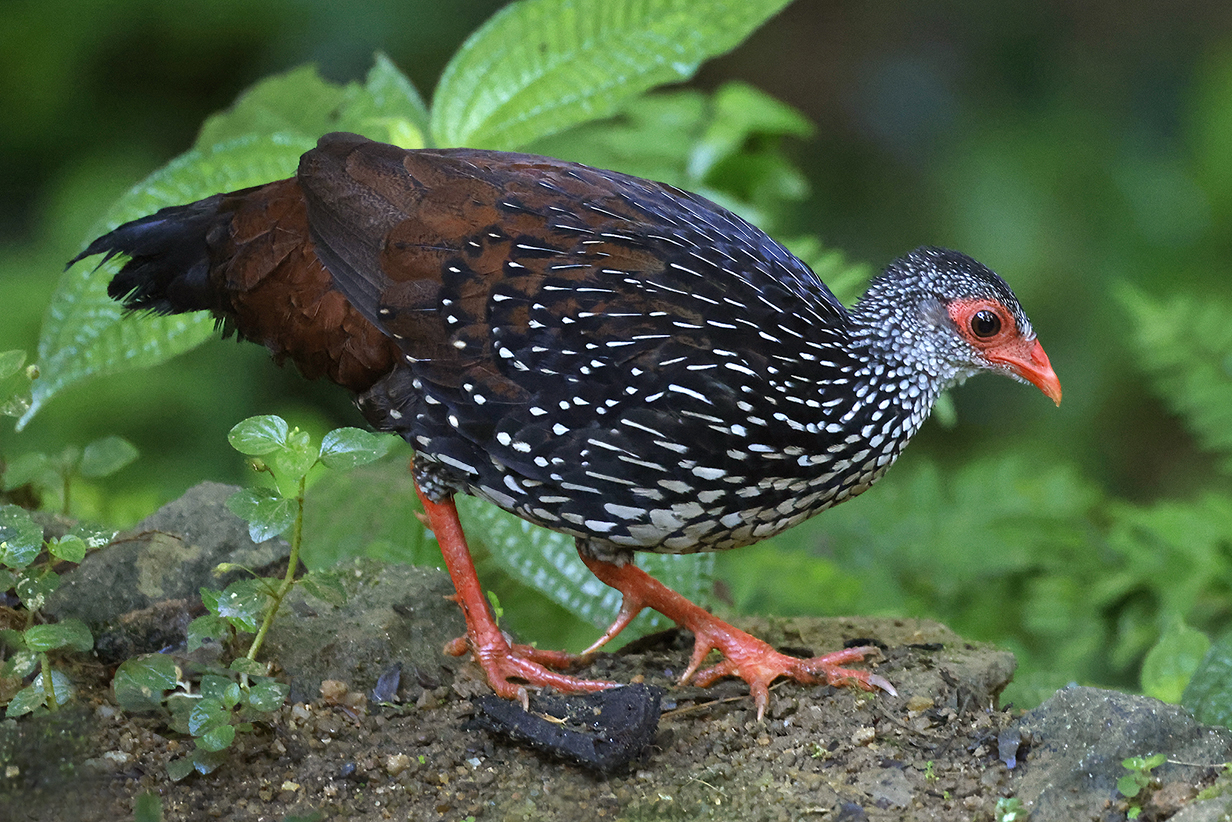
Sri Lankan spurfowl (This is our prize life bird of the day. This one is a male.)
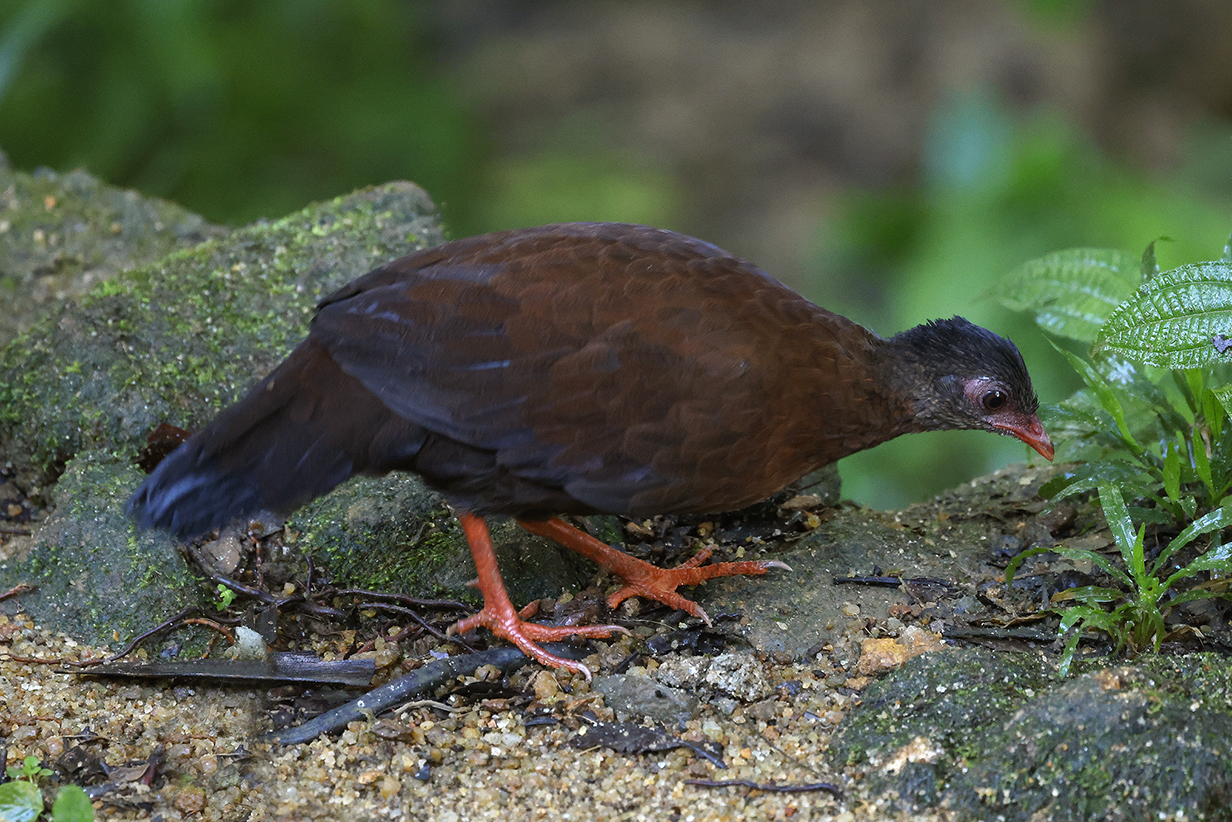
Sri Lankan spurfowl (female)
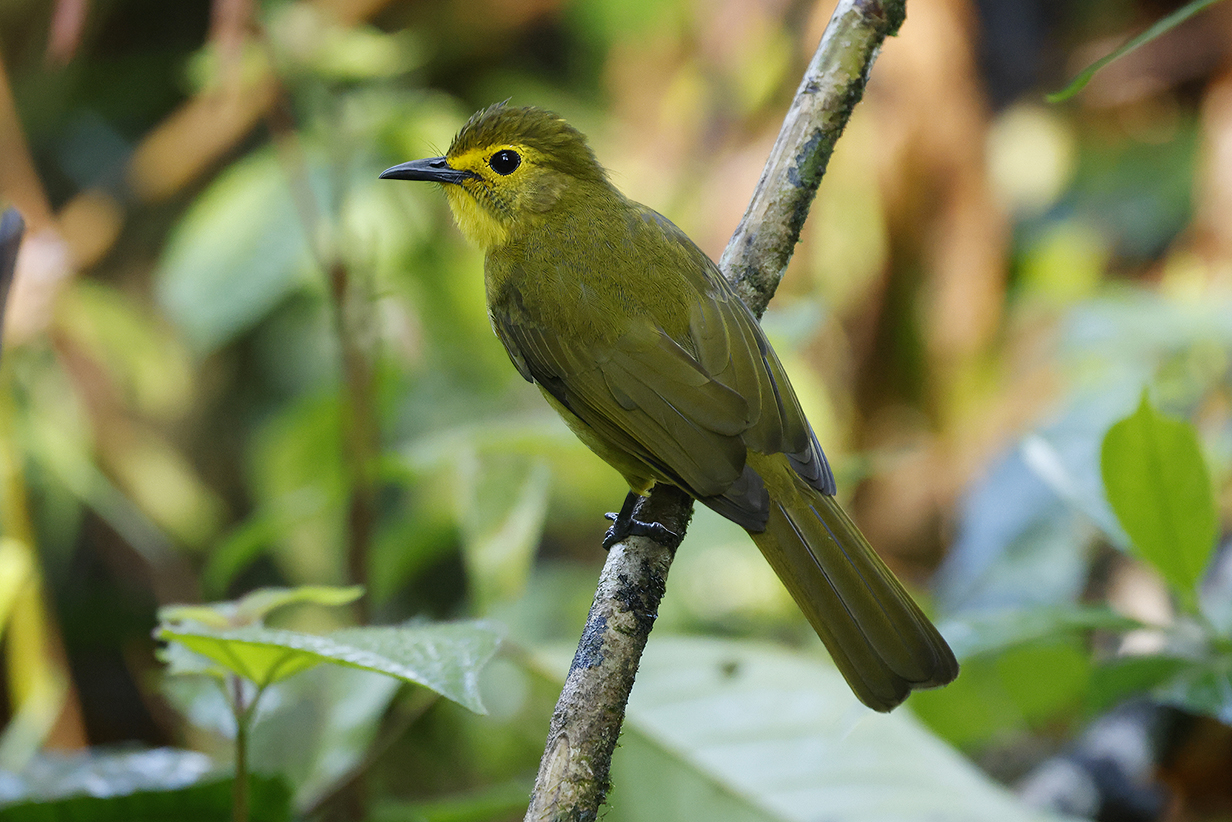
Yellow-browed bulbul (This is our life bird. It is endemic to south-western India and Sri Lanka and an easy bird that we saw often.)
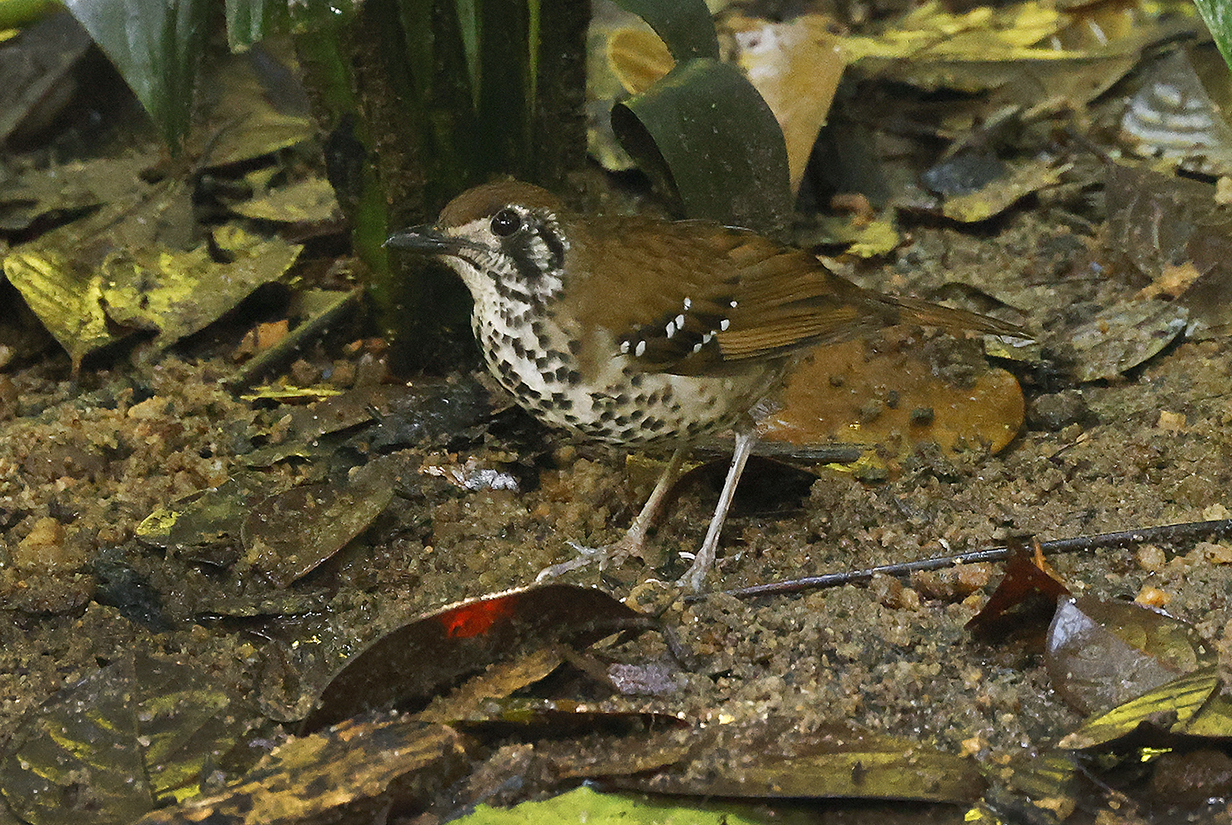
Spot-winged thrush (another view of this Sri Lankan endemic)
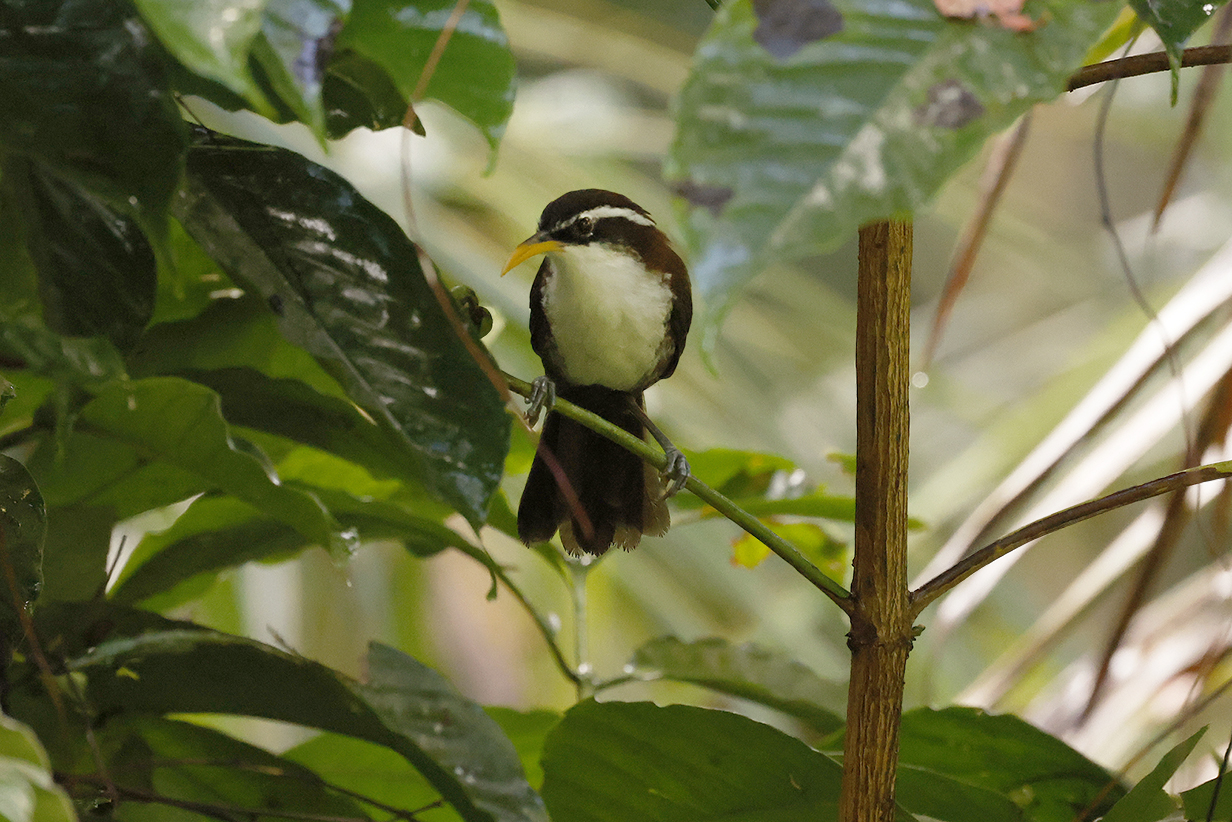
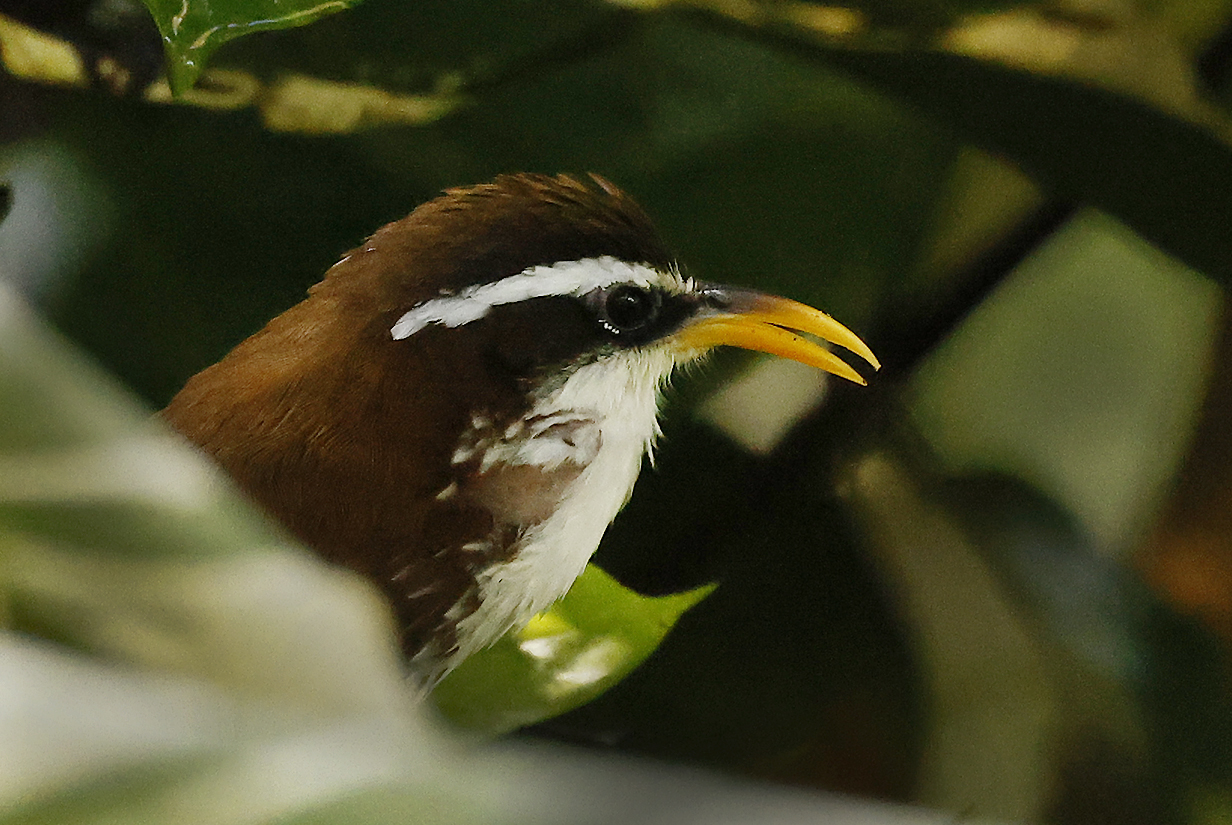
Sri Lankan scimitar-babbler (This is John's life bird of a Sri Lankan endemic.)
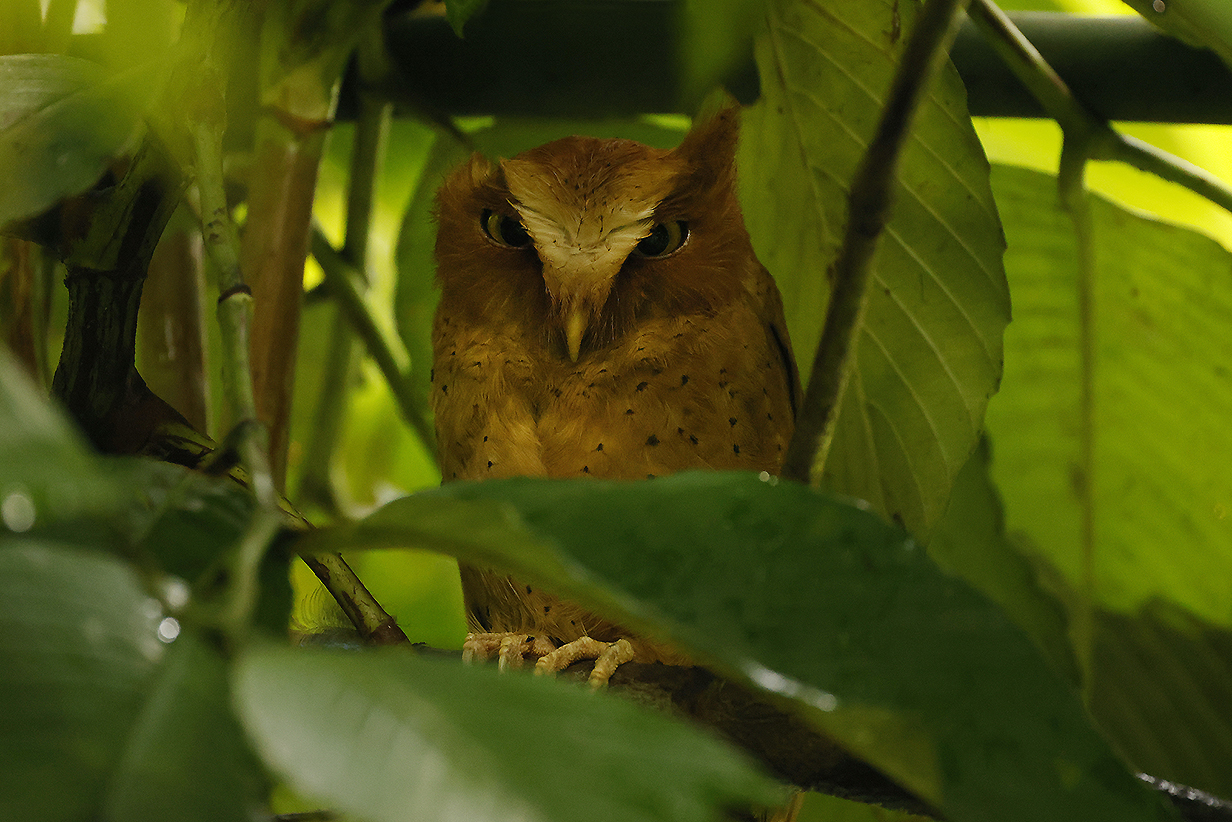
Serendib scops-owl (This is John's life bird -- a very unusual Sri Lankan endemic.)

Sri Lankan hanging-parrot (This is John's life bird of a Sri Lankan endemic.)
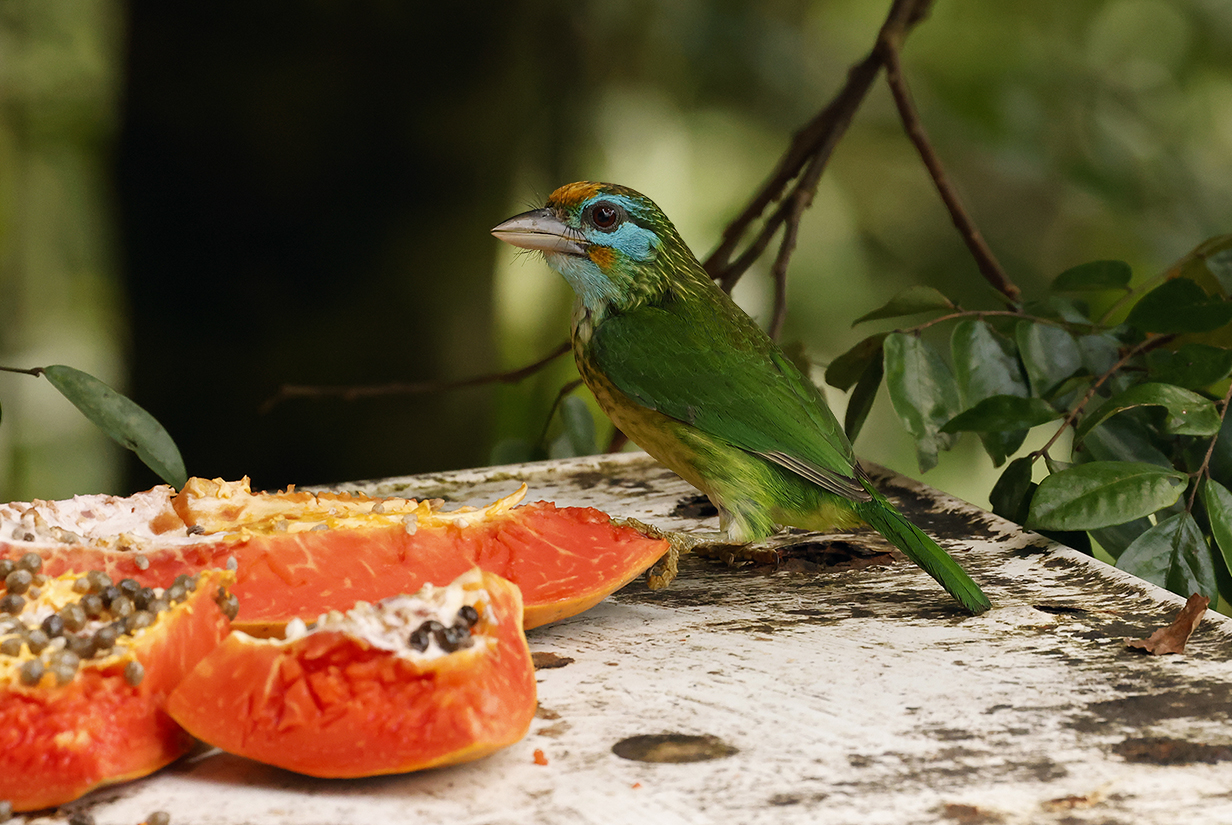
Yellow-fronted barbet (This is our life bird -- a Sri Lankan endemic.)

Sri Lanka blue magpie (We never got tired of seeing this bird.)
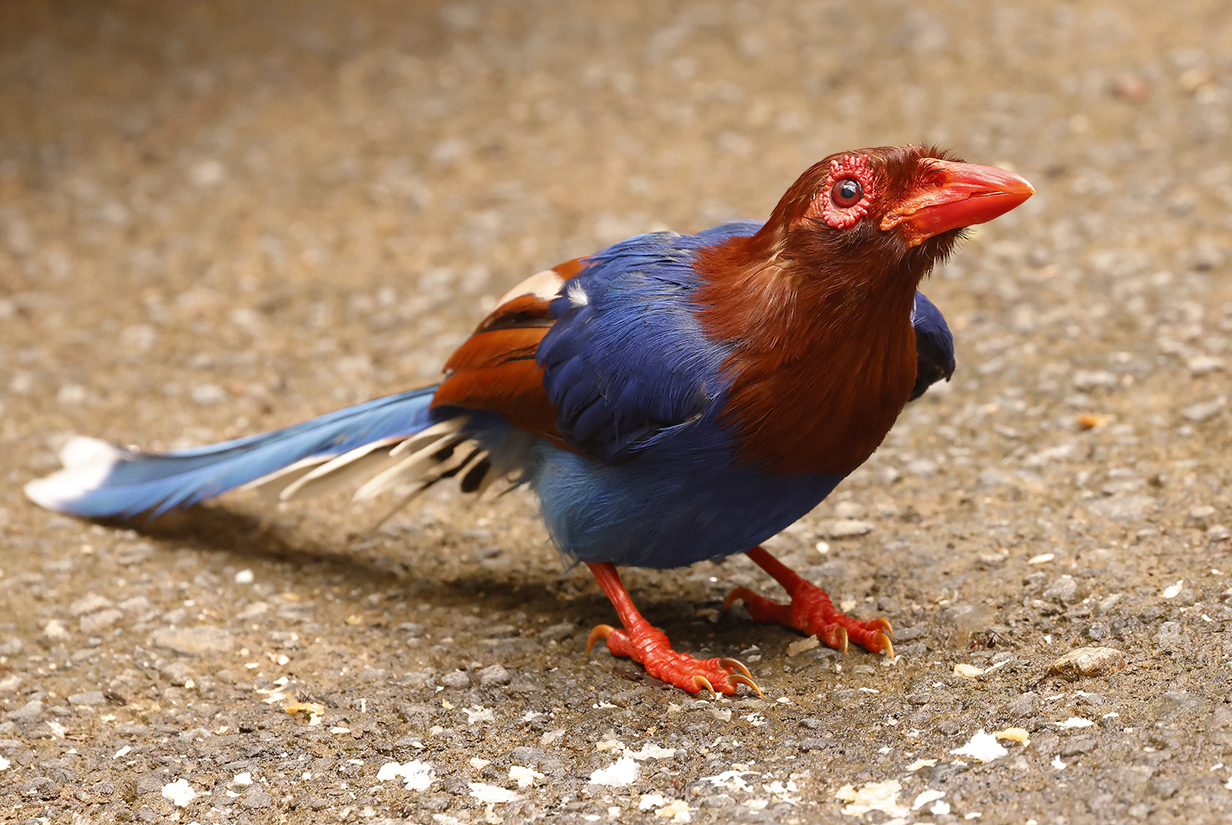
Sri Lanka blue magpie (Endemic to Sri Lanka, this was -- no contest! -- the most colorful bird of the trip. I have not enhanced the color saturation or the "vibrance". The colors really are mind-blowing. Of course, this species -- but not this bird -- was new for us.)
Day 8: Udawalawe National Park
This afternoon we had our first safari drive, in Udalwalawe National Park. Like almost all such drives, it was exceptionally enjoyable and successful -- partly by using the open vehicle as a "hide" -- in helping us to get new birds. Safari drives are also the best way to make it easy for Mary to take part in all birding.
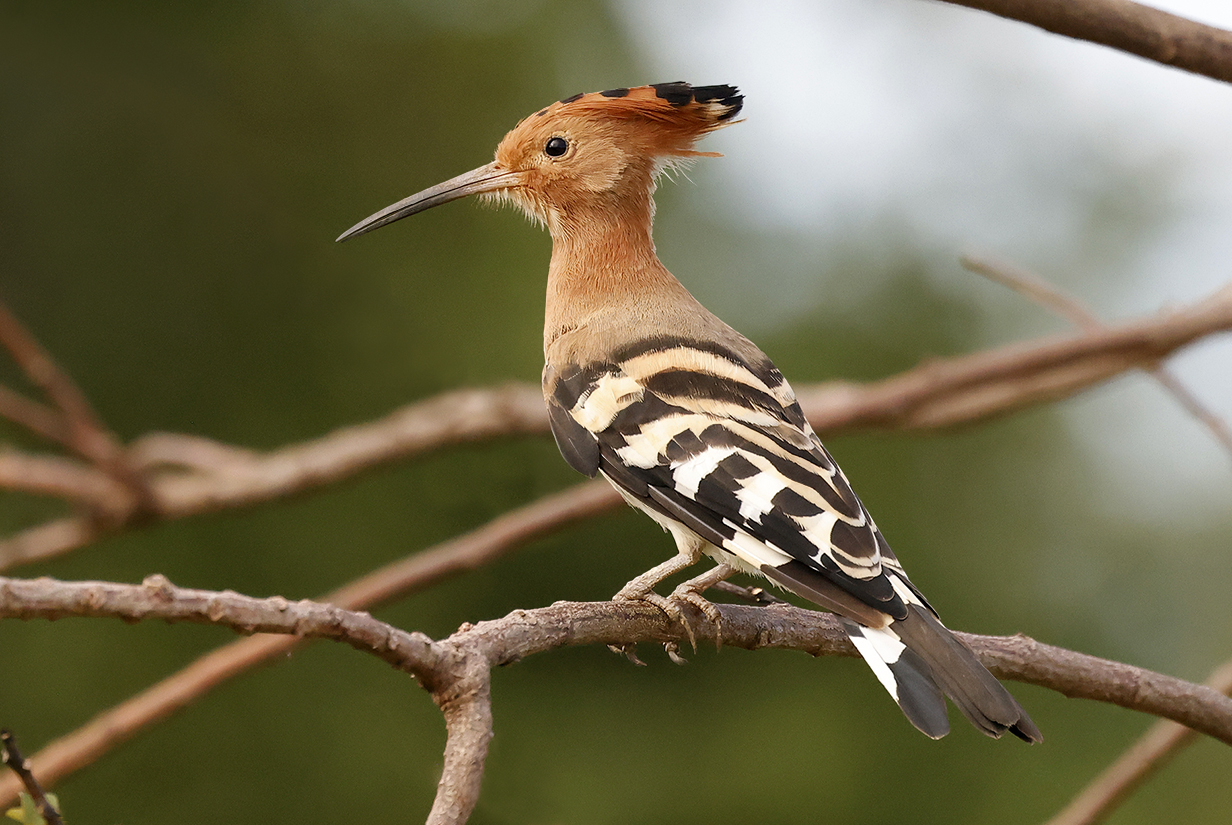
Eurasian hoopoe

Asian green bee-eater -- we saw dozens during our safari drive.
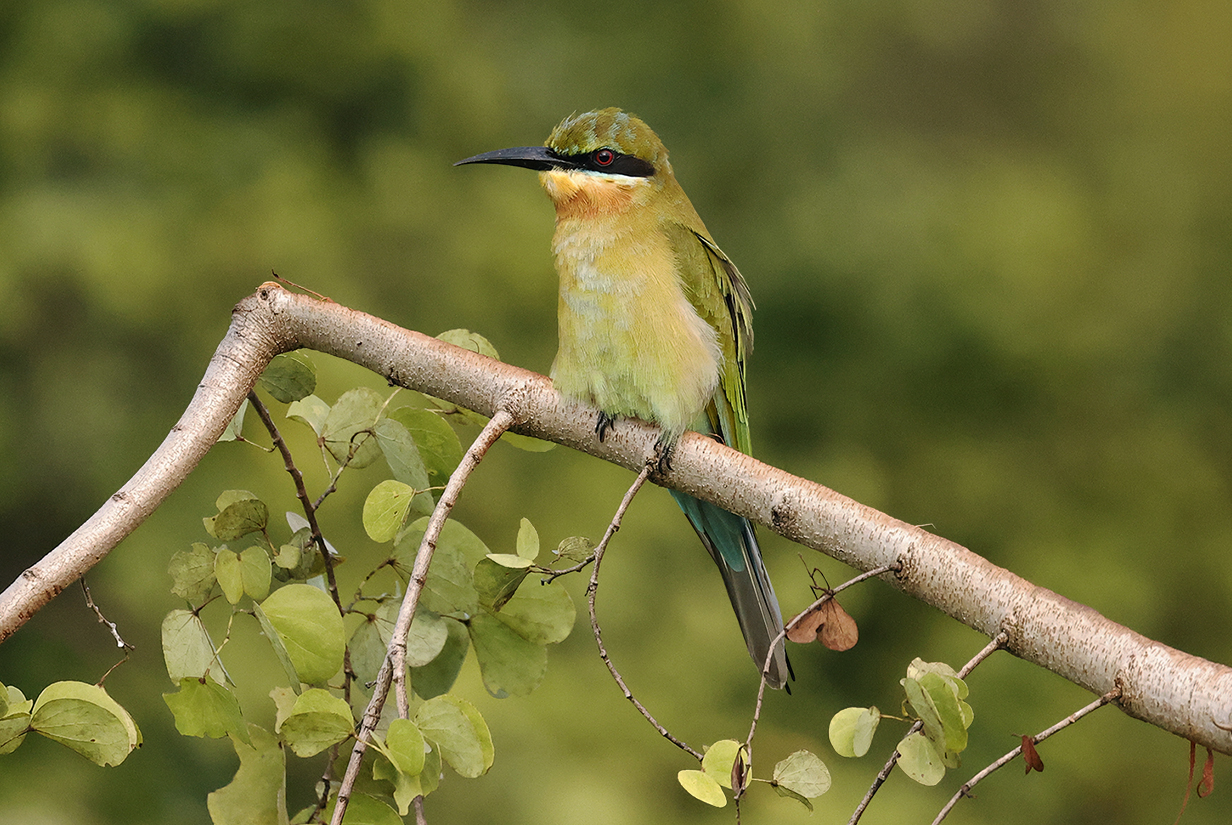
Blue-tailed bee-eater (This is Mary's life bird; John got his several days before. This is another species that we saw many times during the safari drive.)

Blue-tailed bee-eaters
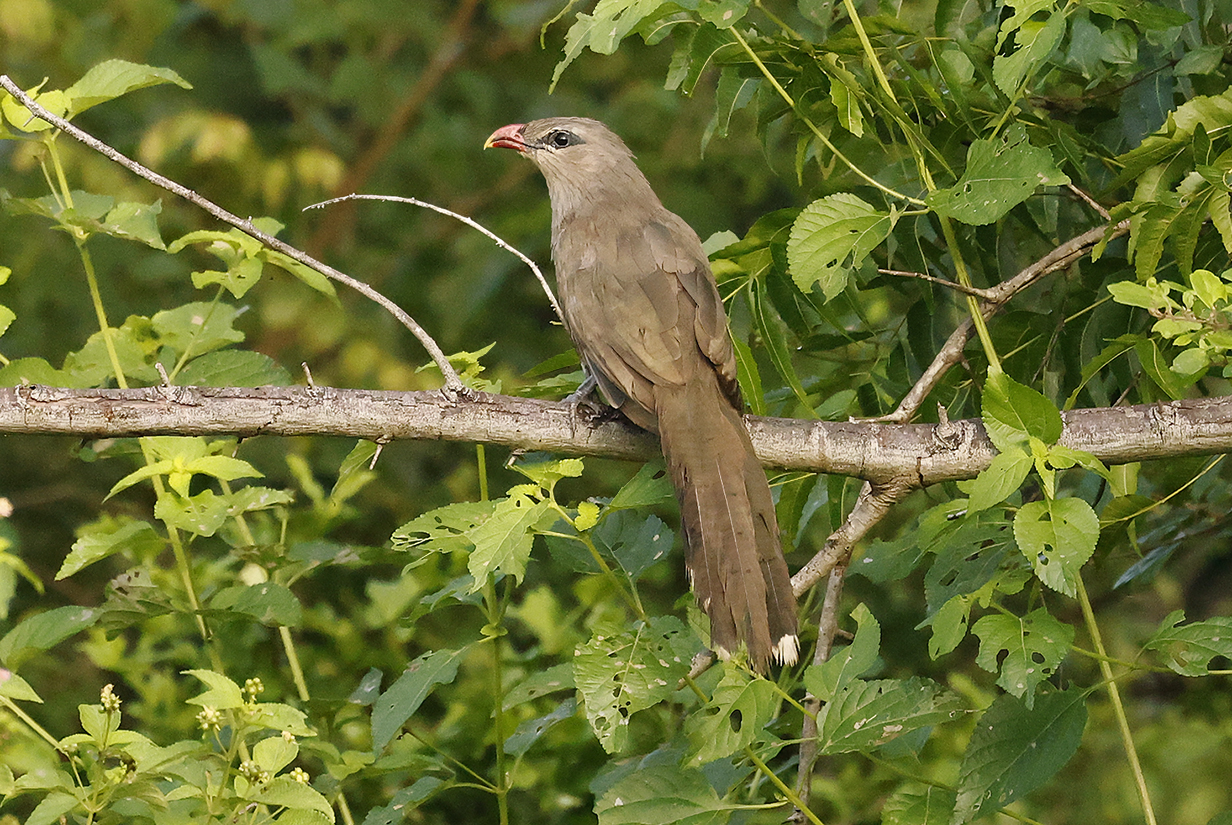
Sirkeer malkoha (This is our life bird.)
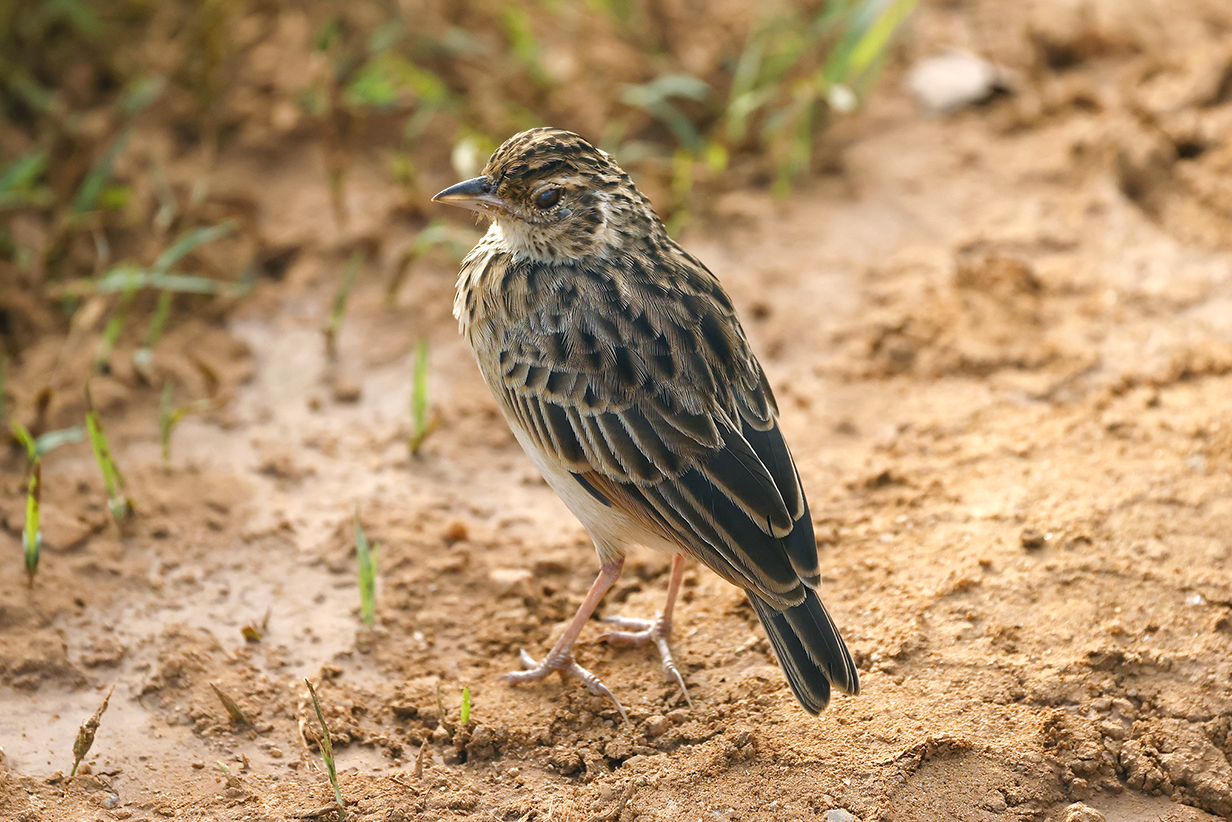
Jerdon's bushlark, just in front of our vehicle, a good illustration of its use as a "hide". This is our life bird.
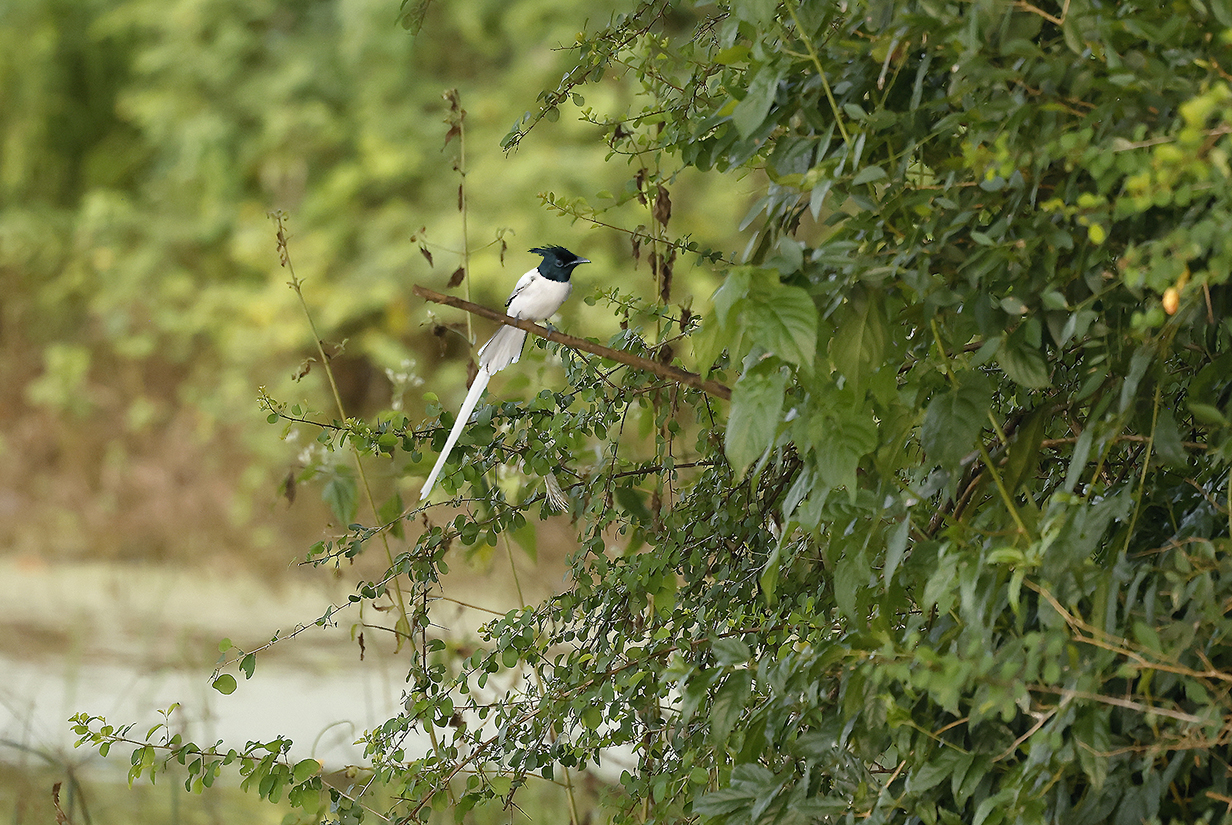
Indian paradise-flycatcher (This elegant white-morph male was Mary's life bird. We watched it fly down to the water to bathe, several times, each time shaking its tail out to dry.)
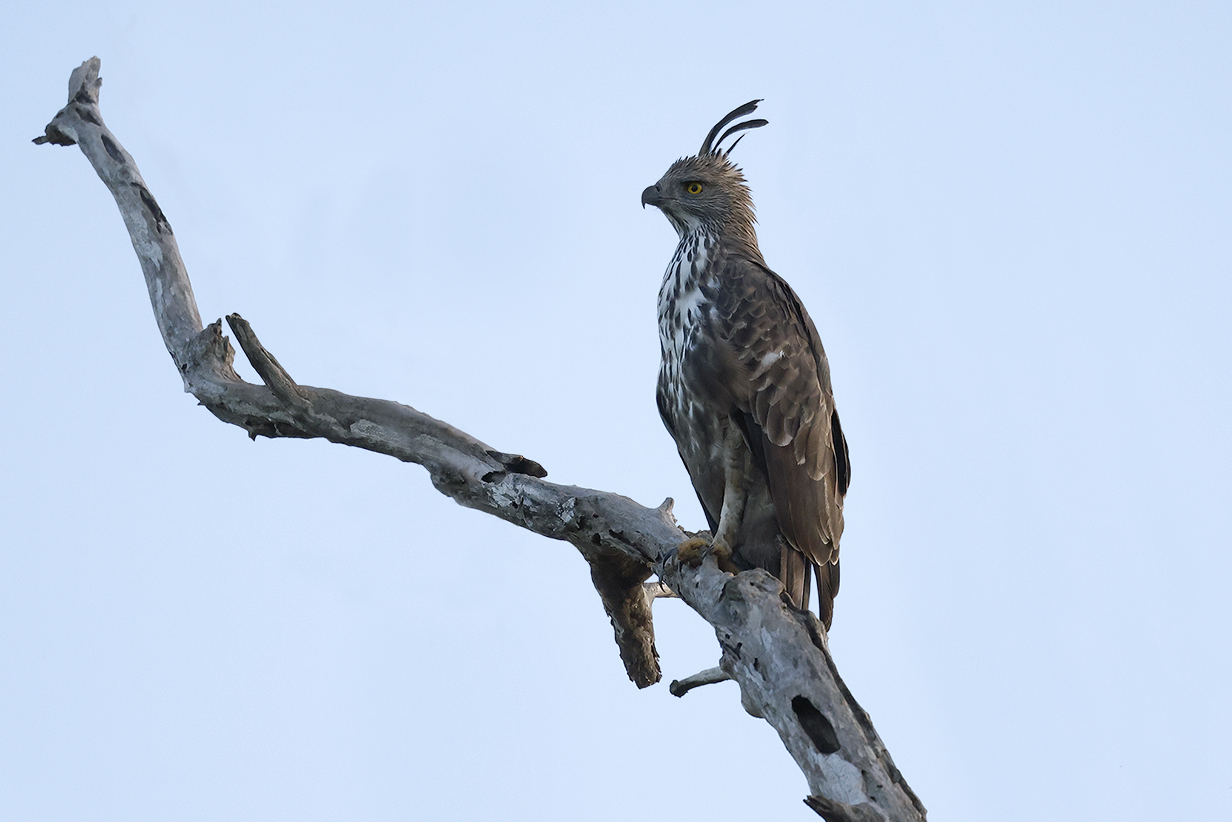
Changeable hawk-eagle
Day 9: Tissa Wetlands, Bundala National Park, Indian Ocean coast
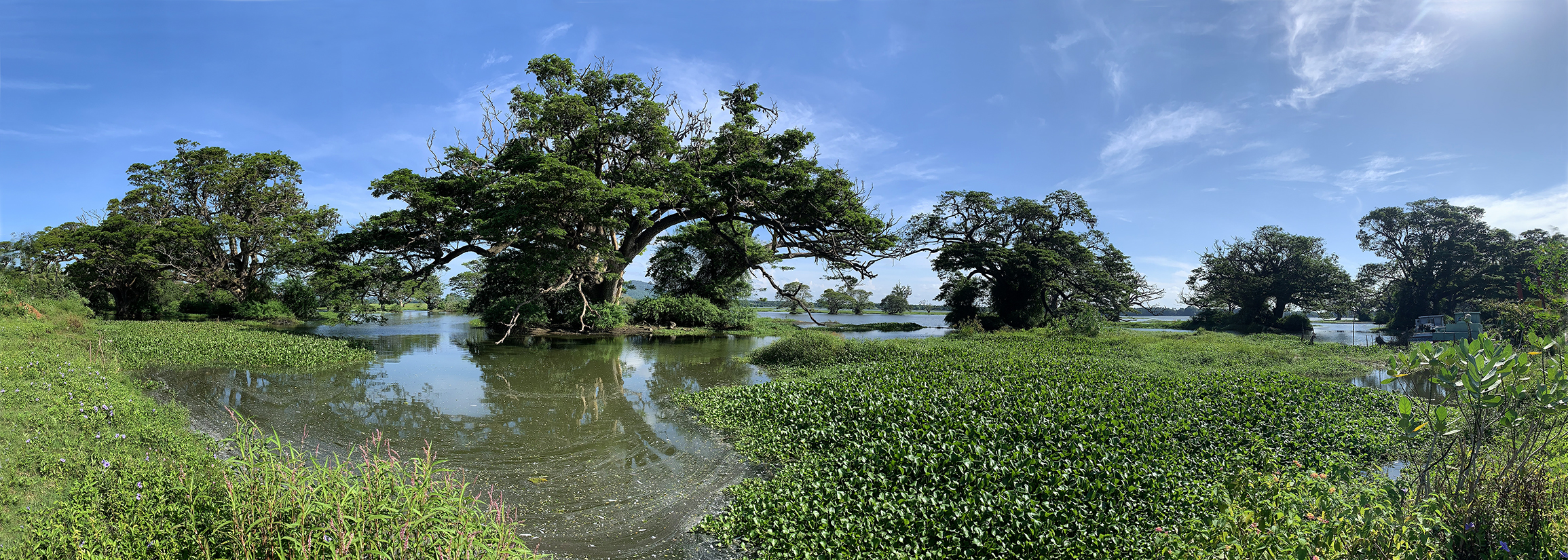
On 2023 November 26 = Day 9 of the trip, we were treated to a safari drive through the Tissa Wetlands along the Indian Ocean coast of Sri Lanka. This was one of the most enjoyable and productive days of the trip -- being driven in an open safari vehicle is physically easy, covers a lot of territory, provides a "moving hide", so birds and animals are less shy and more visible, and is almost always a delight. This panorama was about half way through the drive. Scroll right to see it all.

Eastern cattle egret (Clements and eBird announced in their 2023 Taxonomy Update on 2023 October 24 that Cattle egret has been split into the new world "Western cattle egret" (Bubulcus ibis) and old world "Eastern cattle egret" (Bubulcus coromandus), previously regarded as a subspecies. So we decided to take Eastern cattle egret -- which we had of course seen for many years -- as new as soon as we saw it on this trip. This, then, is an Eastern cattle egret, one of the 118 new bird species that we took on this trip. Note: The same thing happened with the split of Intermediate egret -- see Medium egret in this web page.

Of course, we saw a lot of Eastern cattle egrets.

Tricolored munia (This is our life bird.)

Barred buttonqquail (This is our life bird -- the prize bird of the day. We saw it twice, this time on the drive in and again, below, on the drive out from the Indian Ocean to the National Park entrance.)
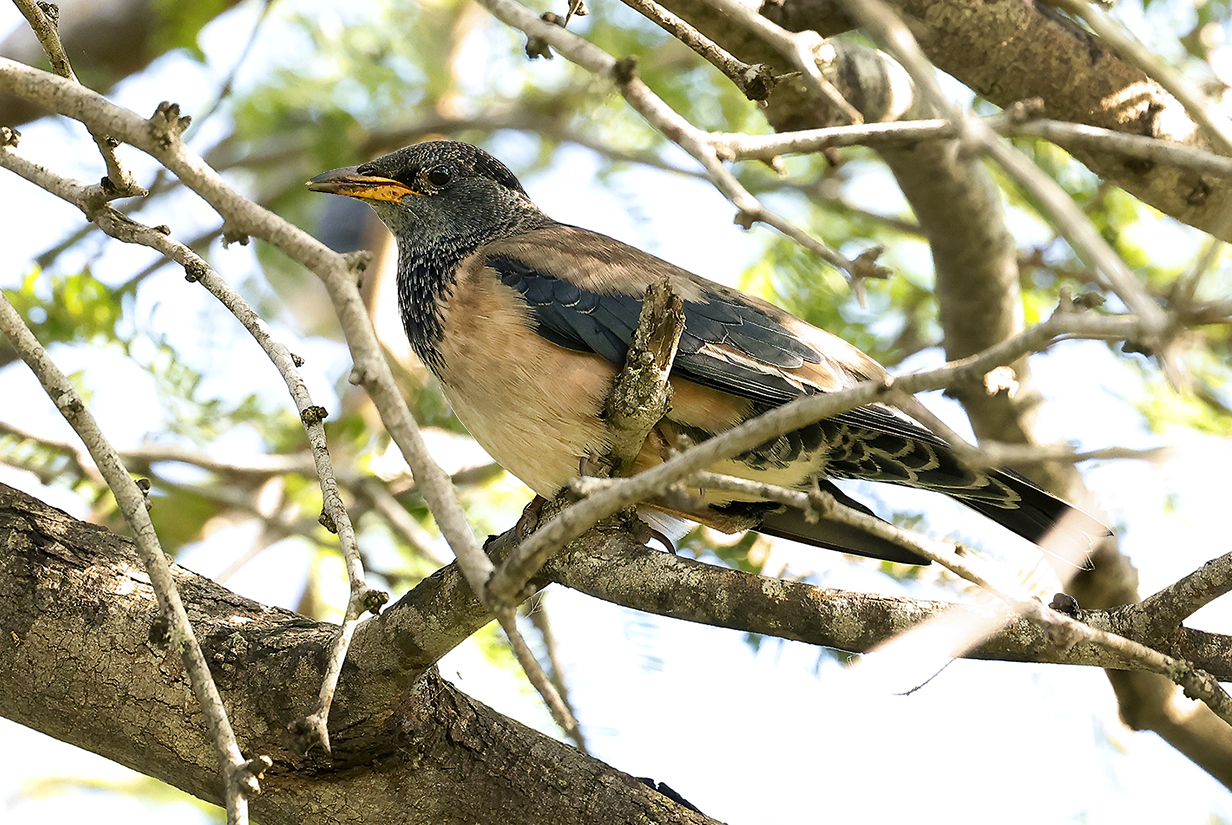
Rosy starling (This juvenile is our life bird.)
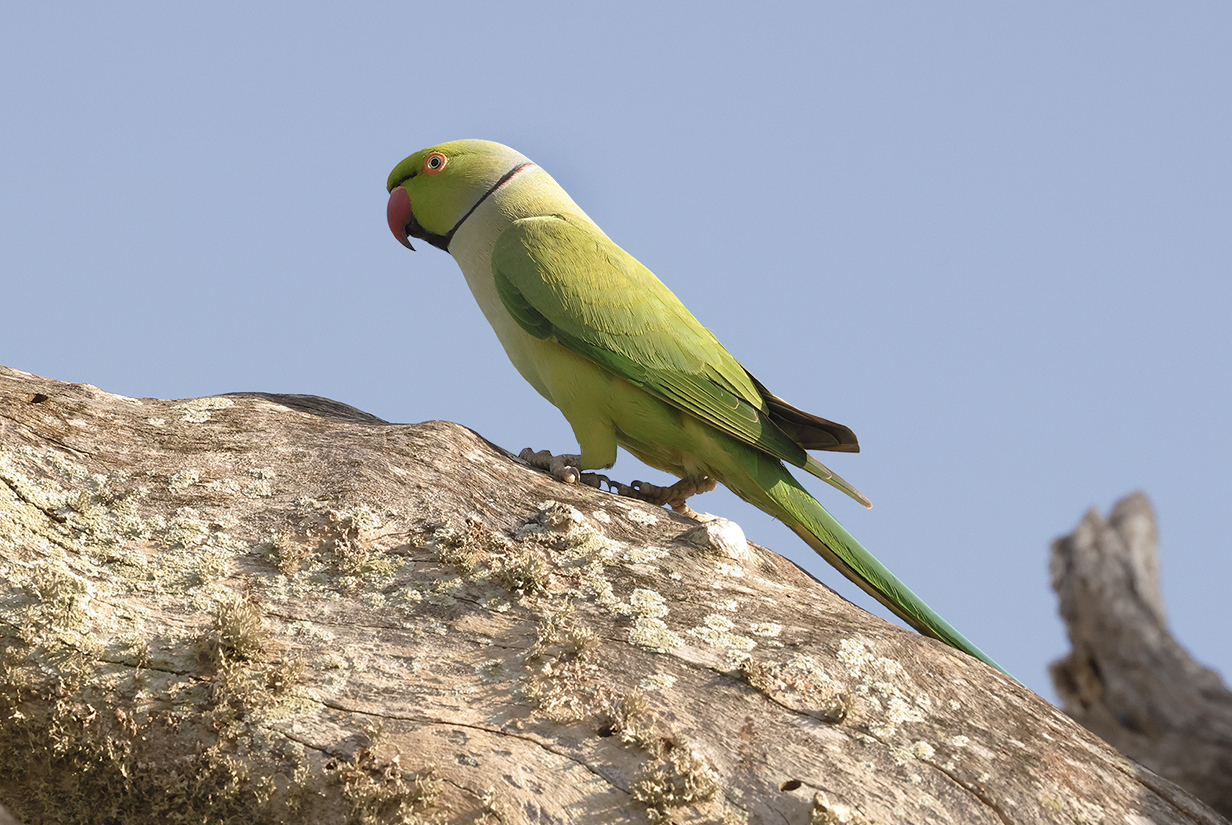
Rose-ringed parakeet (seen often)
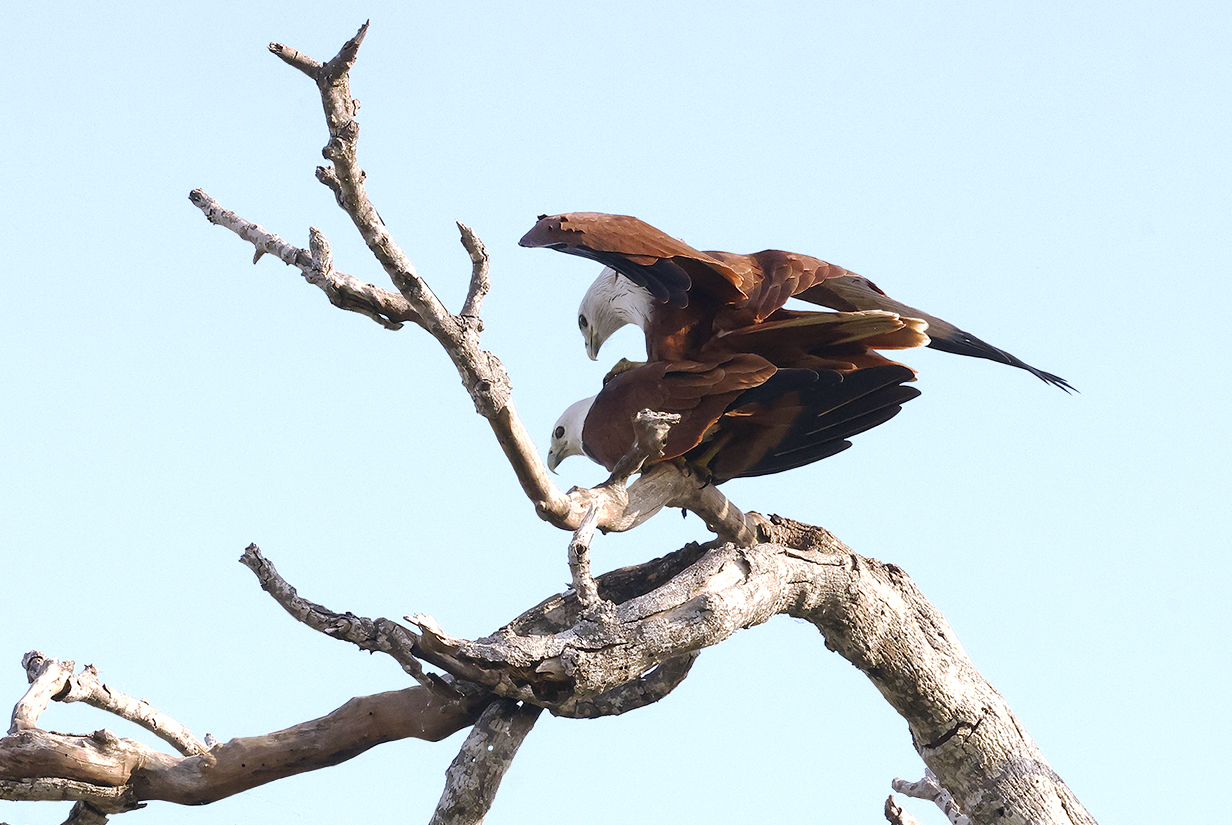
Brahminy kites mating
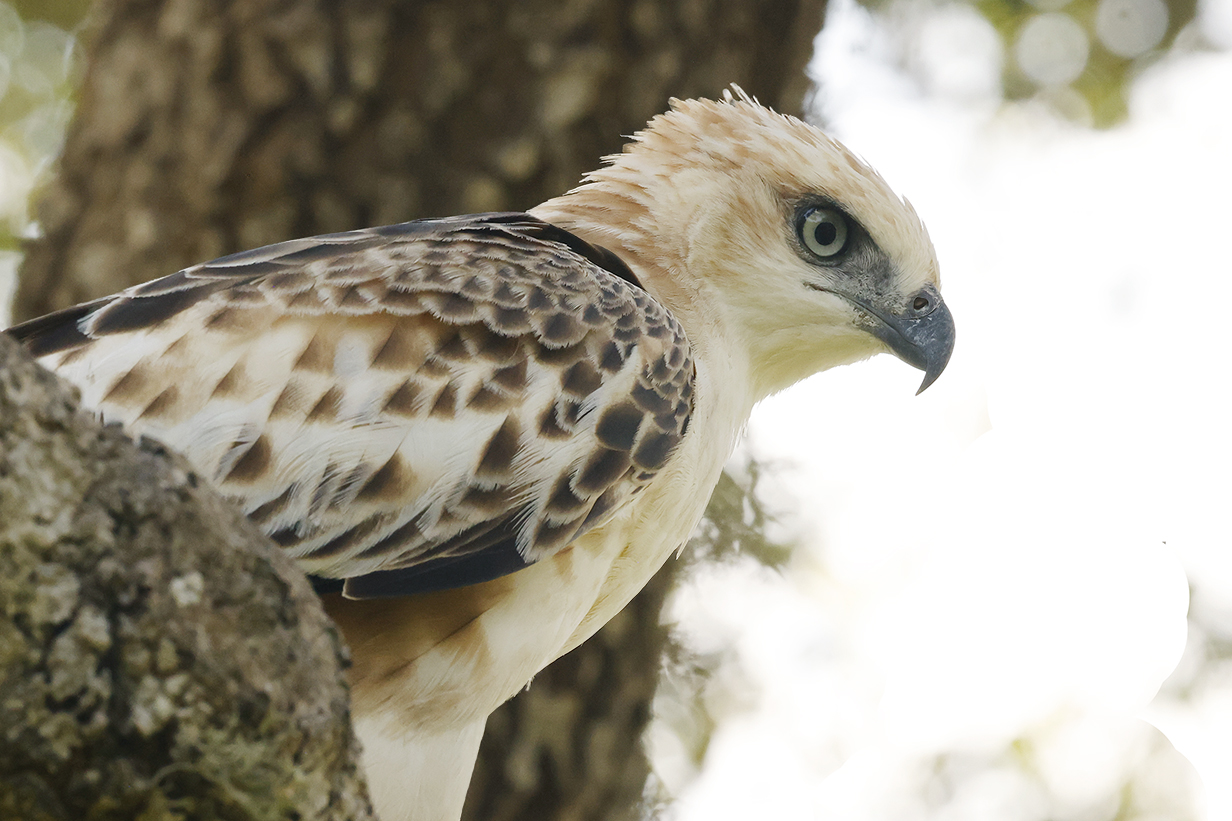
Changeable hawk-eagle (as called -- please let me know if you disagree)
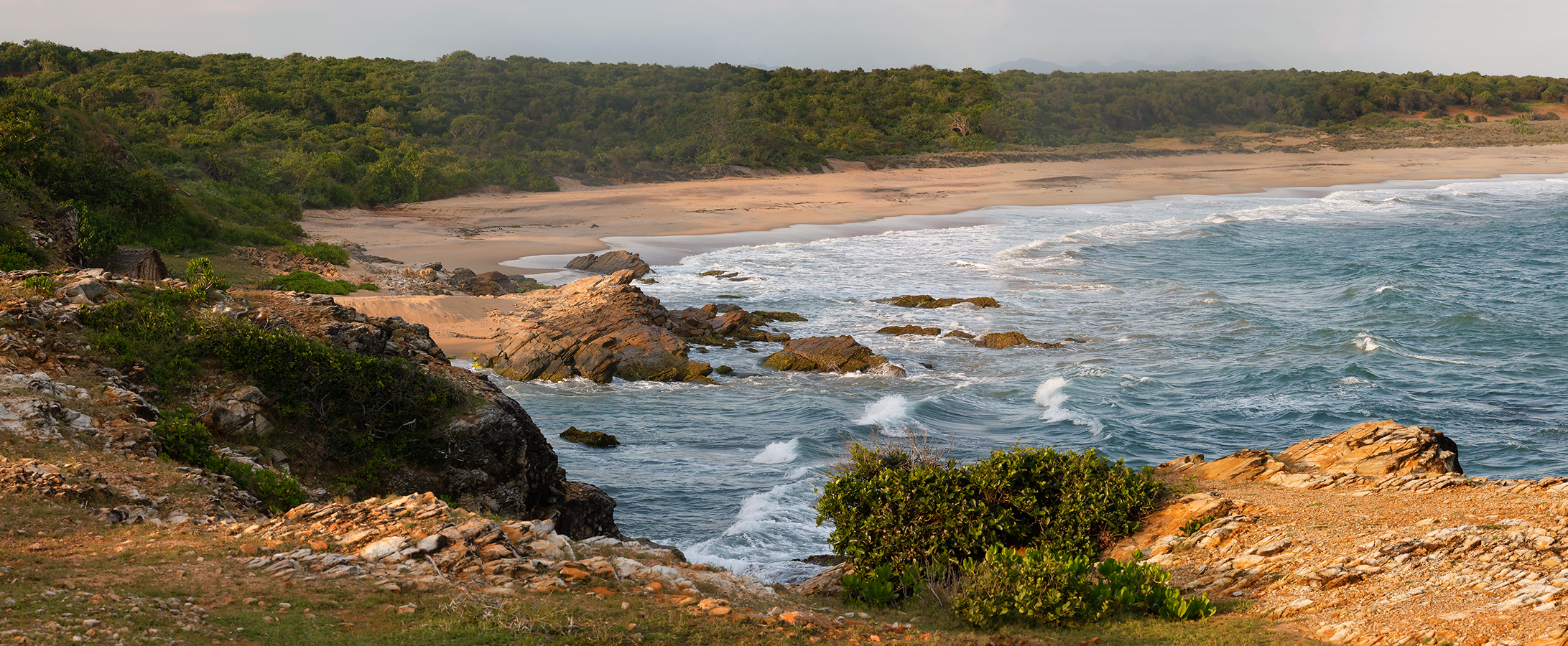
This is the turnaround point for our safari drive, at the Indian Ocean. Scroll right to see the full panorama.
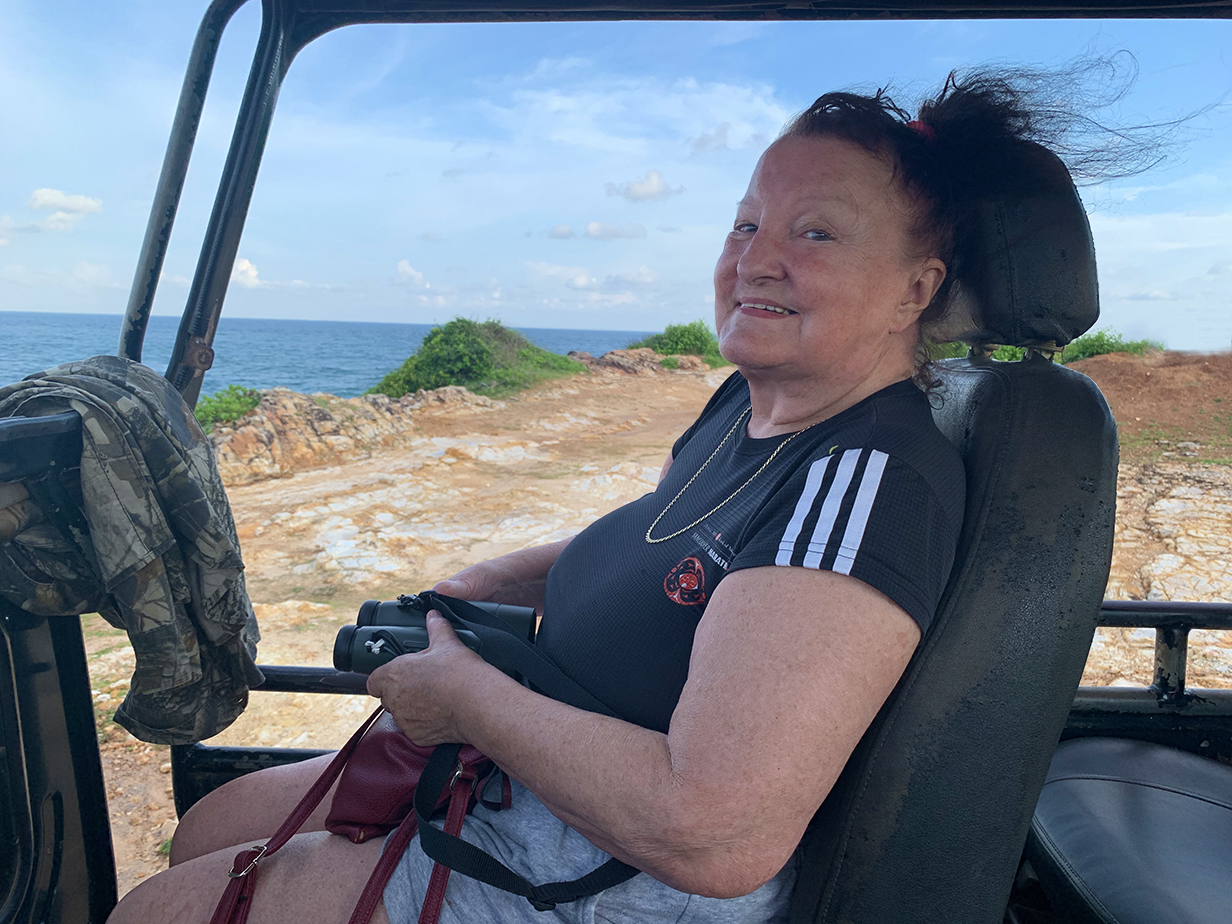
Mary having a great time at the turnaround point in our safari drive
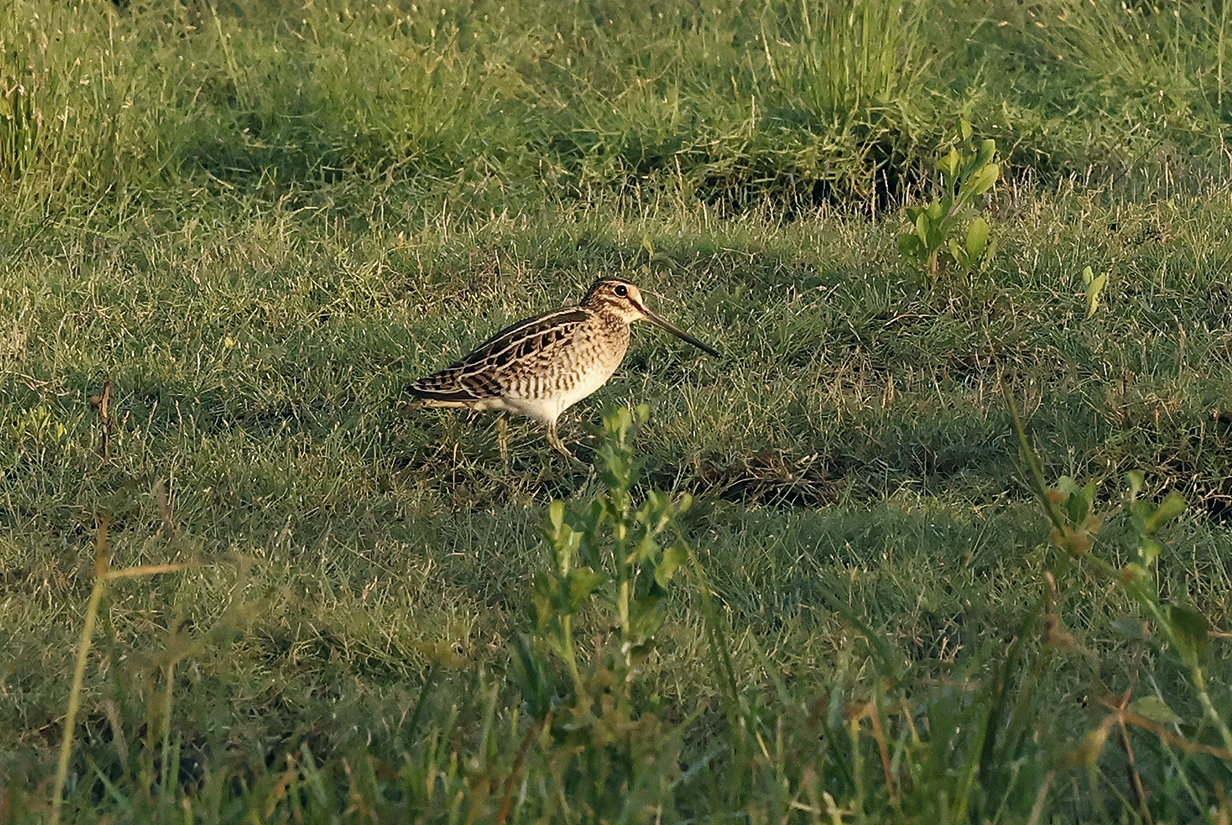
Pin-tailed snipe (This is our life bird.)

Indian peacock coming in for a landing. To the right are a Spotted dove and, behind it, the Barred buttonquail! The buttonquail is not alarmed by us yet, perhaps because of the histrionics of the peacock: it is sitting calmly in the road. The inset shows it at higher magnification.
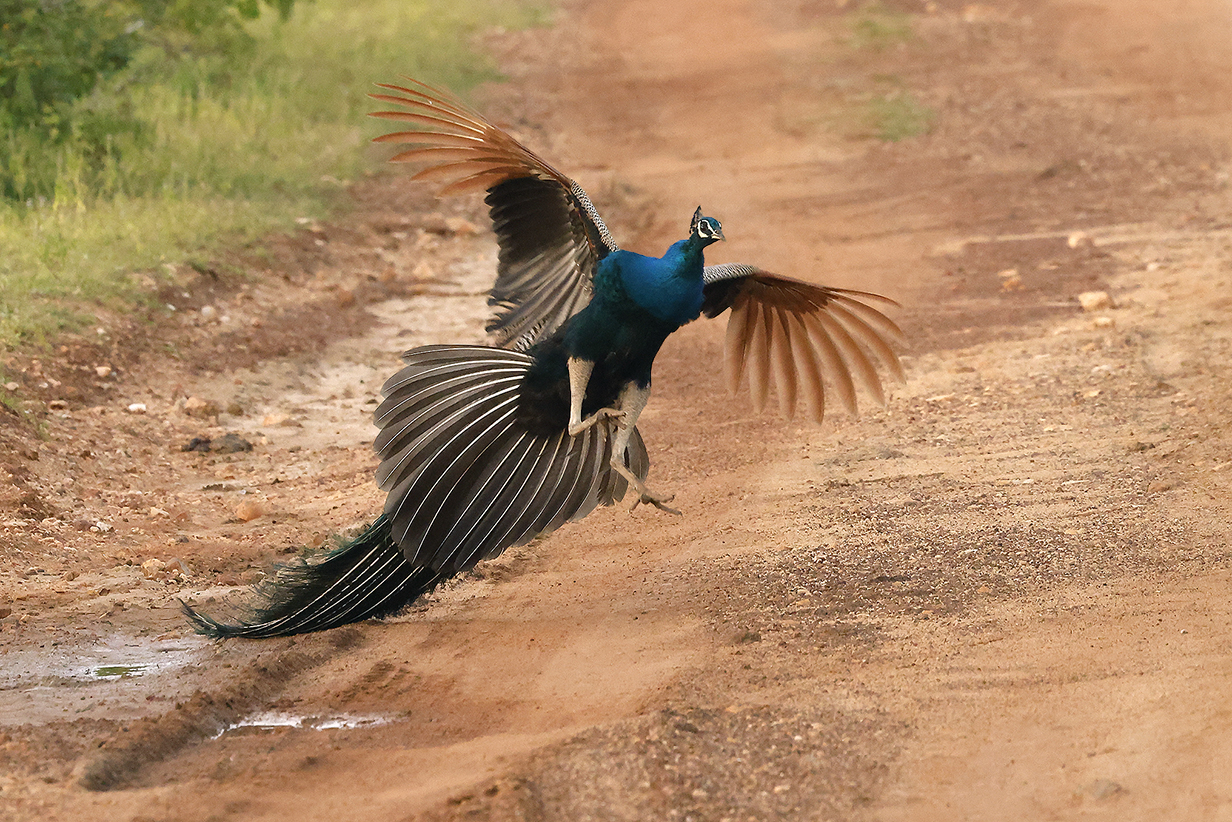
Indian peacock landing

Barred buttonquail (We saw it twice during the safari drive; this is probably our life bird, seen on the drive out. Buttonquails are among the most elusive of birds, so this is decisively our "trip bird" for Sri Lanka.
Day 10: Drive into the mountains to Newara Eliya
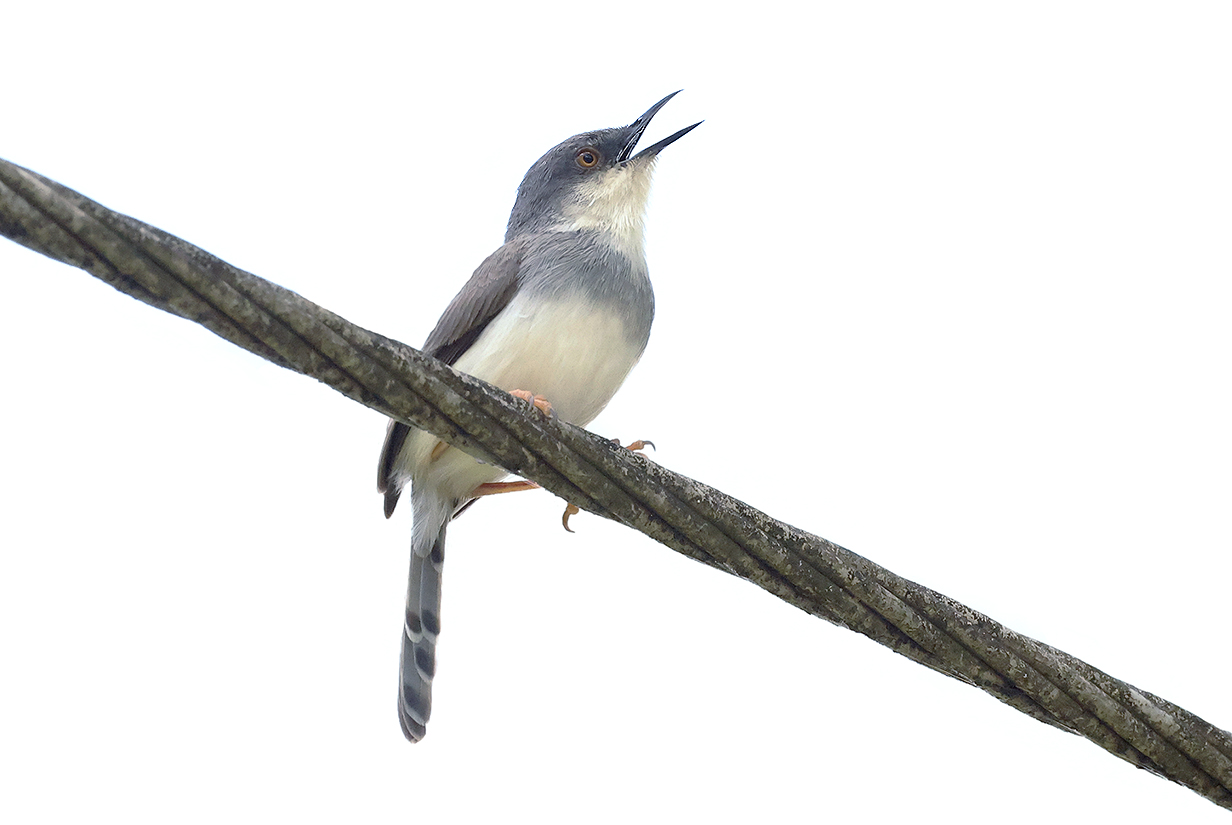
Gray-breasted prinia in breeding plumage (during the drive to Newara Eliya)
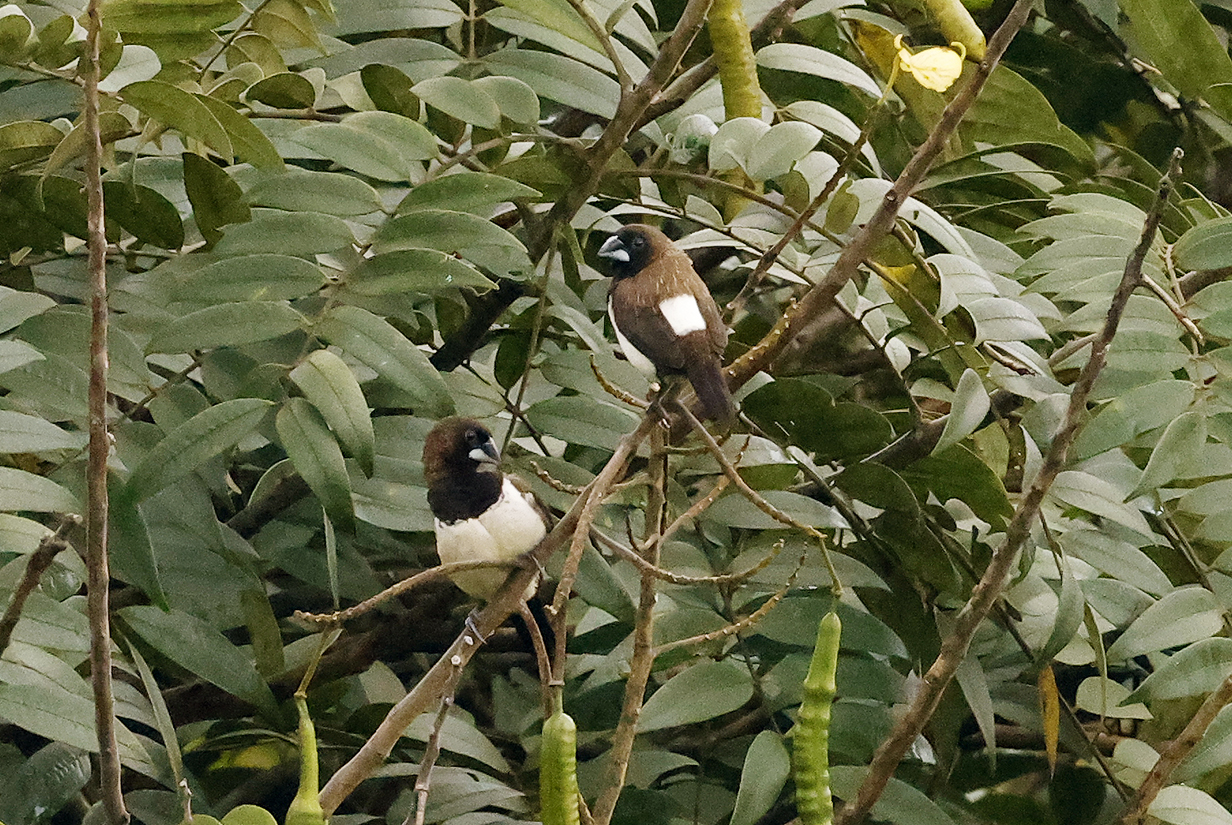
White-rumped munia
Days 11-13: Mountain birding out of Newara Eliya (~1890 m ~ 6190 feet altitude)
Newara Eliya is the hightest-elevation city in Sri Lanka and a center for tea plantations. The highest mountain in Sri Lanka, Pidurutalagala, with elevation 2524 m = 8281 feet, is nearby. We stayed here for 3 nights. The most important birding was in Horton Plains National Park, at about 2200 m ~ 7200 feet elevation, at a beautiful small lake (below) surrounded by a small patch of rain forest embedded in an otherwise scrub-vegetation plateau. Trouble was: it was foggy and rainy all day. That cost us important endemic birds.
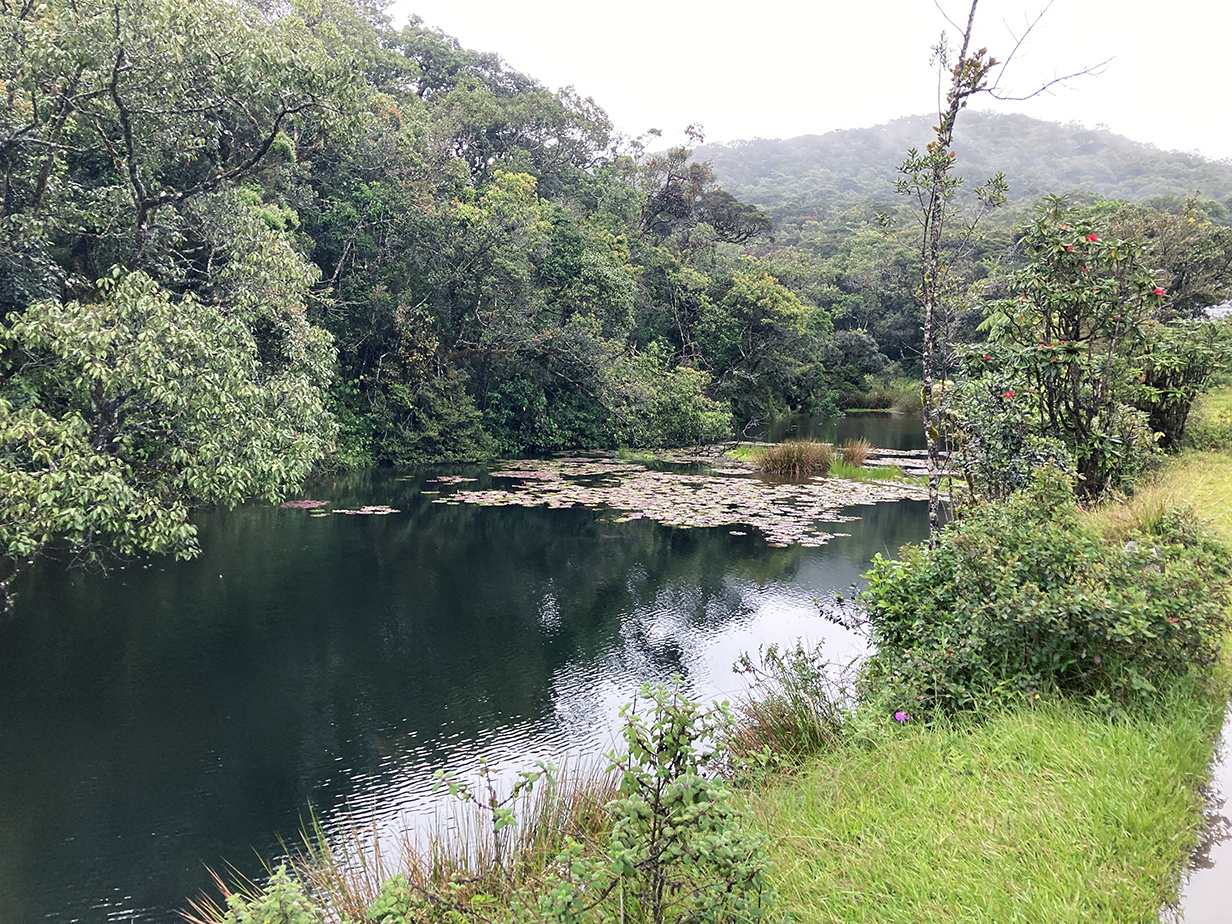
This was the "magic lake" in the rain forest at Horton Plains where we got Yellow-eared bulbul, Sri Lankan white-eye, and Dull blue flycatcher. We almost got Sri Lankan whistling-thrush -- I got a split-second glimpse of it in the rhododendron at right in this picture. But it vanished before we got takeable looks. We looked hard for Sri Lankan bush-warbler, but it never appeared. Fog and rain reduced visibility for most of our time here, but it was a beautiful spot and I wished we could have come back. This picture was taken by Jack Poll.
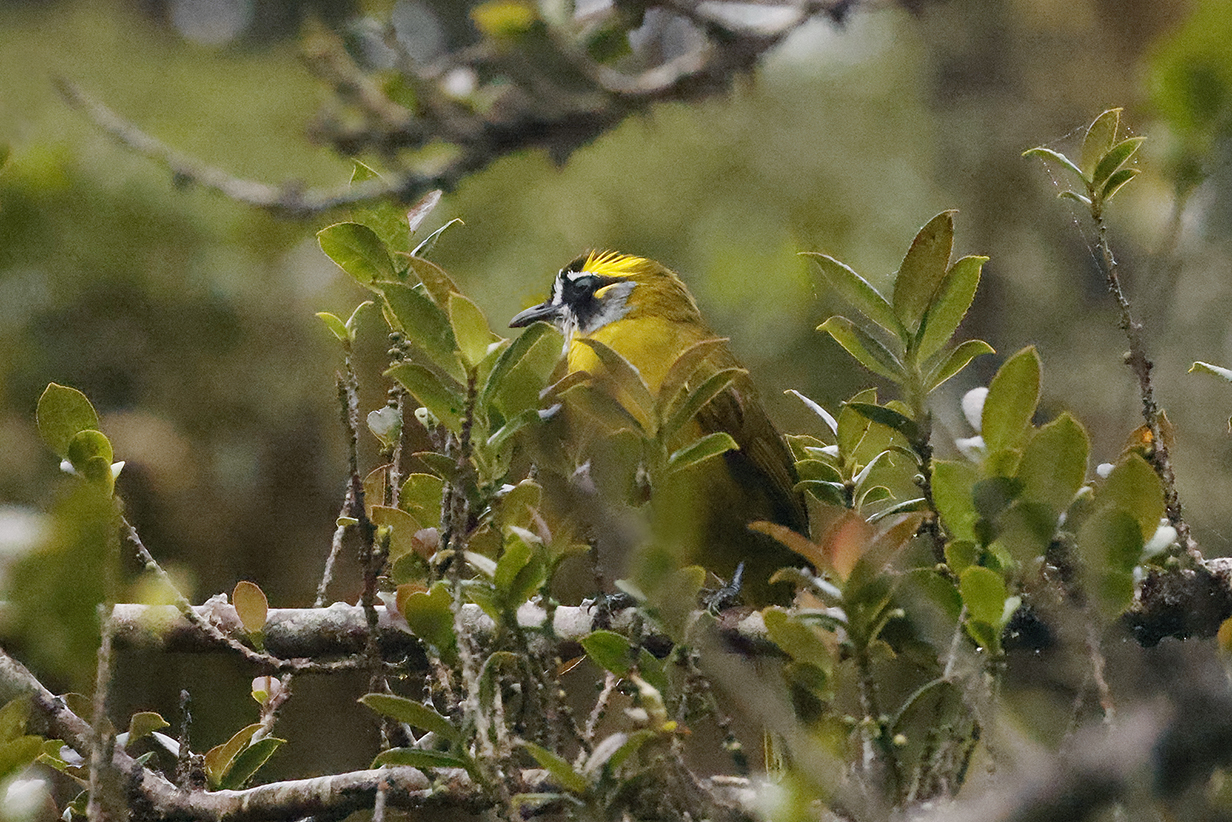

Yellow-eared bulbul (This Sri Lankan endemic is John's life bird, which he spotted at the "magic lake" in Horton Plains, during a break in the fog. We never got prolonged or good looks.)
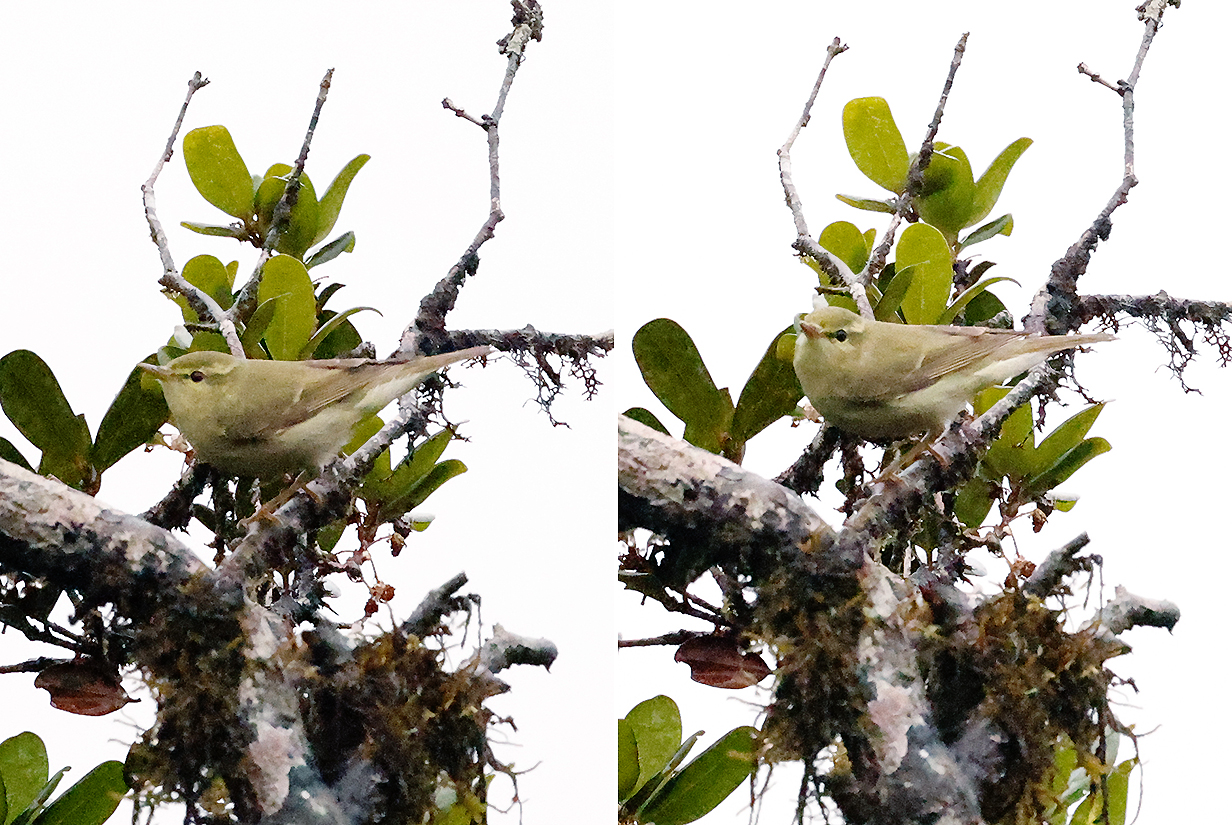
Green warbler (This is John's life bird ... but it is the most uncertain ID of the trip. Trouble is: Greenish warbler -- which would not be new -- and Green warbler look almost the same. We twice saw birds that we thought were Green (not Greenish). The first time was on Day 2 at breakfast at the Kitulgala Plantation Hotel. There, another experienced birder IDd it as Green. But we did not get a good picture. This was our second bird on Day 11, at the "magic pond" in Horton Plains National Park. If a warbler expert sees this picture and disagrees with our ID, please let me know at kormendy at mpe dot mpg dot de. Thank you.)
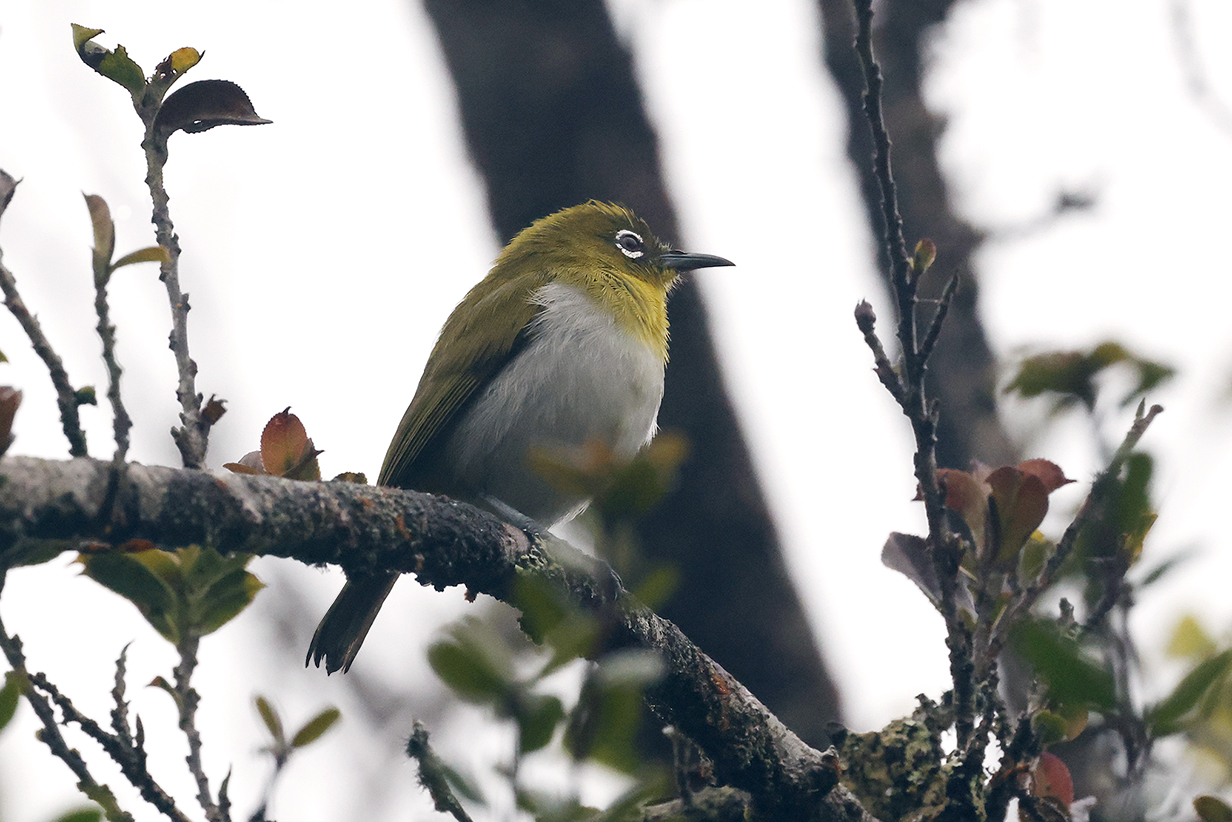
Sri Lankan white-eye (This is John's life bird. Note that the bill of this Sri Lankan endemic is longer and more robust than that of India white-eye as shown later in this web site.)
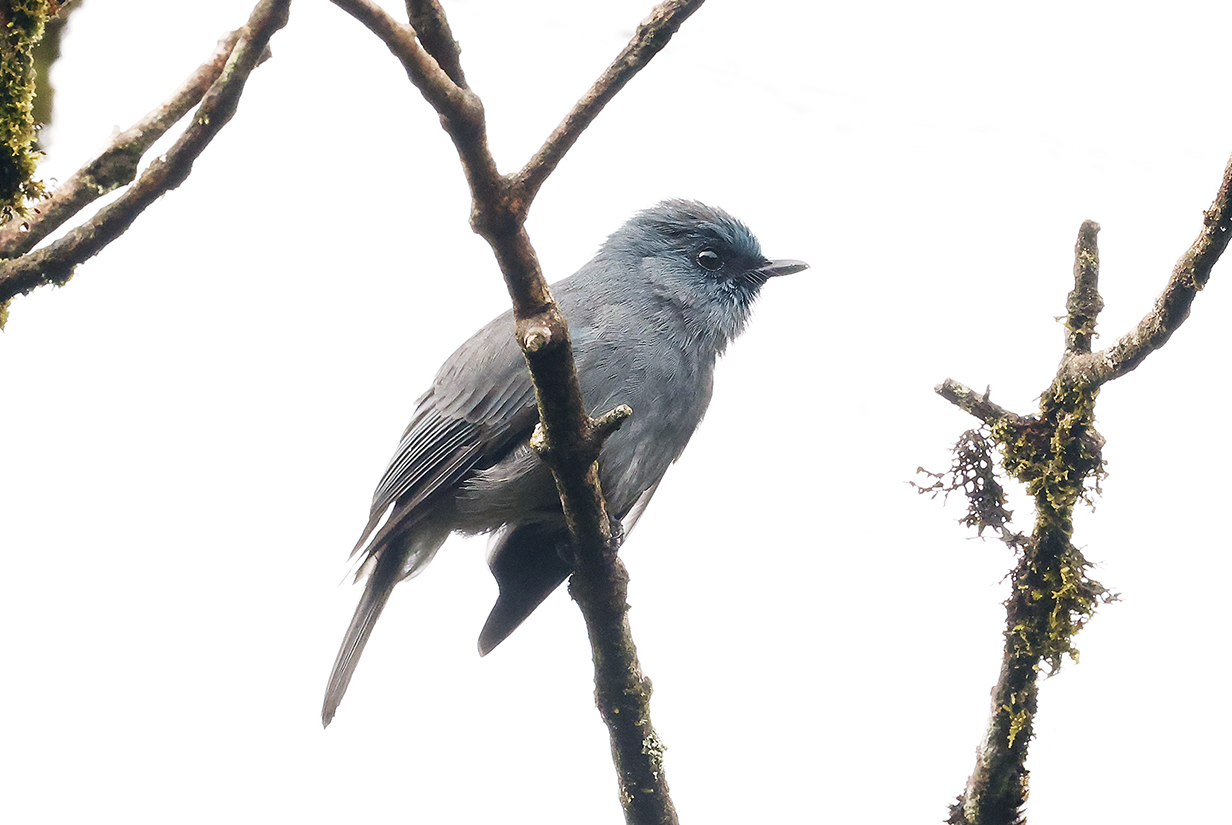
Dull blue flycatcher (This Sri Lankan endemic is John's life bird, again seen at the "magic lake".)
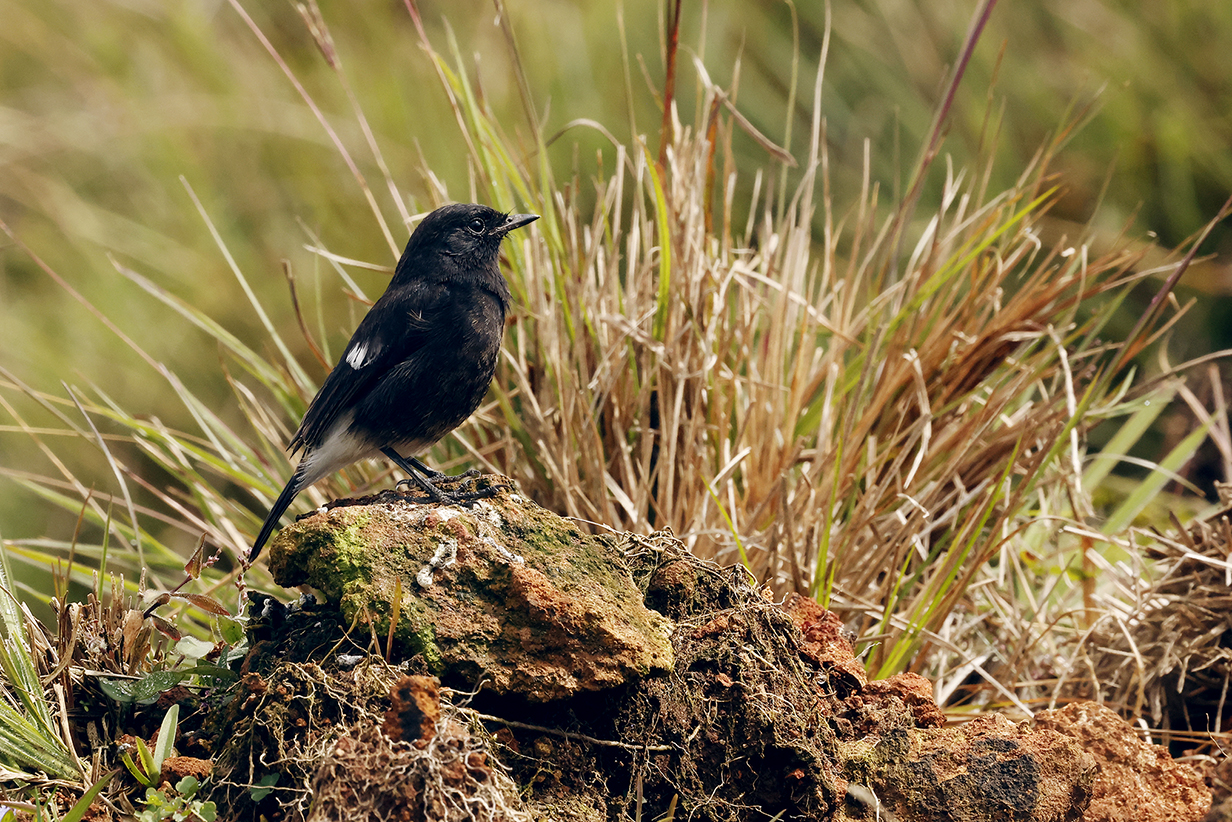
Pied bushchat (Horton Plains)
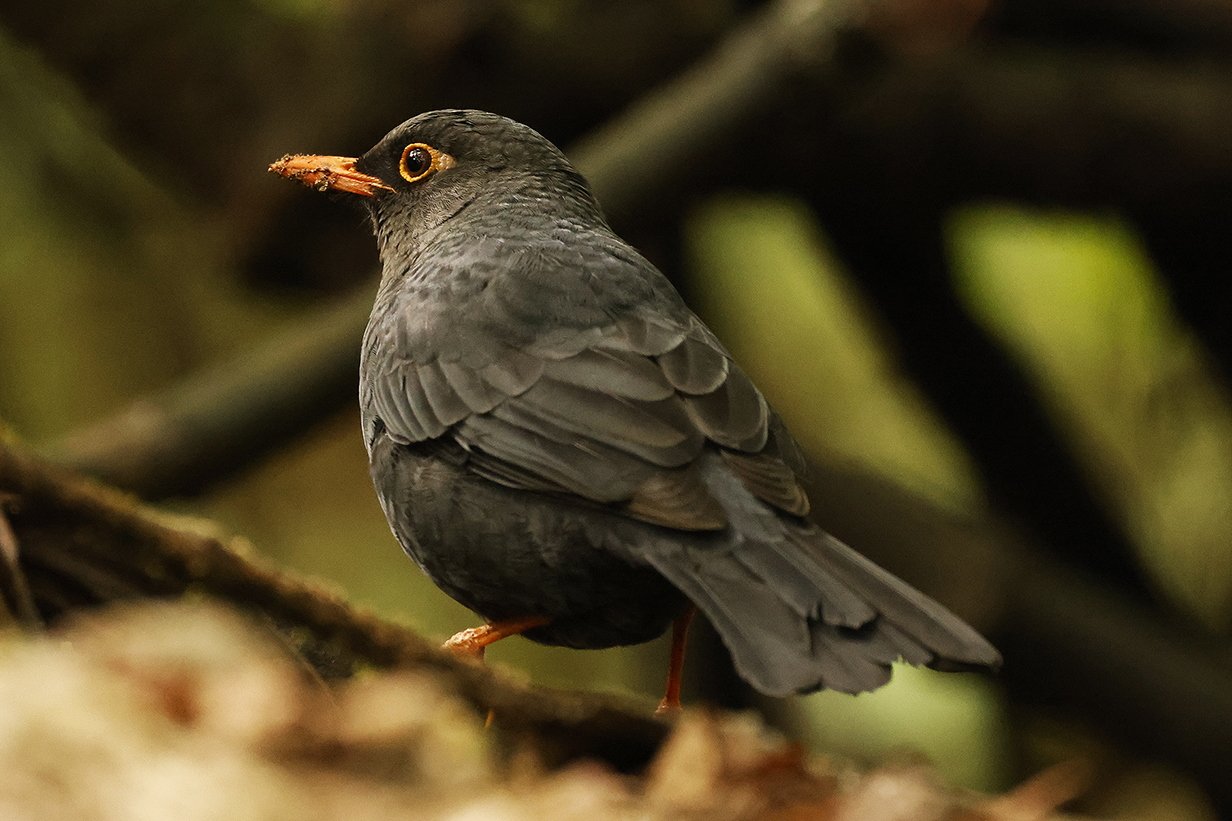
Indian blackbird -- Turdus simillimus, one of the many turdus thrushes found world-wide: it is a recognizably close relative of the Eurasian blackbird (Turdis merula), the American robin (Turdus migratorius), and many others. This one was in Newara Eliya and is John's life bird.
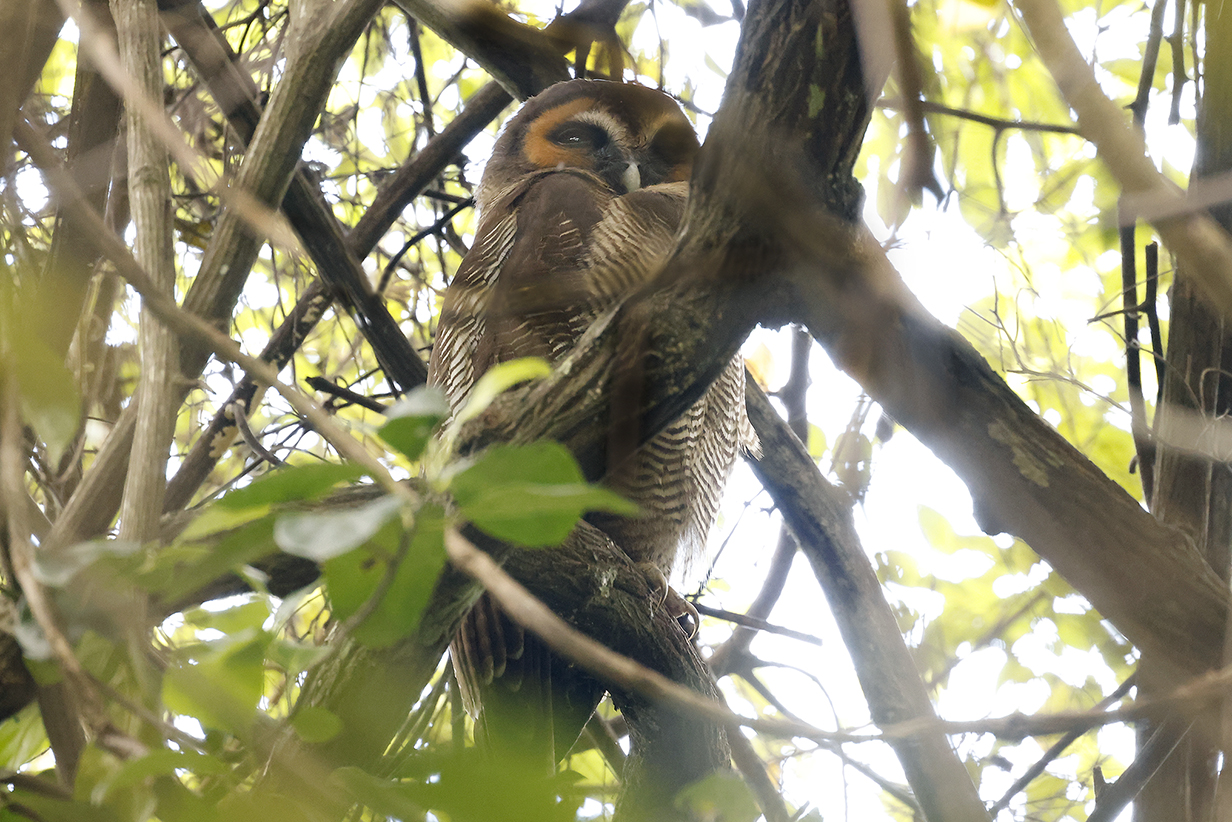
Brown wood-owl (This is John's life bird. It required a long and difficult scramble down and up and down forested gullys, "whacking bush", with the help of a walking stick. Our guide thought that I could not make it ... but I was determined to see this rare and elusive bird. The owl that our guide had checked out earlier had moved further into the canopy, and I could not see it. We gave up and were on our way out when a "local local" guide from the Surrey Bird Sanctuary found a second roosting bird. This is it. There is no hiding the fact that even this bird sat behind several branches. I've done the best that I can to minimize their effect, but they do cover one of the bird's eyes. Still, it was very satisfying to get this bird. Owls are always special.)
Day 13 = 2023 November 30 was our last day of birding in Sri Lanka. John got 50 new birds and Mary -- who could not do all the outings -- got 26. John saw 23 of the 34 Sri Lankan endemics. Mary saw 8.
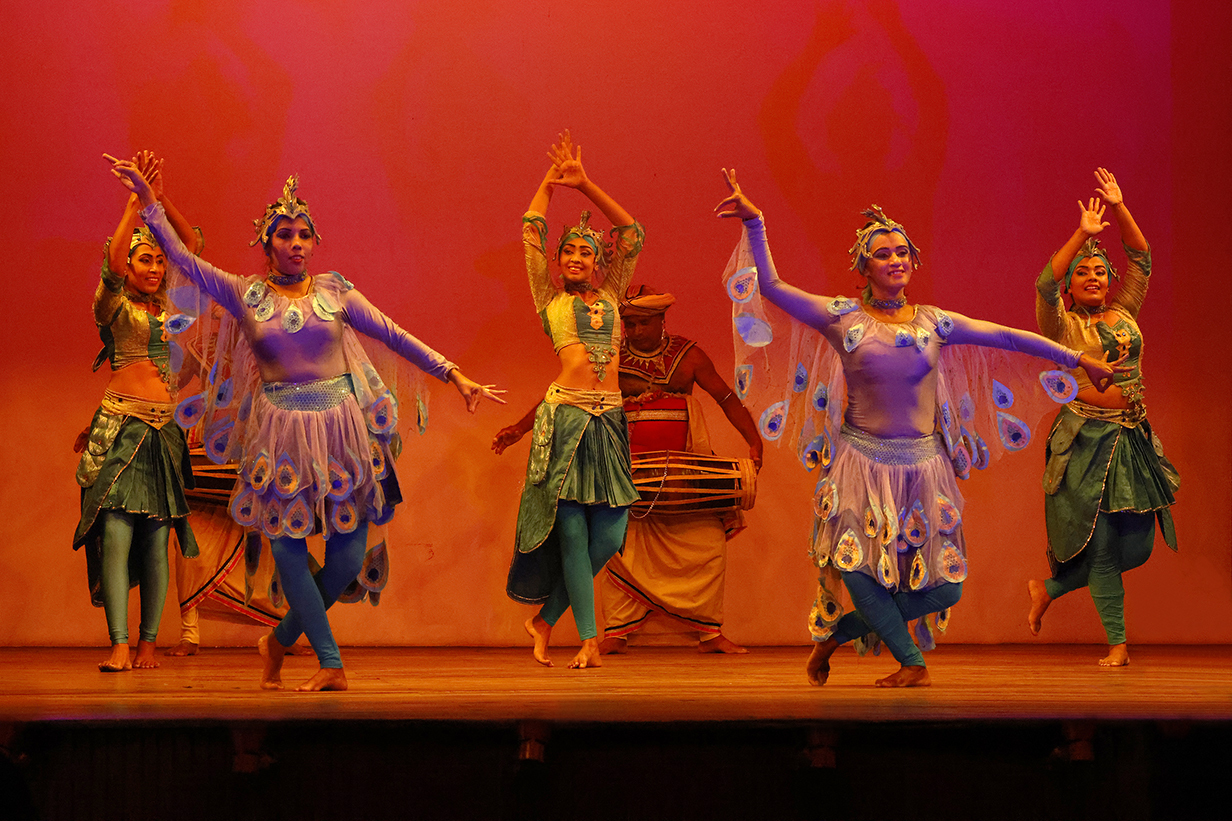
On our last night in Sri Lanka, we were treated to a performance of folk dancing -- at times sensuous, at times warlike, but always graceful, colorful, ... and loud.
On Day 14 = 2023 December 1, we were taken back to Columbo, from which we flew to Delhi. We then had a full day of rest in the luxurious Radisson Hotel.
Part 2: Andaman Islands of India
On December 3, we flew from Delhi to Port Blair. The Andaman Islands are part of India but are much closer to Myanmar than to the Indian mainland. At 11.6 degrees north latitude, they are closer to the equator than Hilo, Hawaii (19.7 degrees north latitude). So the climate is tropically hot, humid, and -- it turned out -- rainy. In fact, the latitude of Port Blair is almost the same as that of Bangalore, India, where we went next. So this entire trip was very tropical. The only time that humidity and leeches were not a problem was the few days that we spent at altitudes of ~ 1 mile.
In Port Blair, we stayed for 5 nights at Hotel Bay Island. With good air conditioning, it was very comfortable and a good place for Mary to rest when she was too tired to bird. (This is in contrast to our time, in summer 2022, in West New Britain, just east of Papua New Guinea: there, it was similarly sea-level tropical, but the hotel -- otherwise comfortable -- had no air conditioning. So there, Mary got bad heat stroke, whereas in the Andamans, we were comfortable at night.)
The Andaman Islands have 21 endemic bird species. John saw 18 of them, but Mary -- who felt wasted most of the time and rested a lot -- got 1. John also got several Southeast Asia species that stray as far west as the Andamans but that don't get to mainland India.
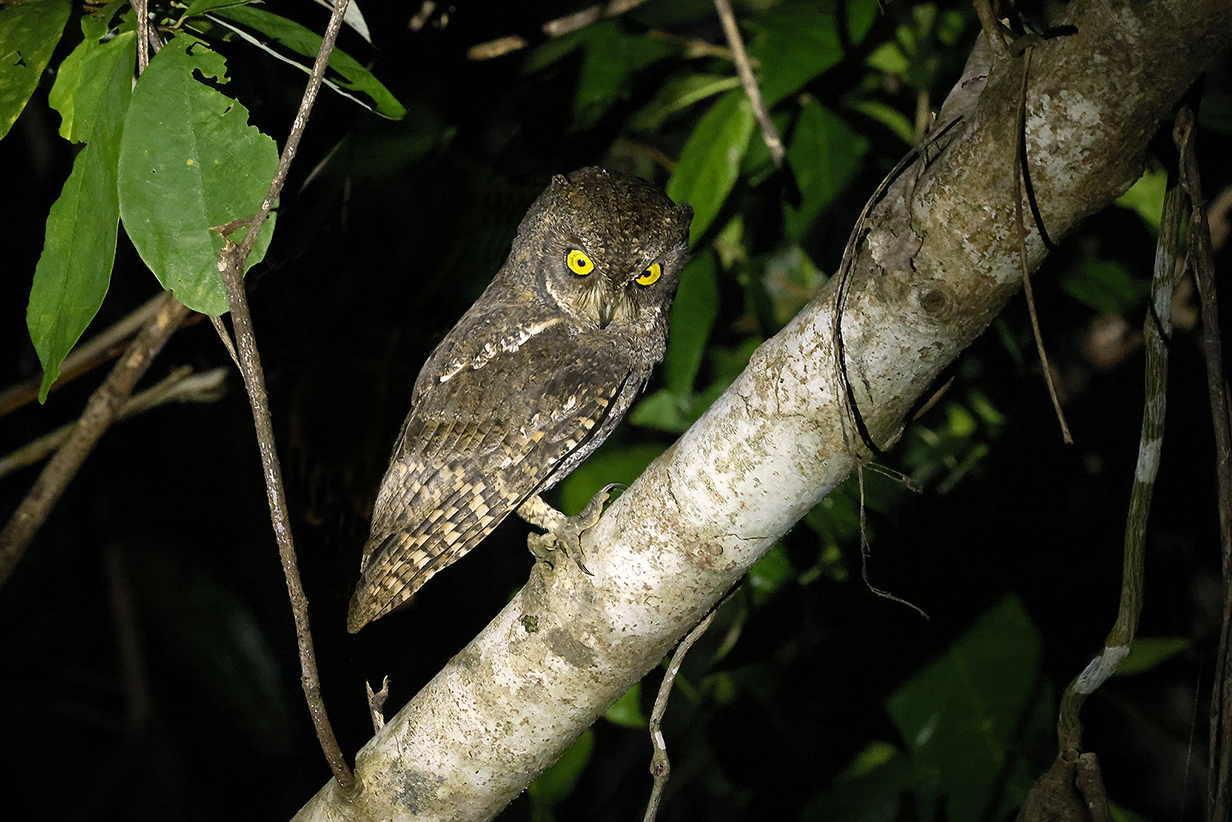
Oriental scops owl was the first of three owls that we got in night birding on Day 16 = 2023 December 3, the day of our arrival in Port Blair. All three were very easy! This one was not new.
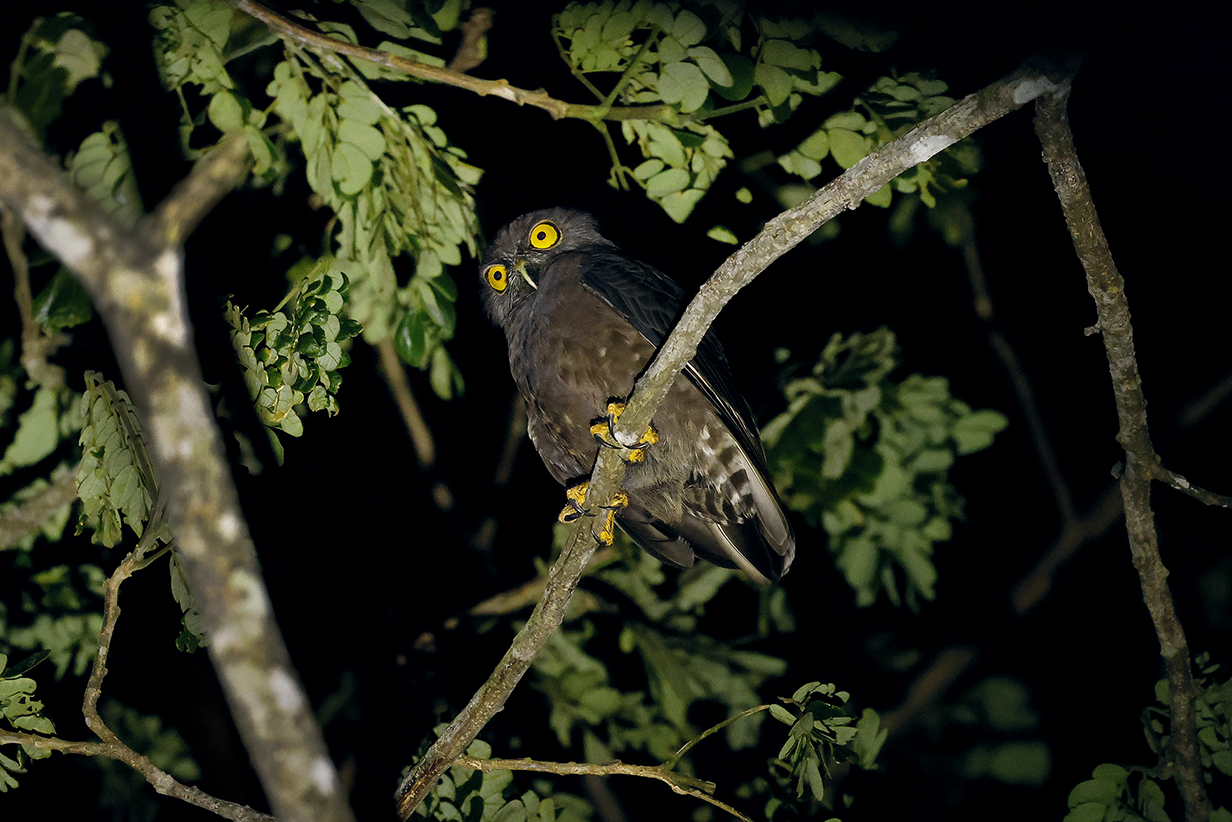
Hume's boobook (This Andaman Island endemic is John's life bird.)
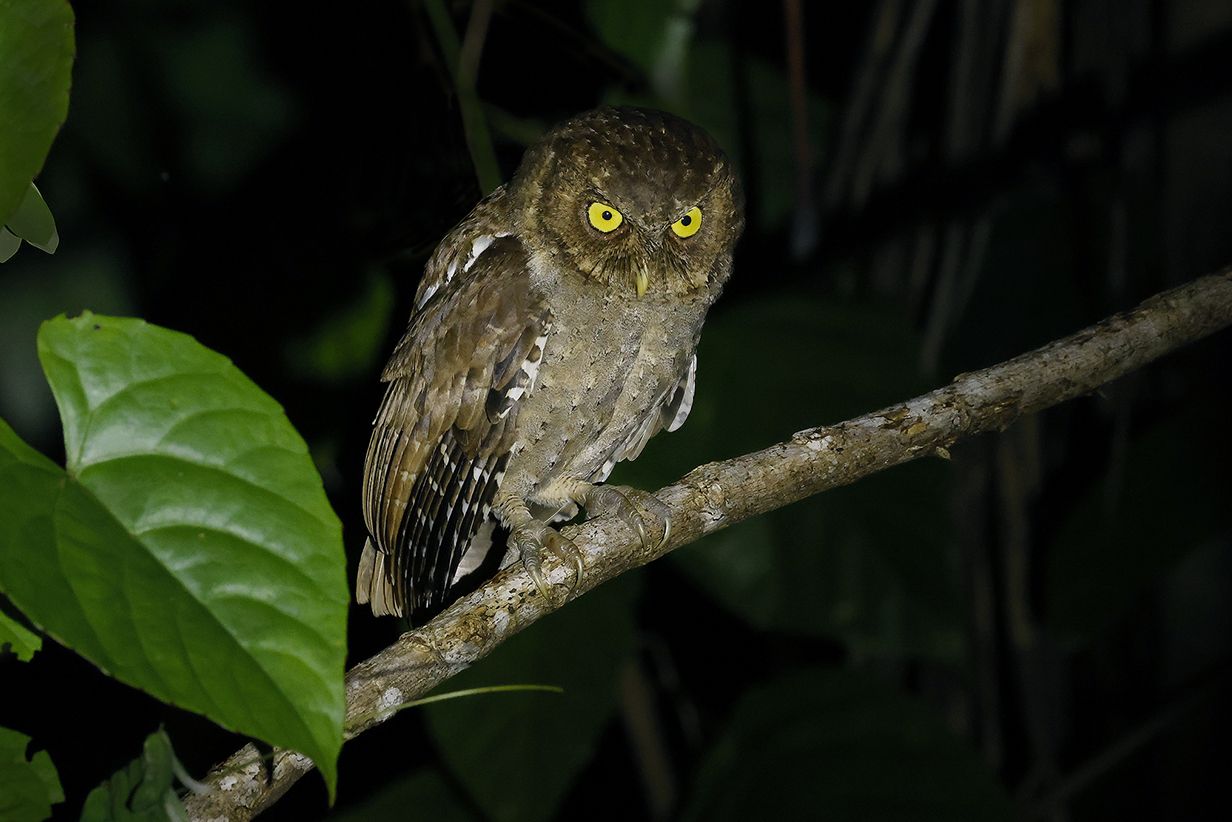
Andaman Scops owl (This Andaman Island endemic is our life bird. Contrast the yellow bill with the black bill of Oriental Scops owl, above. Also note the white spots on the wings. Three owls -- two of them Andaman Island endemic life birds -- were a great ending to a long travel day.)
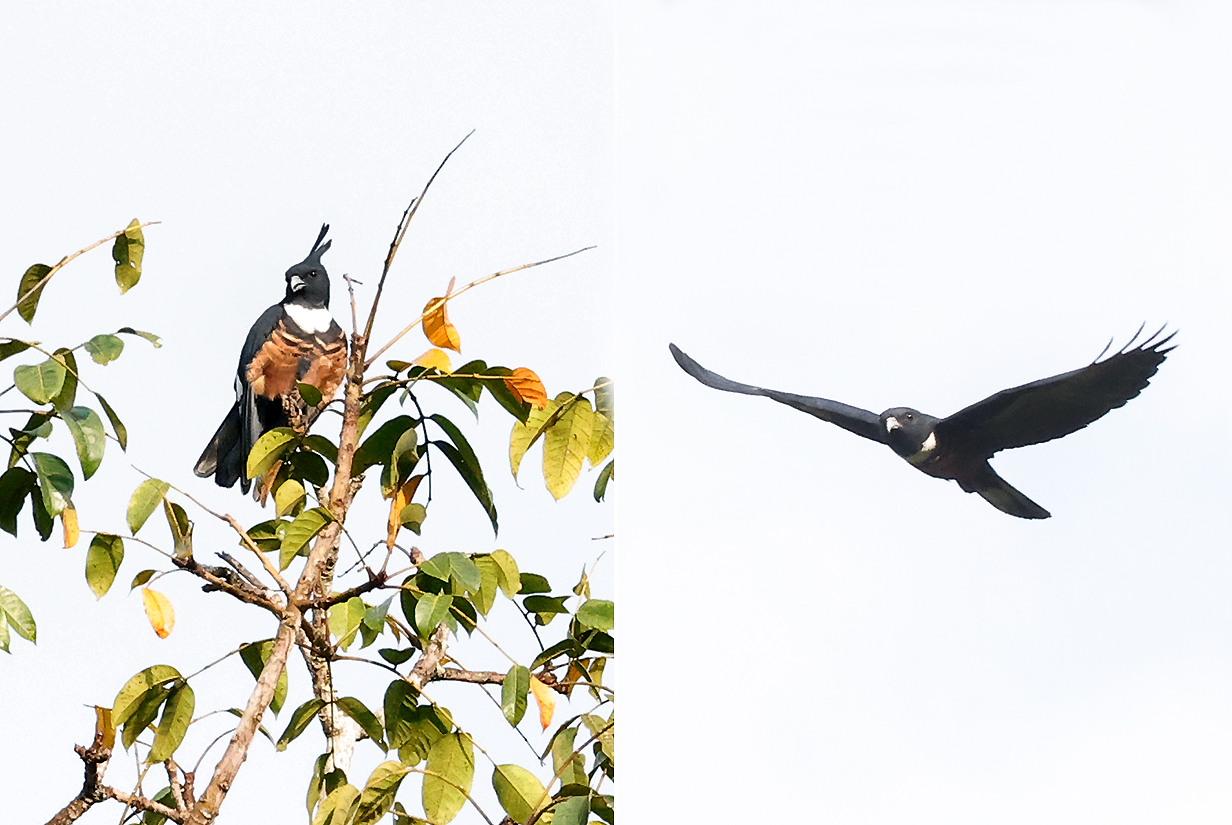
Black baza (This is John's life bird. Day 17 = 2023 December 4 was one of the most productive day of the trip for John, who got 10 life birds, eight of them Andaman endemics. This was despite intermittent rain all day, torrential in the evening. Mary was too wasted to bird, after yesterday's tiring travel.)

Andaman drongo (This is John's life bird -- an Andaman Islands endemic.)
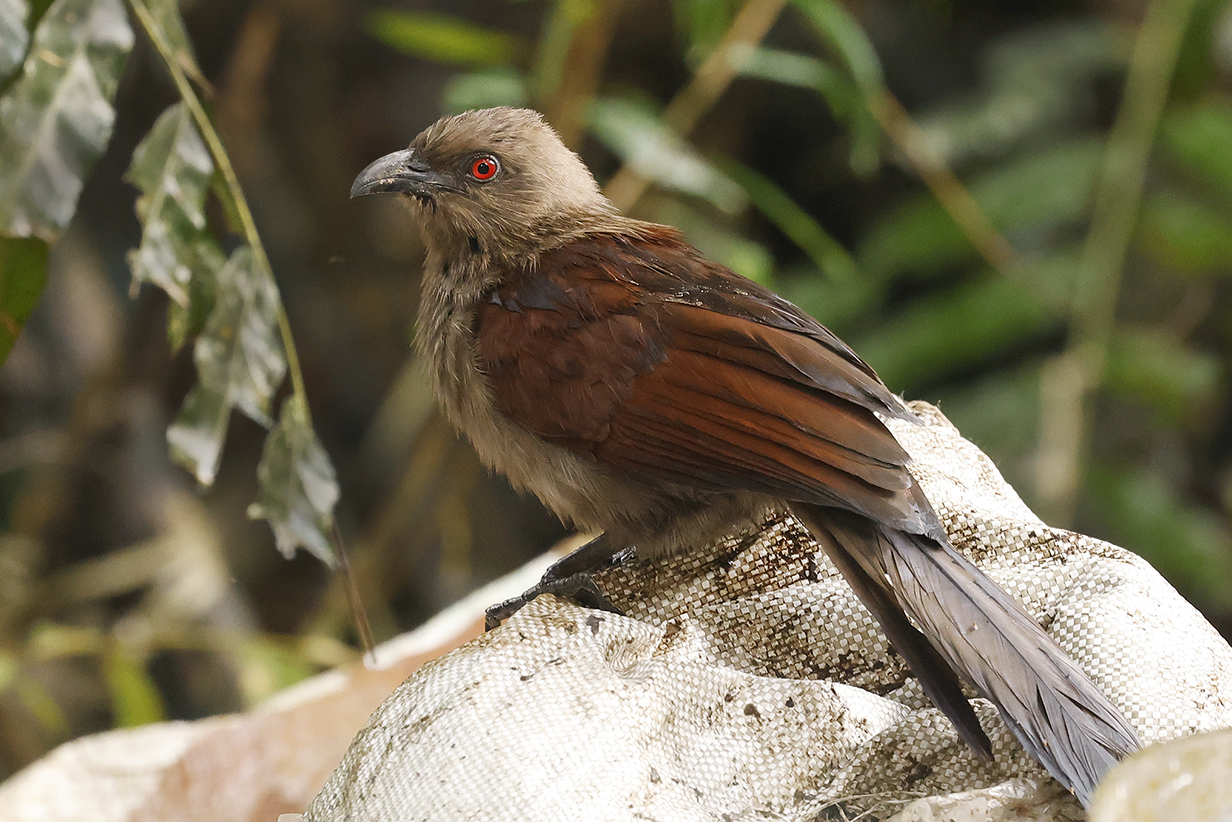
Andaman coucal (This is John's life bird. Unfortunately, it is inevitable that garbage dumps are often among the best places to get new birds.)

Andaman woodpecker (This brief look at John's life bird is the only one he got. It is another Andaman Island endemic.)
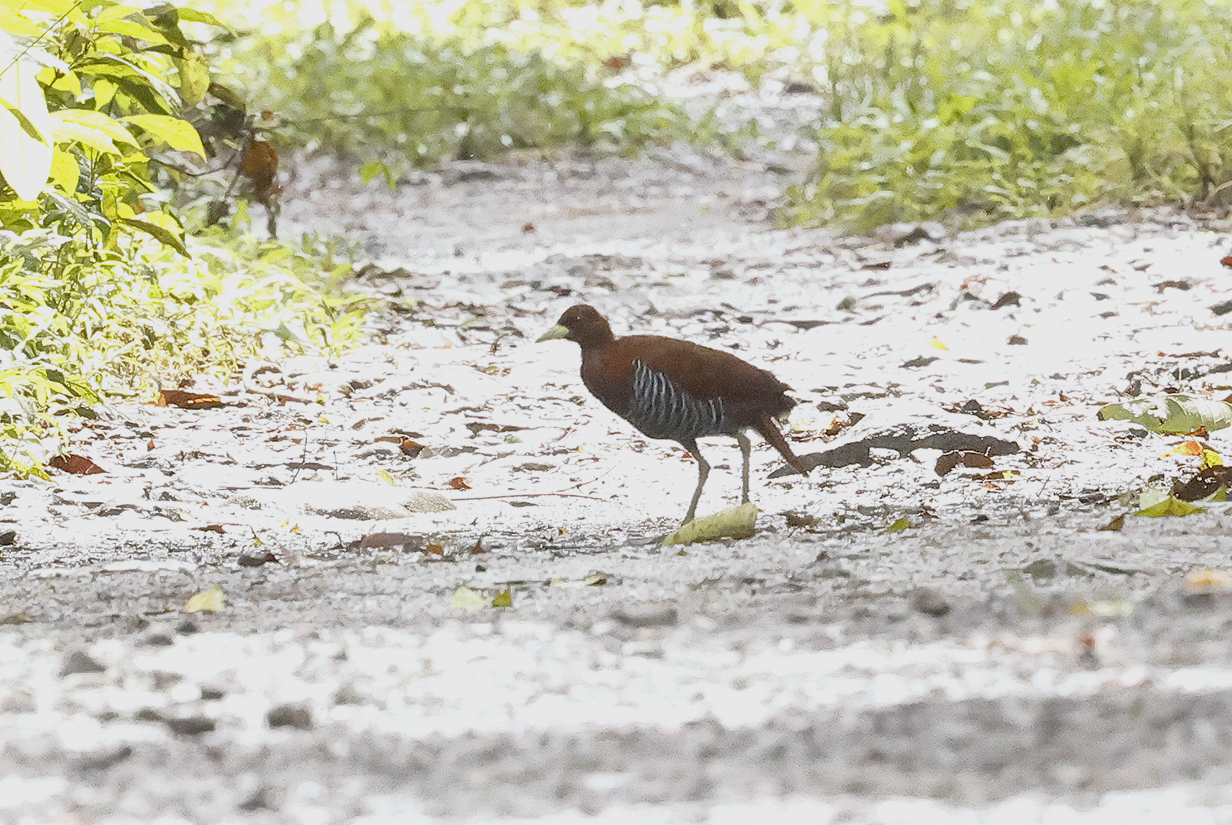
Andaman crake (We got only very fleeting looks at this always-elusive bird, as it ran across the road from dense cover to dense cover, always with the camera set wrong. This is an Andaman Island endemic and John's life bird.)
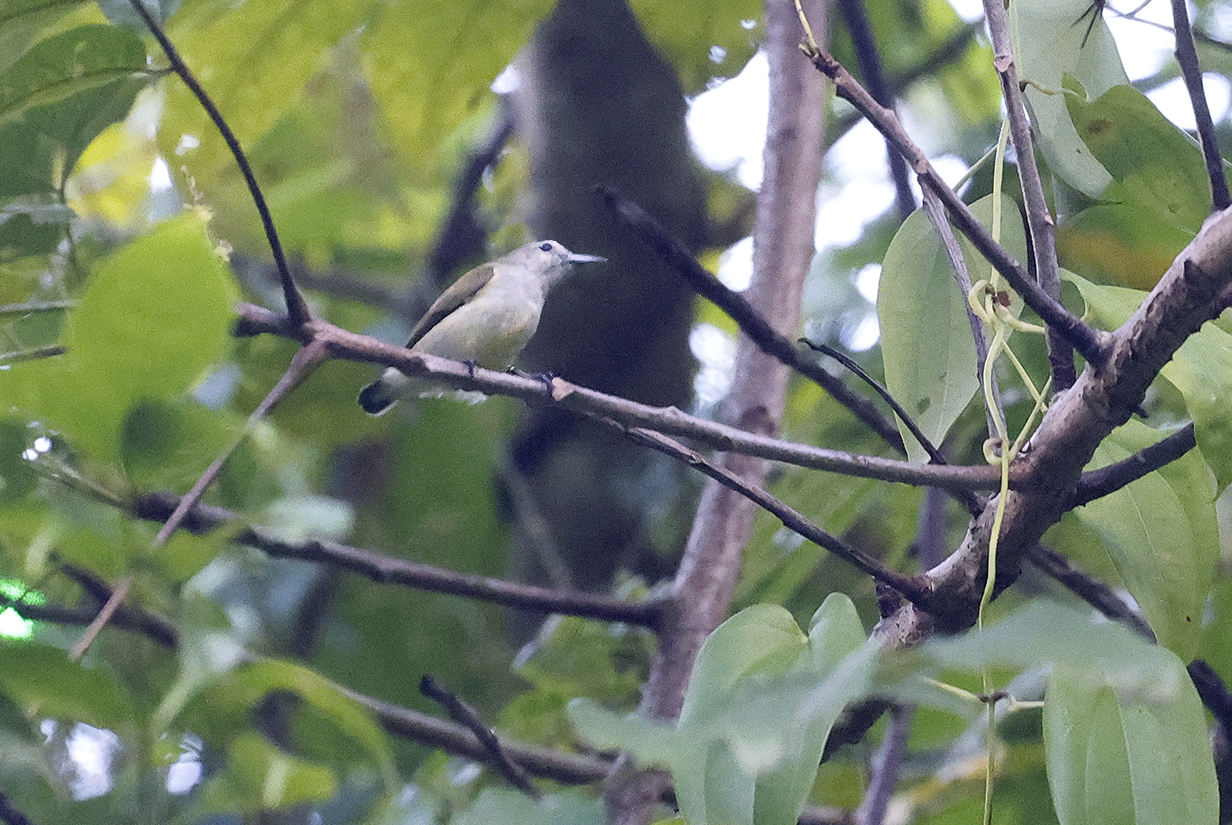
Andaman flowerpecker (Tiny bird, high up and far away ... but John's life bird of an Andaman endemic.)

Andaman boobook (This is John's 8th and last Andaman Island endemic life bird of the day. This was a spectacularly successful trip for owls.)
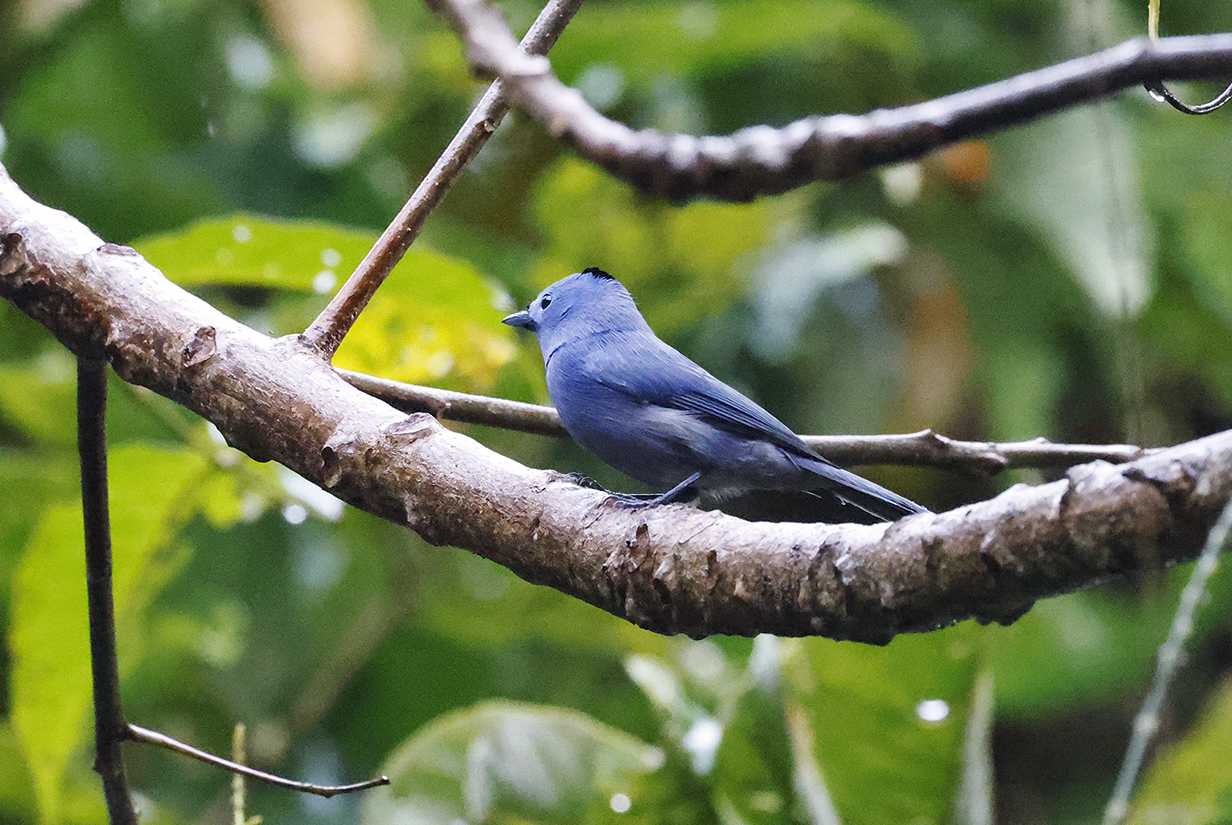
Black-naped monarch (a not very good picture of John's life bird -- the first of 13 on Day 18 of the trip)
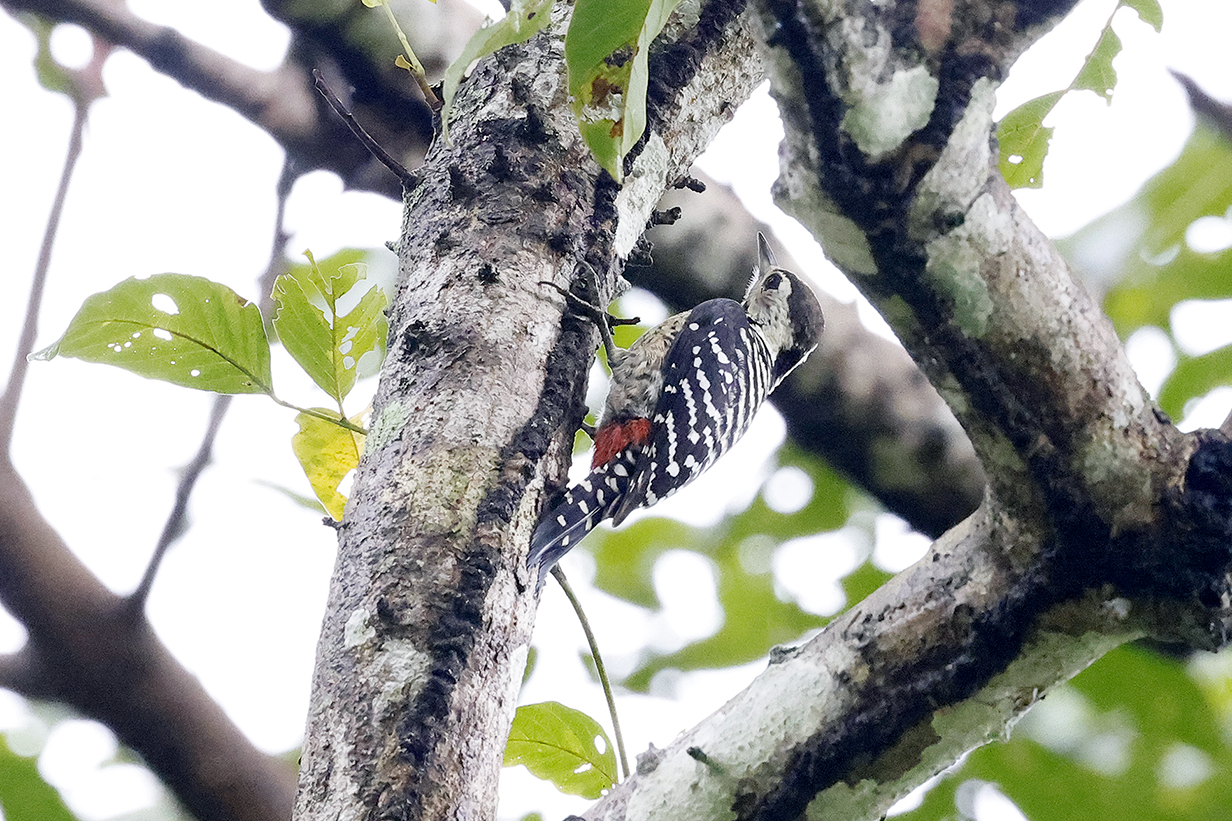
Freckle-breasted woodpecker (This female is John's life bird -- a good example of a new bird that, on this trip, could only be gotten in the Andaman Islands. This is a South-East-Asian species whose range is mostly in Myanmar to Vietnam and Indonesia but whose range extends west as far as the Andaman Islands.)

White-headed starling (This Andaman Island endemic is John's life bird. We never got a close look.)

Violet cuckoo (This female is John's life bird. The male is almost entirely violet, but the female looks like most other cuckoos. This is another bird whose range is mostly in South-East Asia, although it could have been seen during our three trips to easternmost India.)

Vernal hanging-parrot (These are John's life birds.)
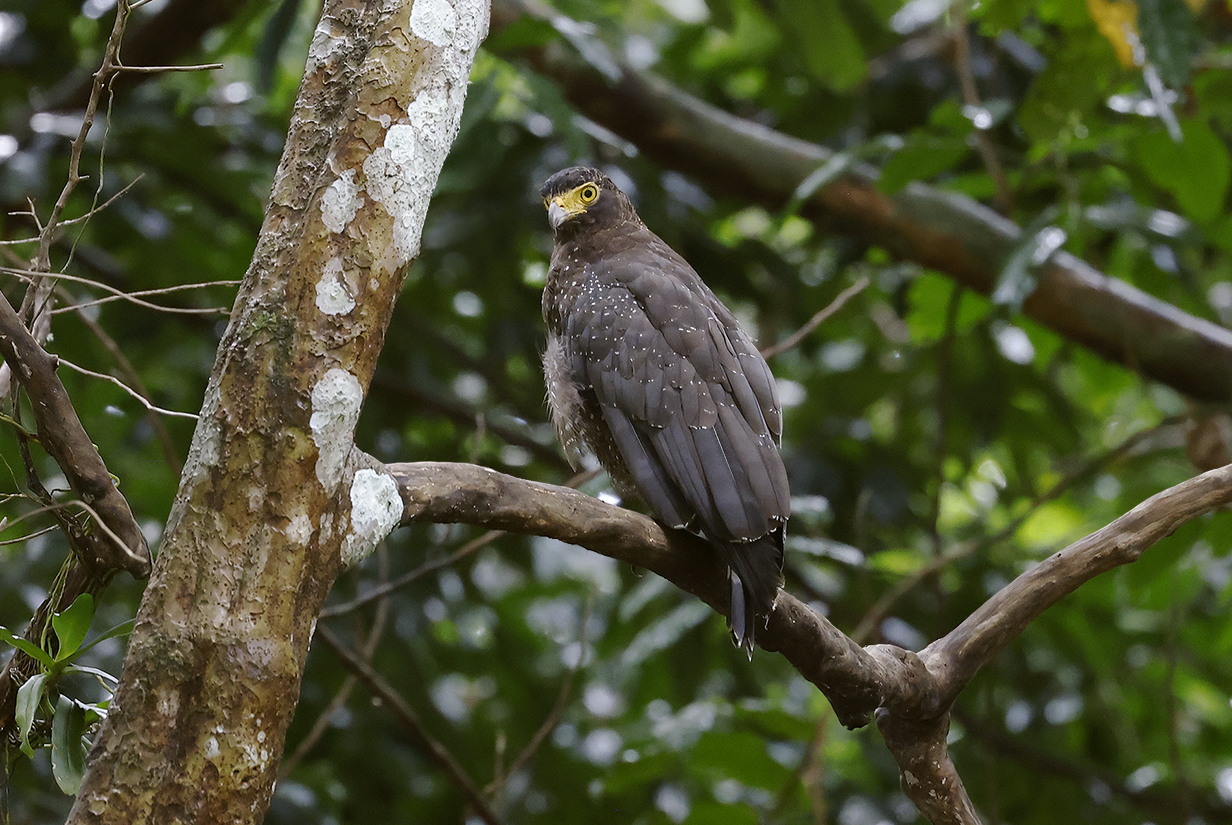
Andaman serpent-eagle (This Andaman Islands endemic is John's life bird.)
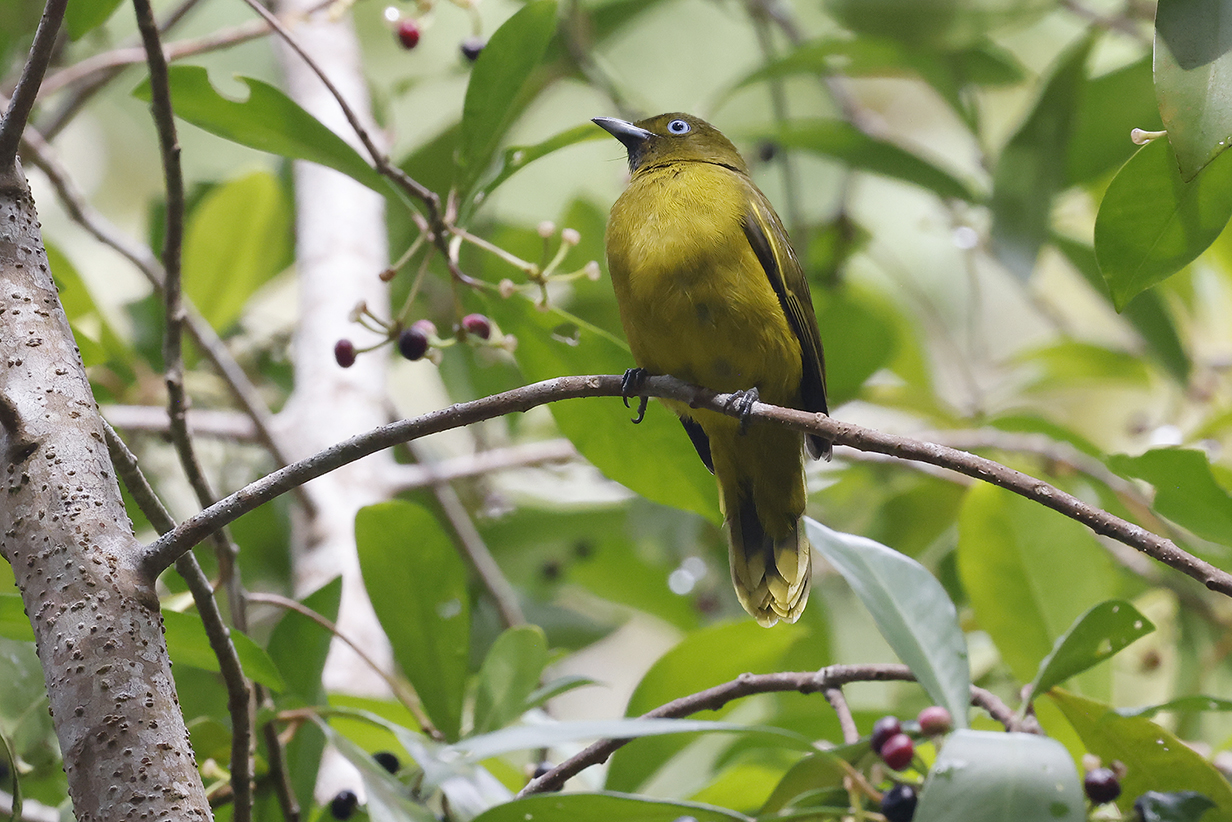
Andaman bulbul (another Andaman Islands endemic and John's life bird)
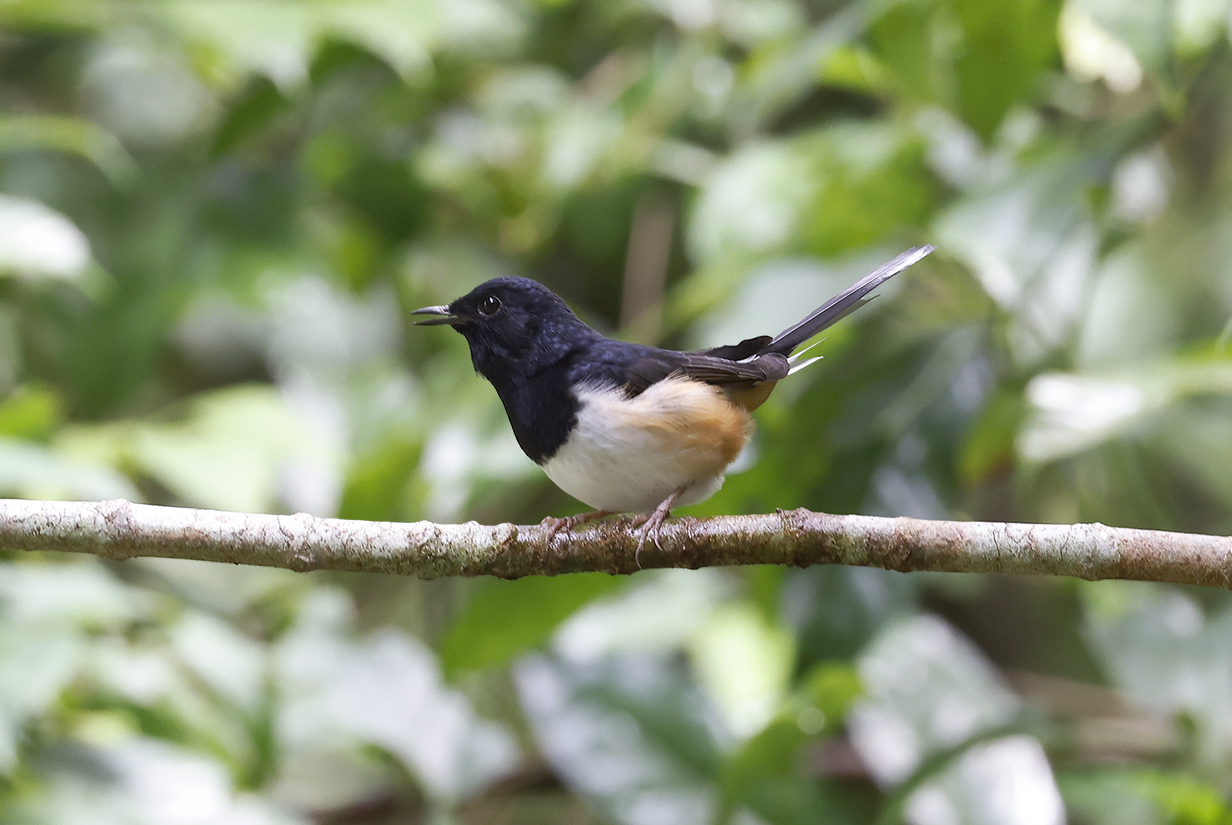
Andaman shama (This Andaman Islands endemic is shy but vocal, like its mainland-South-East-Asia relative, the White-rumped shama. With some patience, we got good looks. This is John's life bird.)

Andaman masked-owl is the Andamans' close relative of the Barn owl. We got easy good looks, because the bird was known to roost in the interior courtyard of a teachers' college. This is John's life bird.

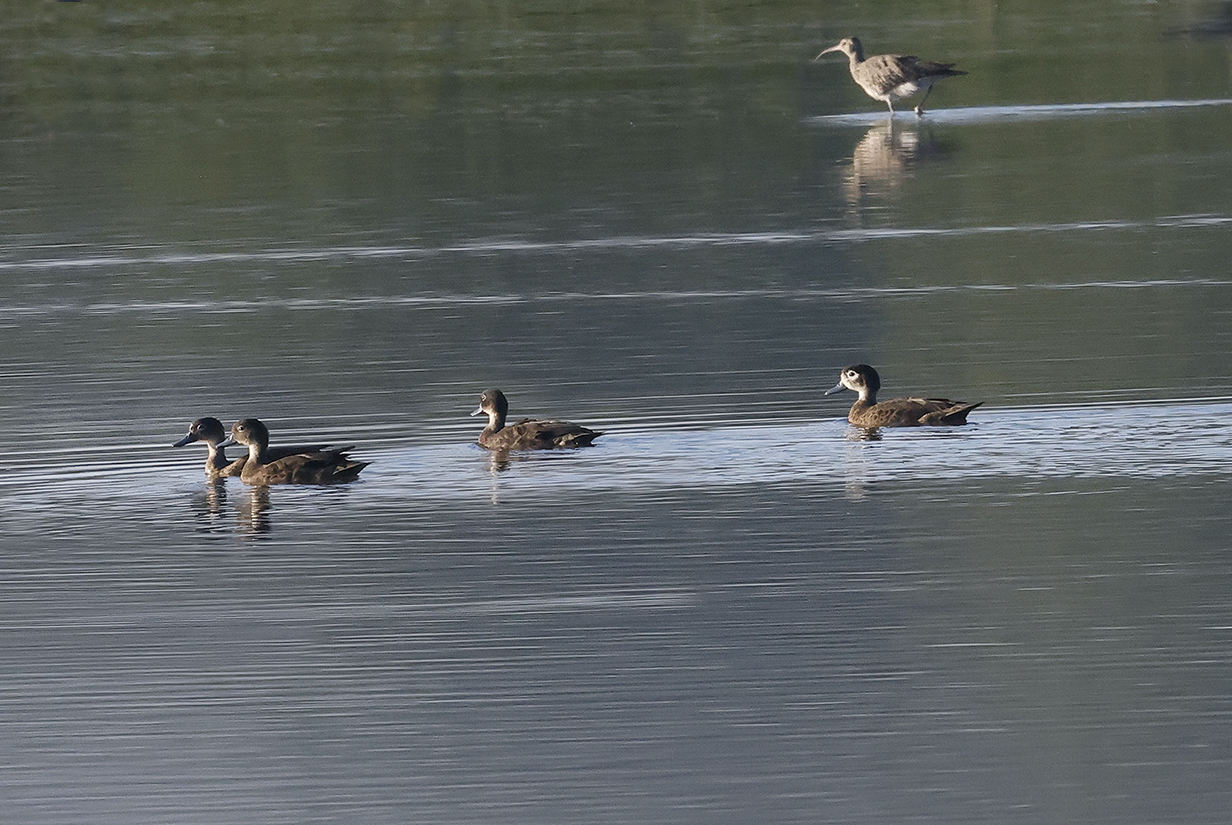
Andaman teal -- with the male's characteristic white face -- was the last of the 18 of 21 Andaman Island endemics that John managed to see. It was a "nemesis bird" for much of our time in the islands -- we looked for it often without success. Early during our last morning there, we finally got it in one of the many lakes where it regularly shows up.
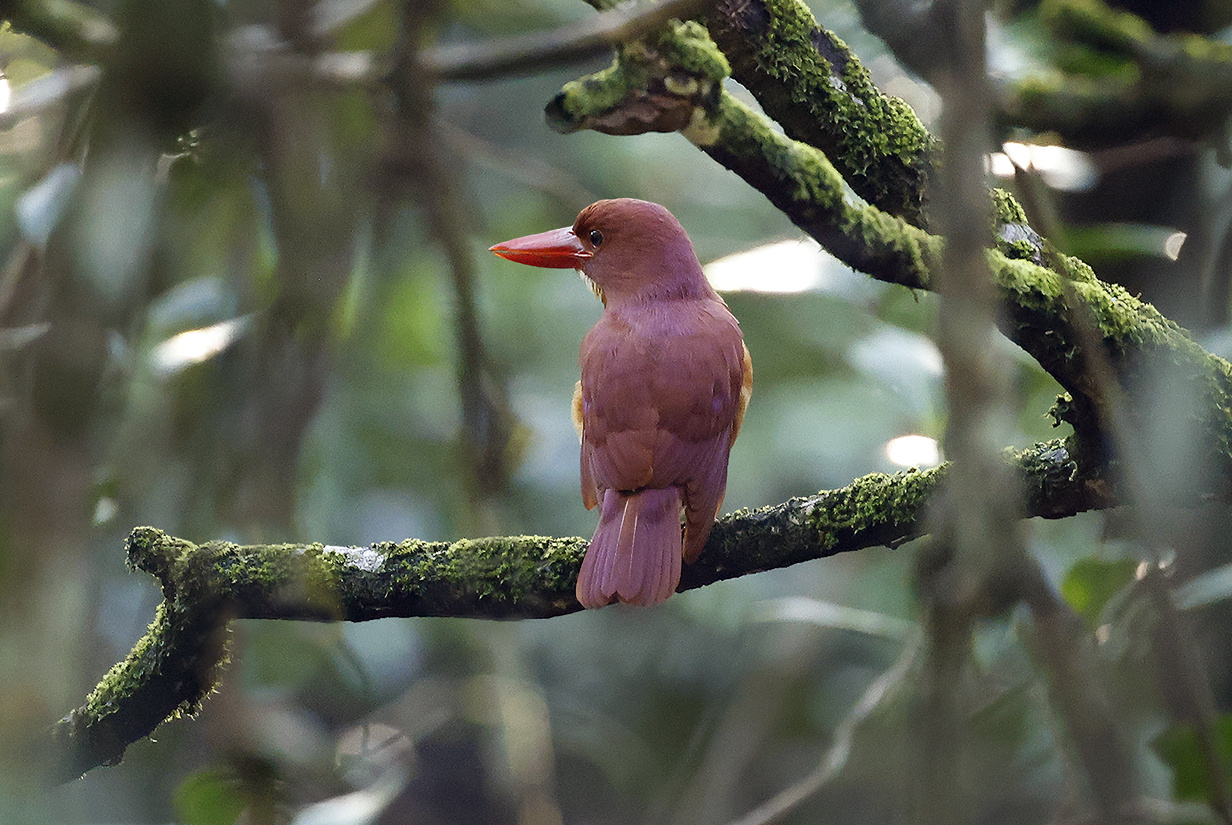
Ruddy kingfisher was the Southeast Asian bird that I most hoped we could see before we got to mainland India, well outside its range. And on our last day in the Andamans, while we were concentrating (successfully) on getting Mangrove whistler, the driver of our vehicle located one deep in the mangroves ... and, moreover, uncharacteristically well seen in the tangle. This is it -- John's second-last life bird gotten in the Andamans.
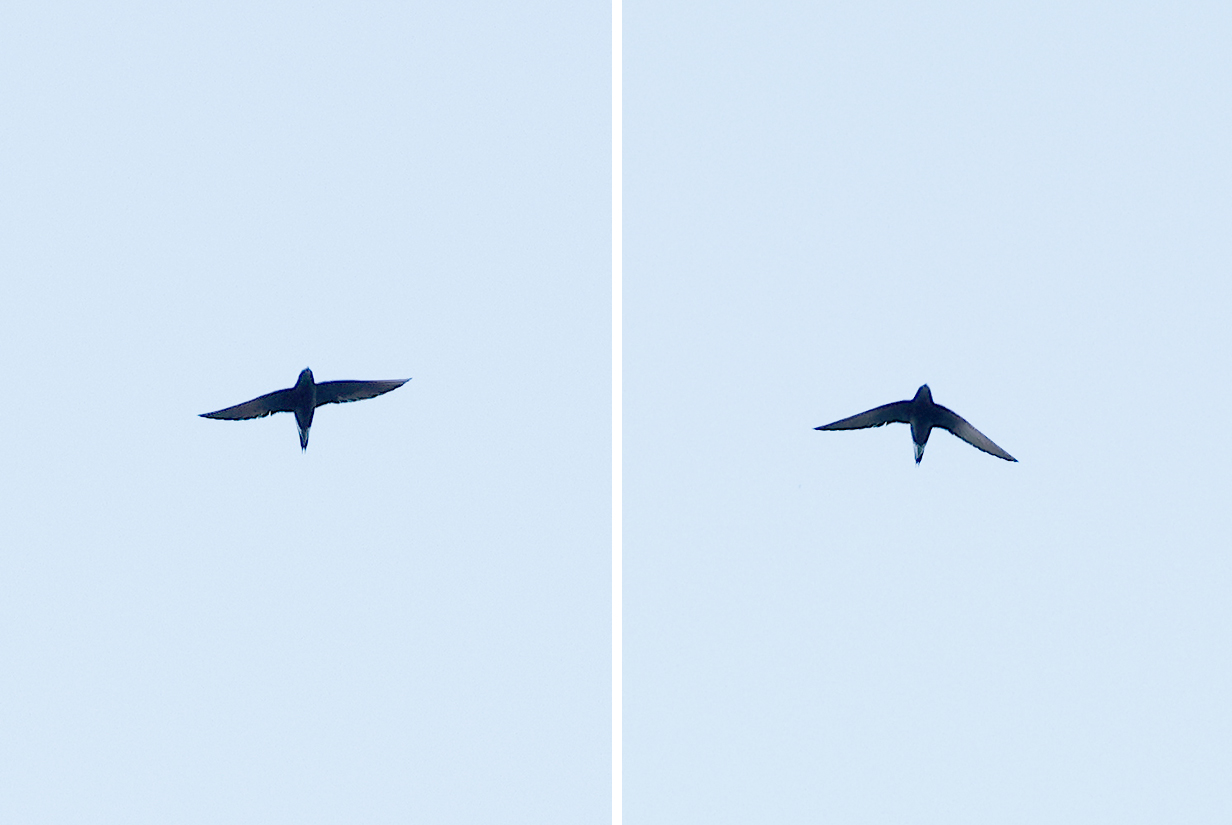
White-rumped needletail was John's last life bird during the Andaman Islands part of the trip. It was confidently identified by our guides, but of course, I can never see the necessary detail with binoculars to get a "takeable look". So I now use the same technique that works so well for pelagic birding: I take pictures (3 "stops" overexposed against a bright sky), using "eye control autofocus" on the whole bird to get at least a few pictures that are well enough in focus. This immediately shows the two "needles" that characterize the tail, so I knew I "had it" in real time. But increasing the brightness of dark areas in Photoshop further shows the characteristics of this species -- the vent region around the legs is quite white, and the outer half of the underwings is lighter than the inner half. This is usually the only way that I can get swifts "on the wing".
Part 3: South India
On Day 21 = 2023 December 8, we flew from Port Blair to Bangalore on the Indian mainland and then had a roughly 7-hour drive to our next hotel. It was a very tiring day!
Days 22-23: Mudumalai National Park and Tiger Reserve
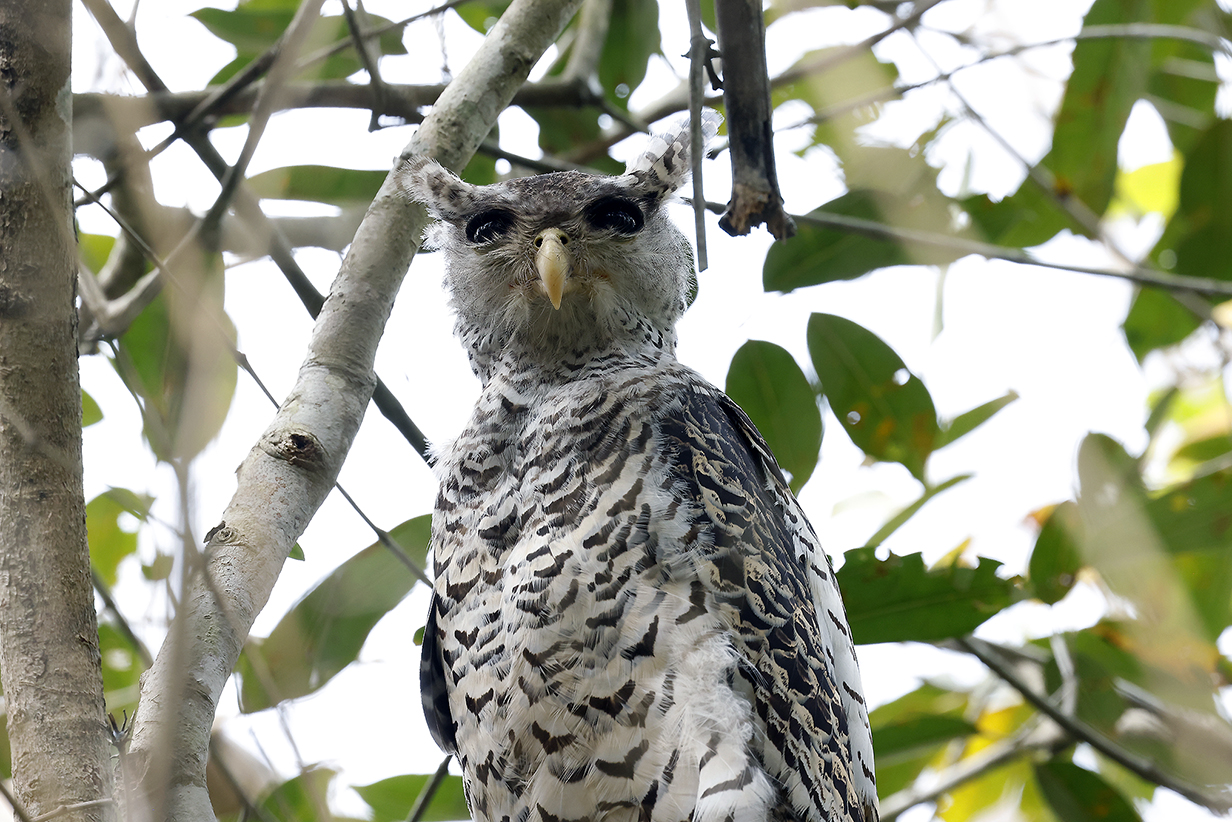
Spot-bellied eagle-owl (This is John's life bird.)

Tickell's leaf warbler (In northern winter, it is always a good idea to look at the smallest birds, because north-asian warblers et al. are wintering in India and south Asia. This bird was not new, but it is a good example. And I am always happy to get a definitive look at a Eurasian warbler, because they are such hard birds to identify. Again: this one is easier than most.)
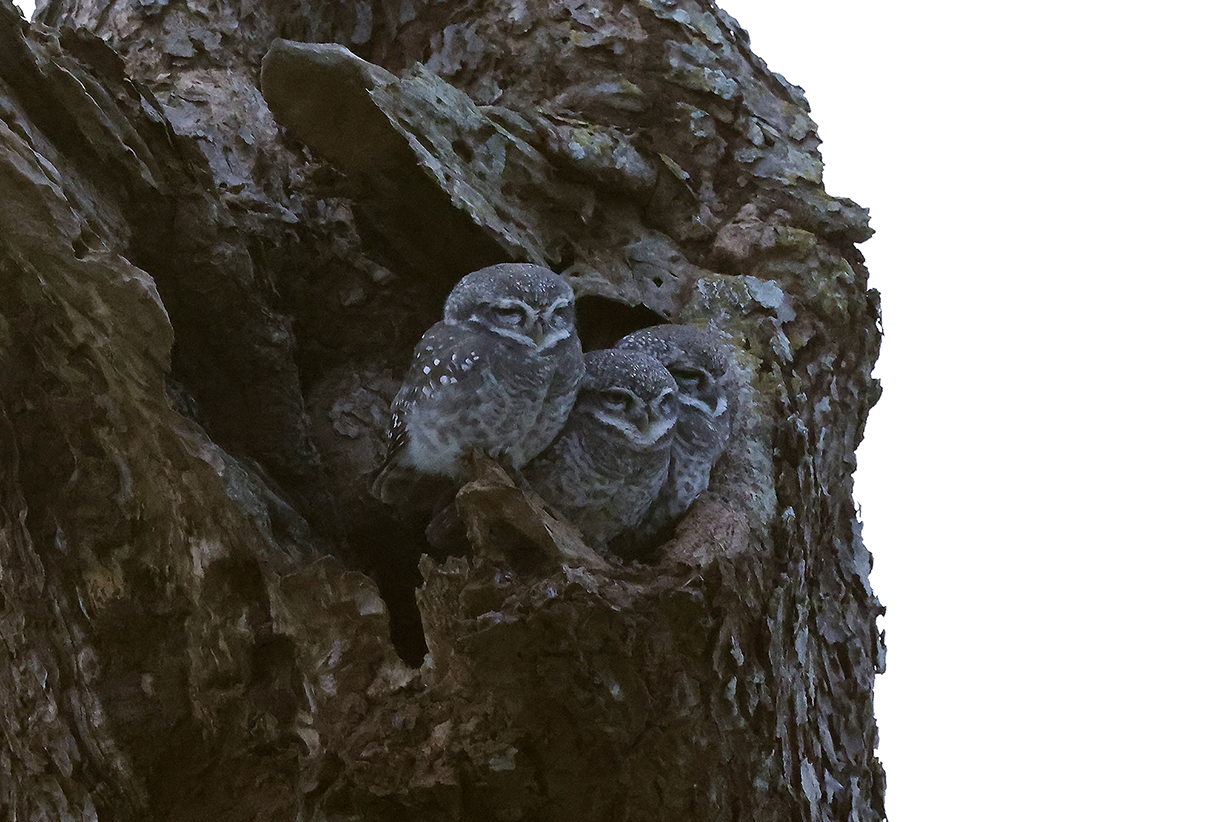
Spotted owlets (evening twilight of Day 22 = 2023 December 9, during a PM safari drive that we both enjoyed very much)
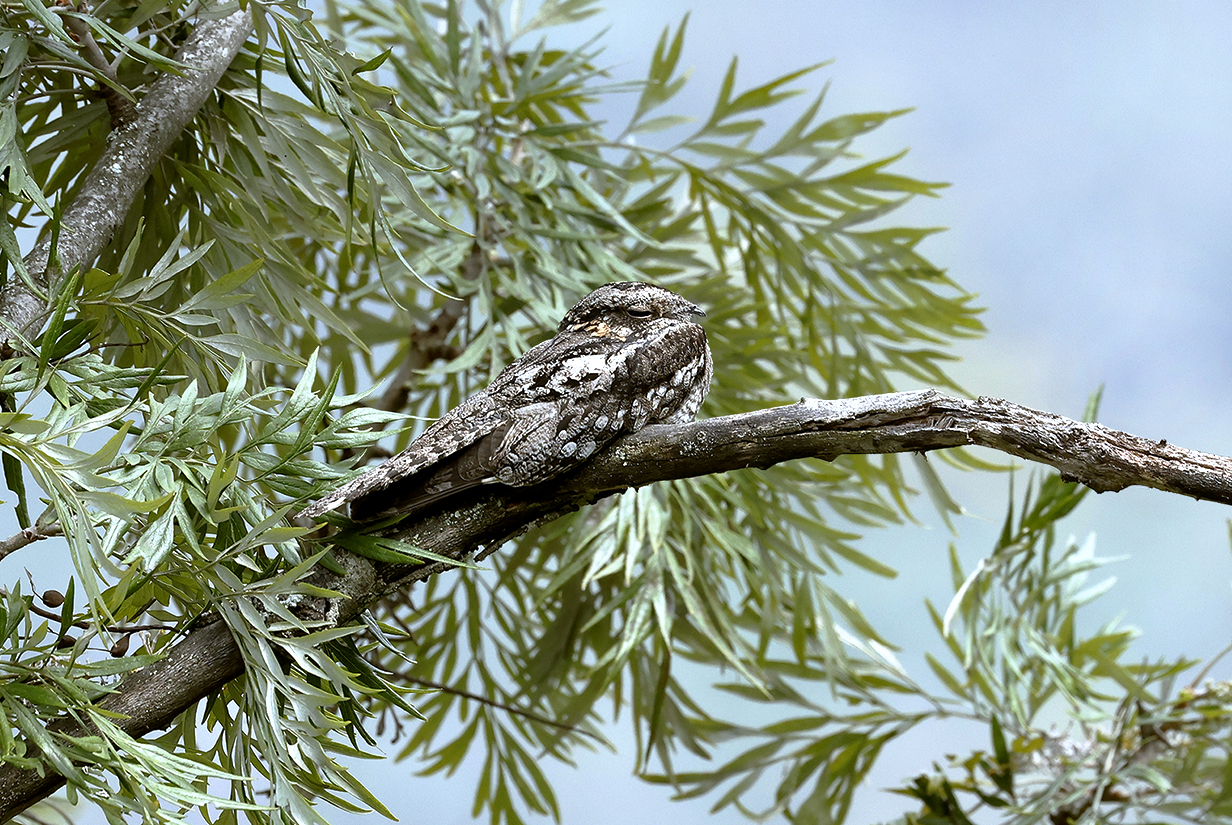
Jungle nightjar (This is our life bird.)
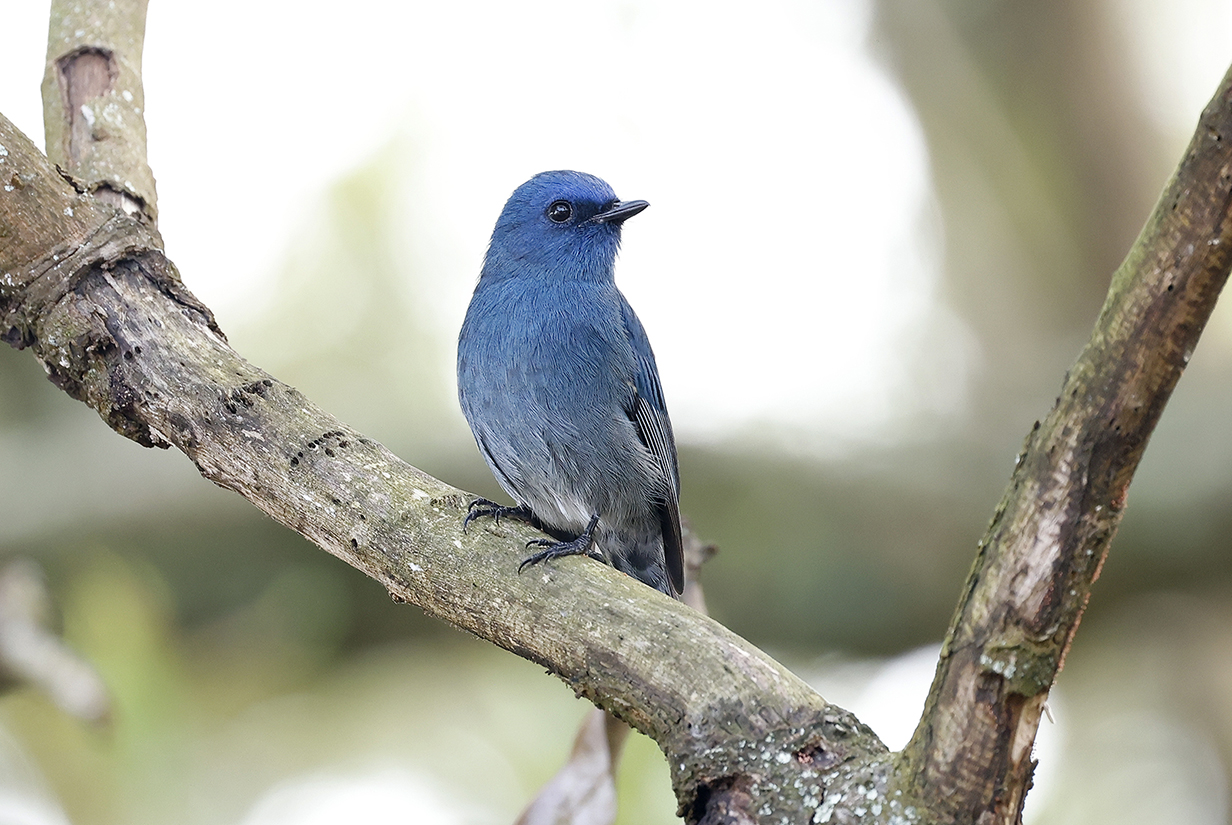
Nilgiri flycatcher (This is our life bird.)
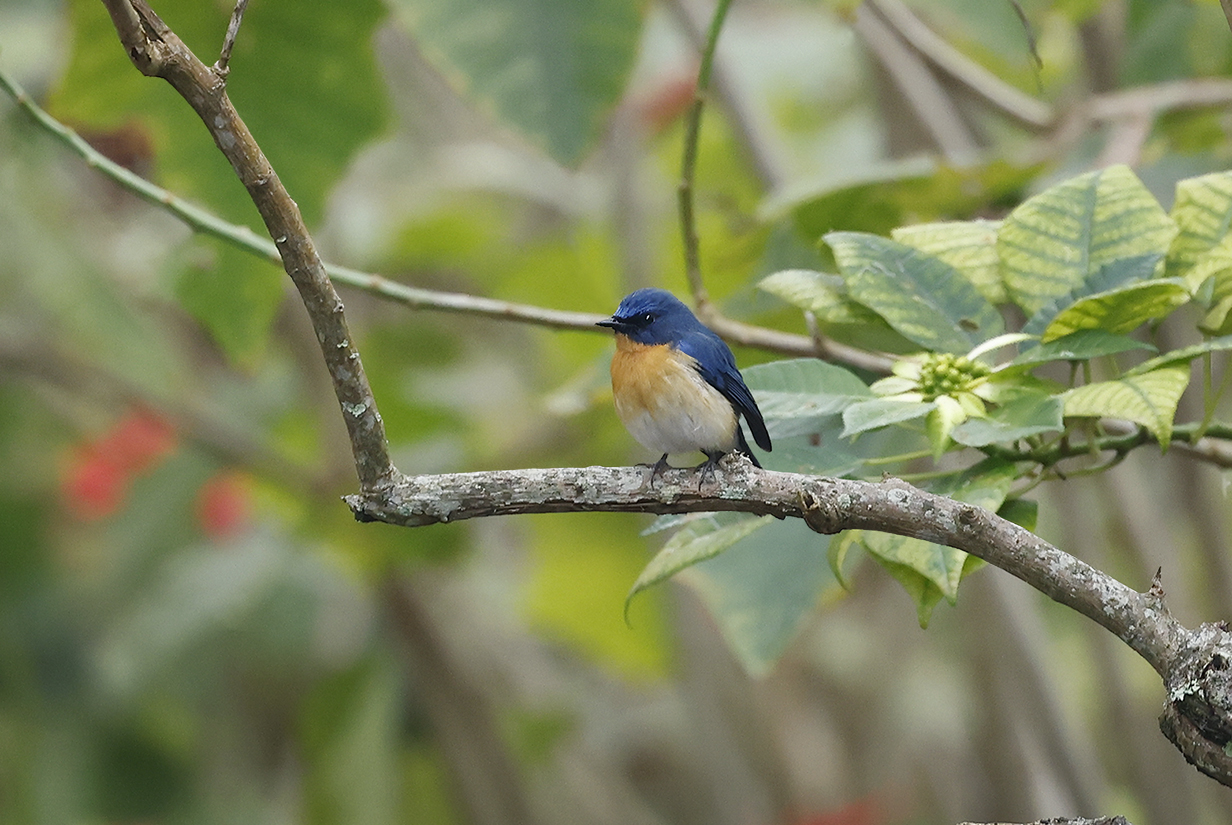
Tickell's blue flycatcher (This is our life bird.)
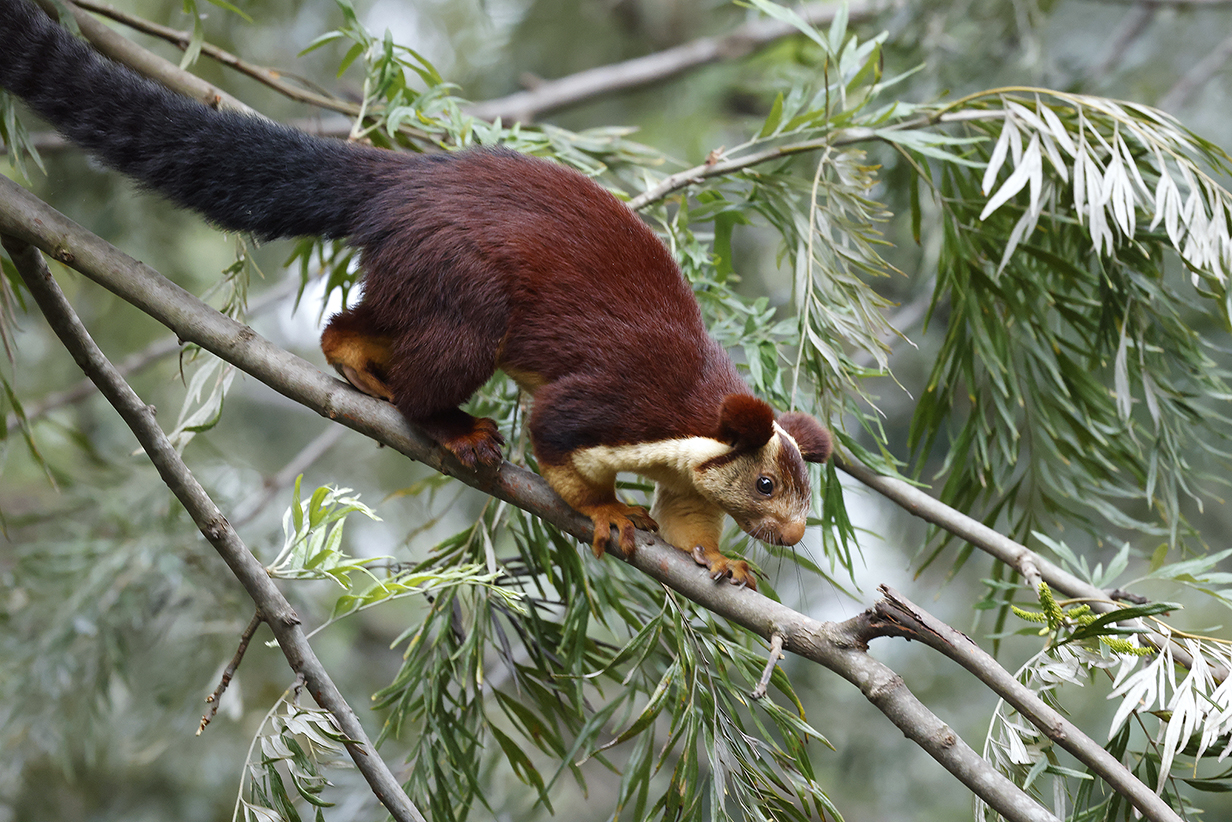
Indian giant squirrel (startlingly big!)

Nilgiri laughingthrush (This is our life bird. It has a very restricted range in the mountains near Coimbatore. We were lucky to get an easy, close look.)
In the evening, we arrived in Ooty at the Hotel Taj Savoy. The graceful luxury of the Savoy was much appreciated after the previous, hectic days.
Day 24: Mountain birding near Ooty
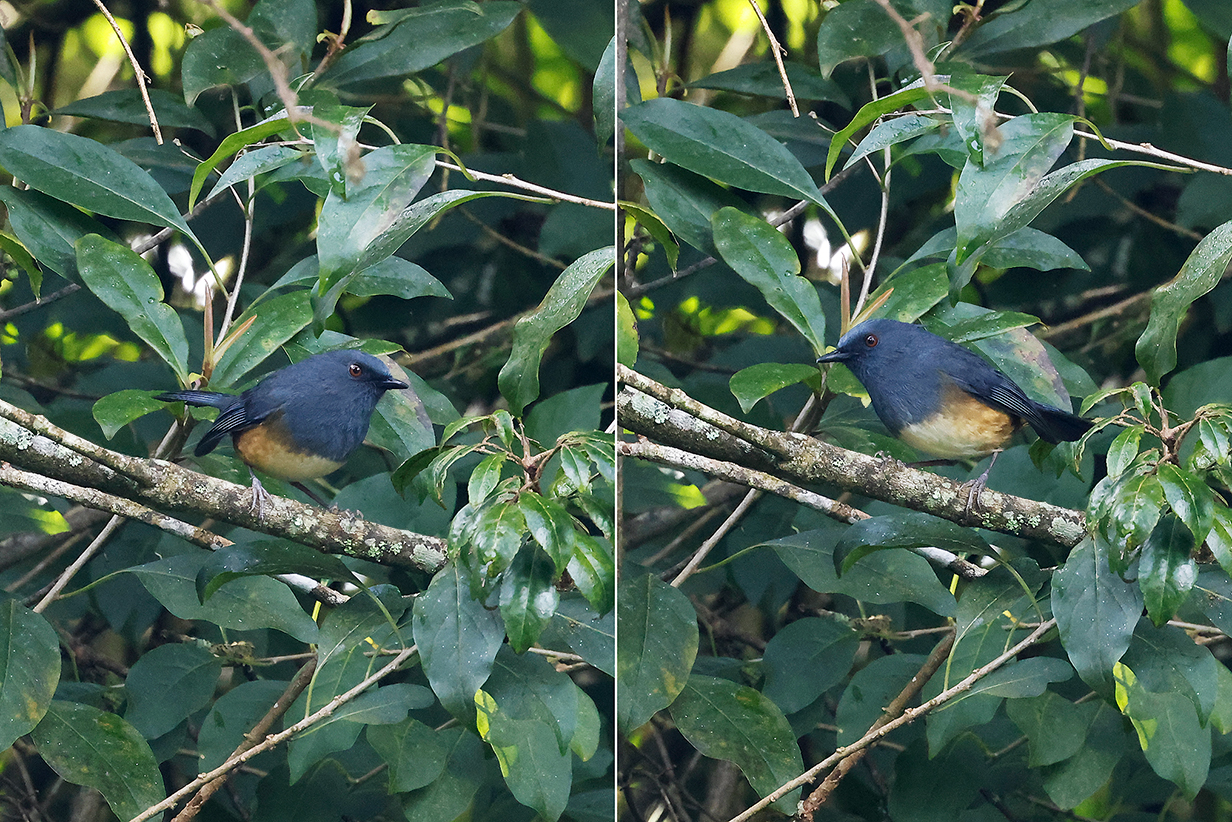
Nilgiri sholakili (two pictures of our life bird, also in a very restricted range near Ooty)
Days 25-27: Mountain birding near Munnar (1530 m ~ 5020 feet altitude)

Panorama of Anamudi Peak (2695 m = 8842 feet high), the highest point in south India. Here, we are in Eravikulam National Park, as high as the road is open to tourists. The area is surrounded by picturesque tea plantations ... but of course it is the surviving wilderness that yields the following birds that we saw from here. Scroll right to see the full panorama.
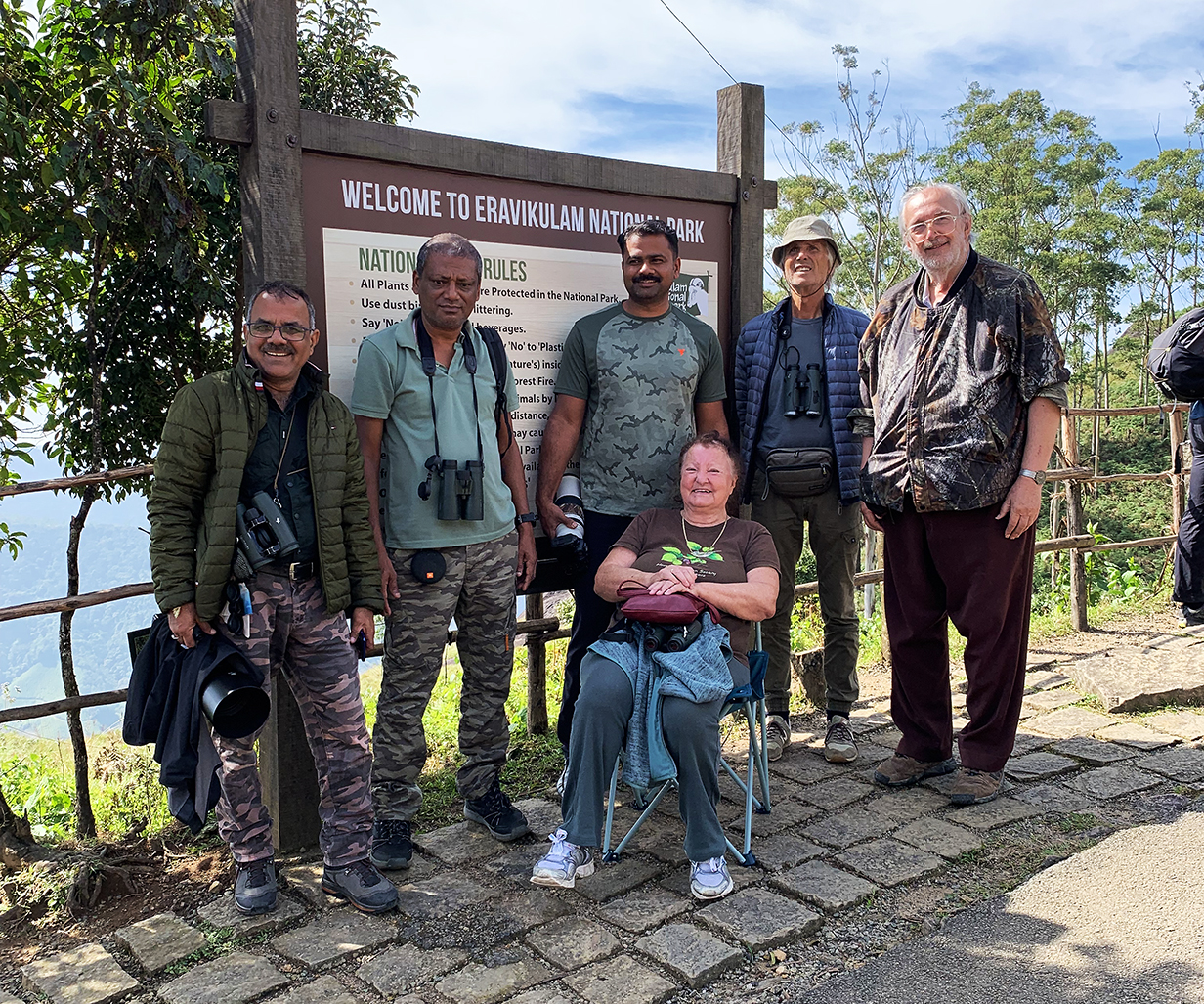
This was taken from the same place as the above panorama. Left to right: Vinod Goswami, local guide Sam Kumar, one of the many people who helped us so much with logistics, Mary, Jack Poll, and John. This was one of our most enjoyable days -- warm enough to be comfortable, easy birding, low humidity, and NO leeches.
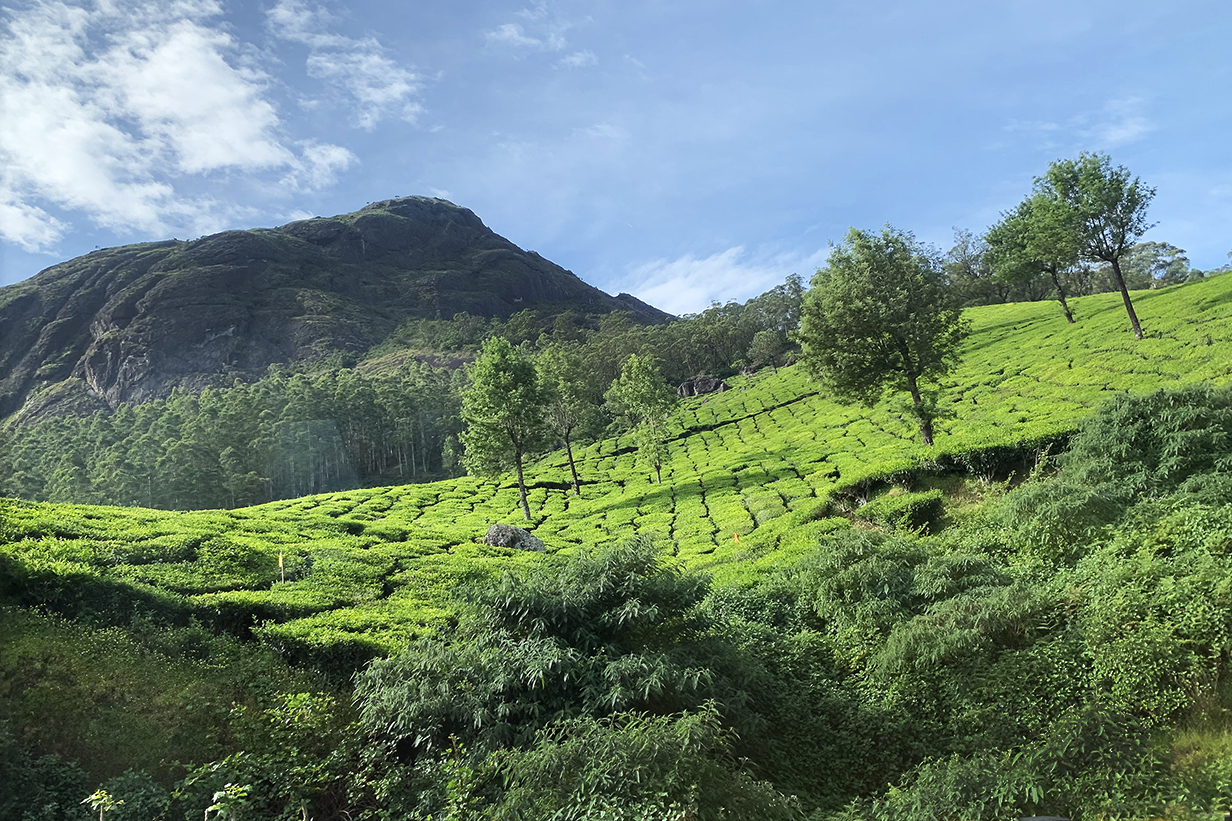
Very neat tea plantation near Anamudi Peak

White-bellied sholakili (This is our life bird -- weird exposure of a dark bird against a bright background, "saved" as well as possible. We got this and the following birds at the high point along the road in Eravikulum National Park.)
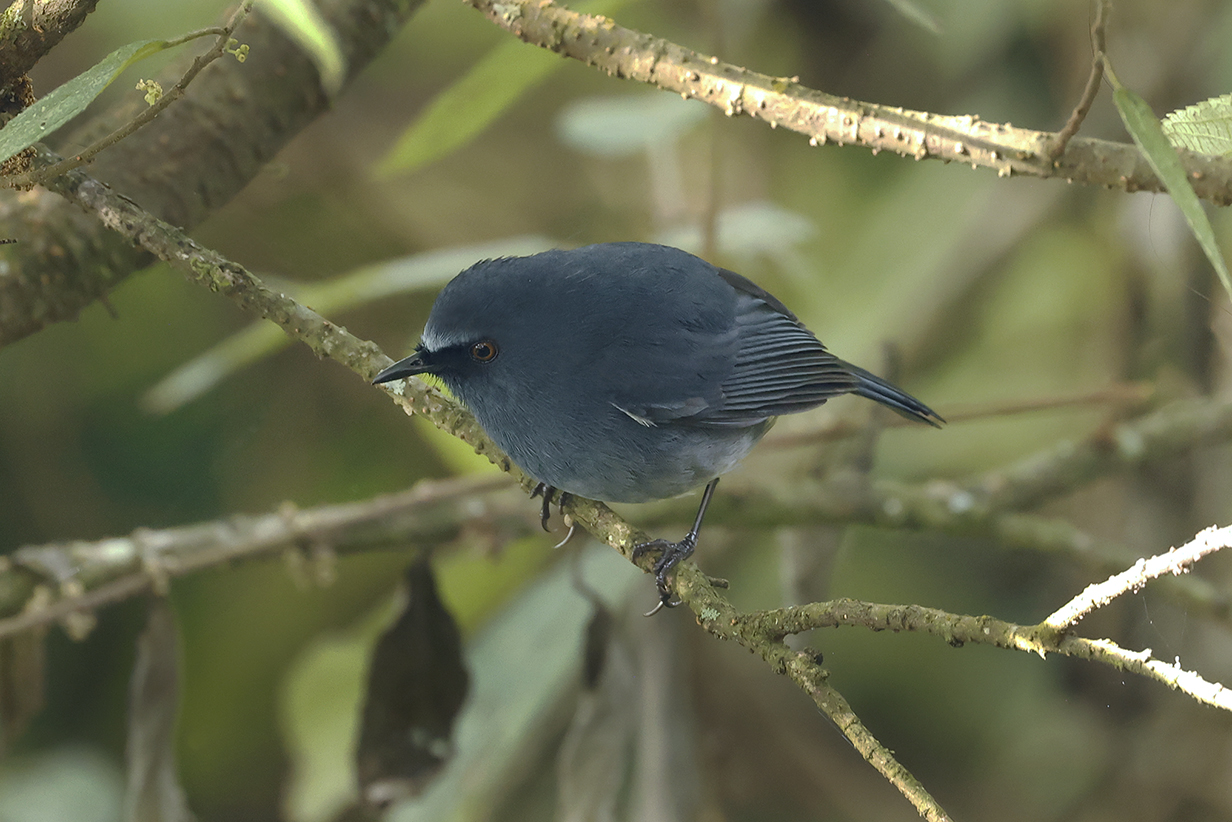
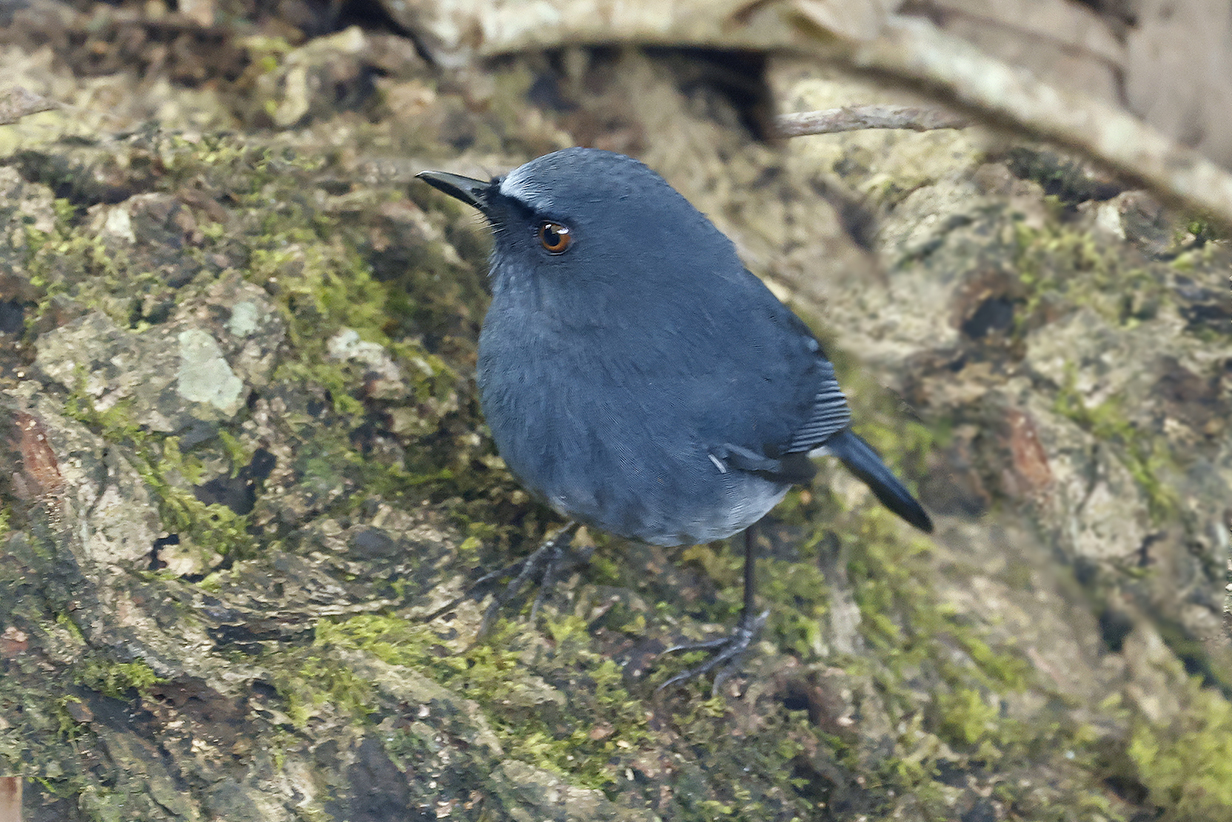
White-bellied sholakili (This is our life bird.)
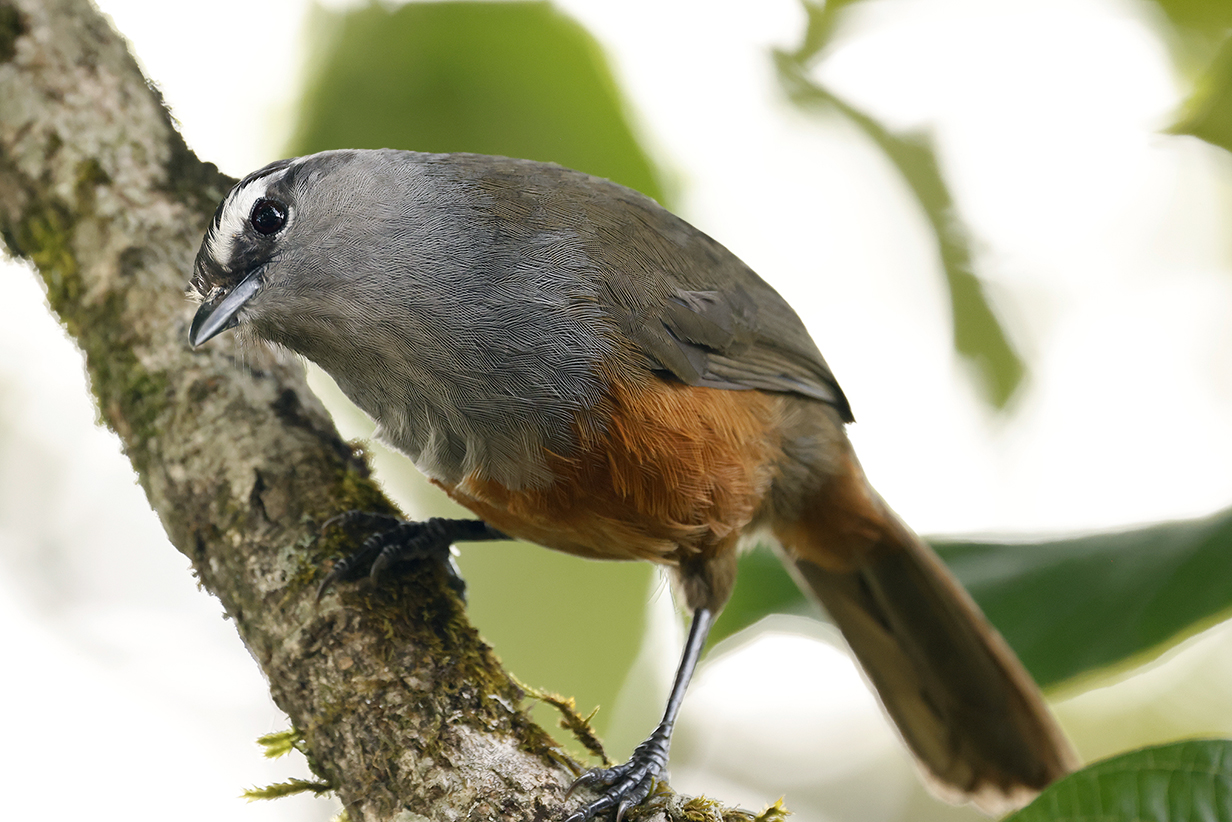
Palani laughingthrush (This is our life bird.)
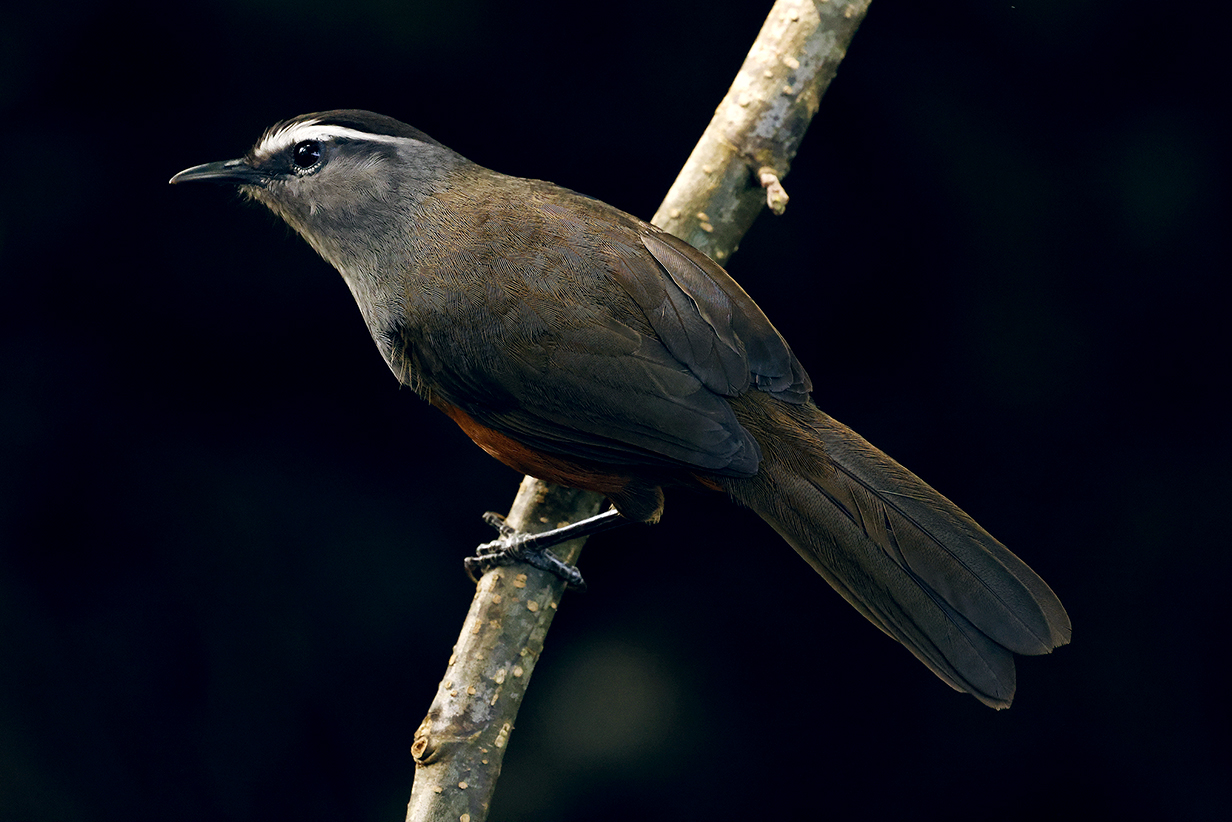
Palani laughingthrush (One of the small flock of our life birds.)
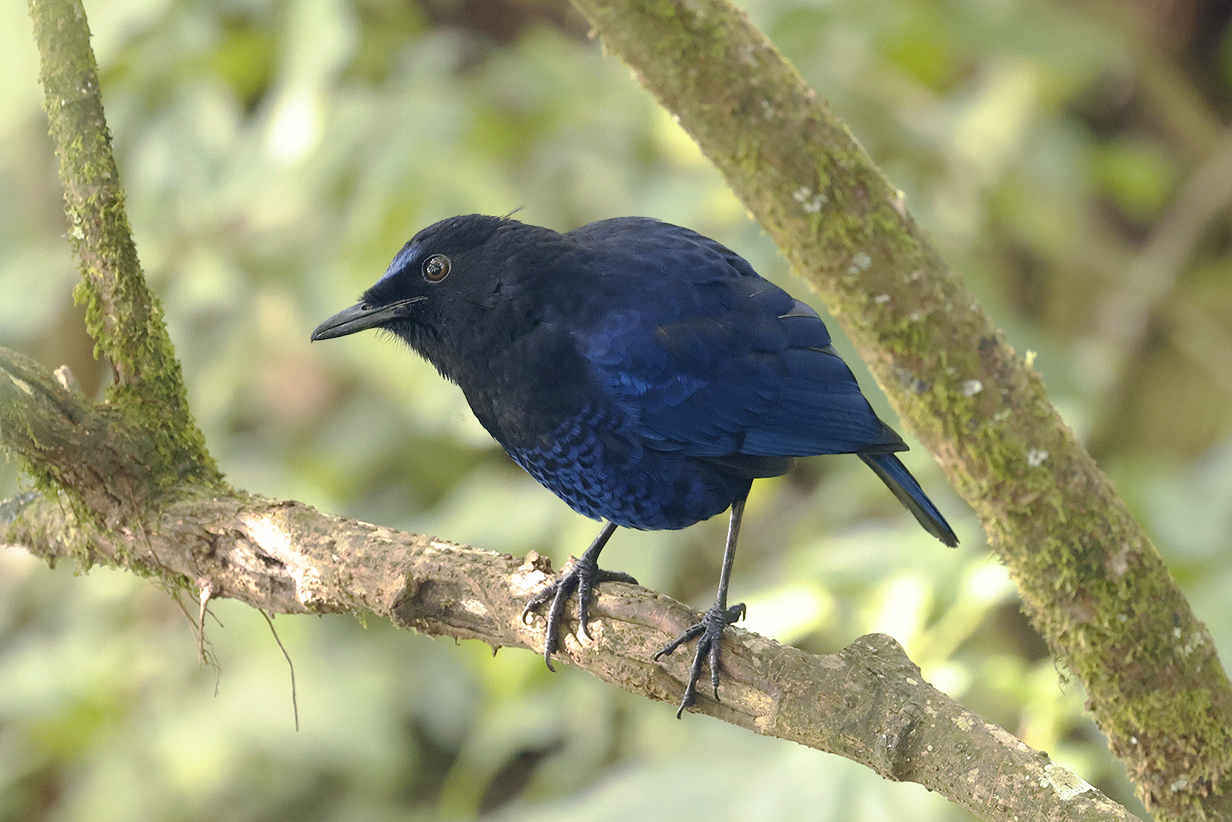
Malabar whistling-thrush (This is our life bird. I got better pictures on the last day of the trip: q.v.)
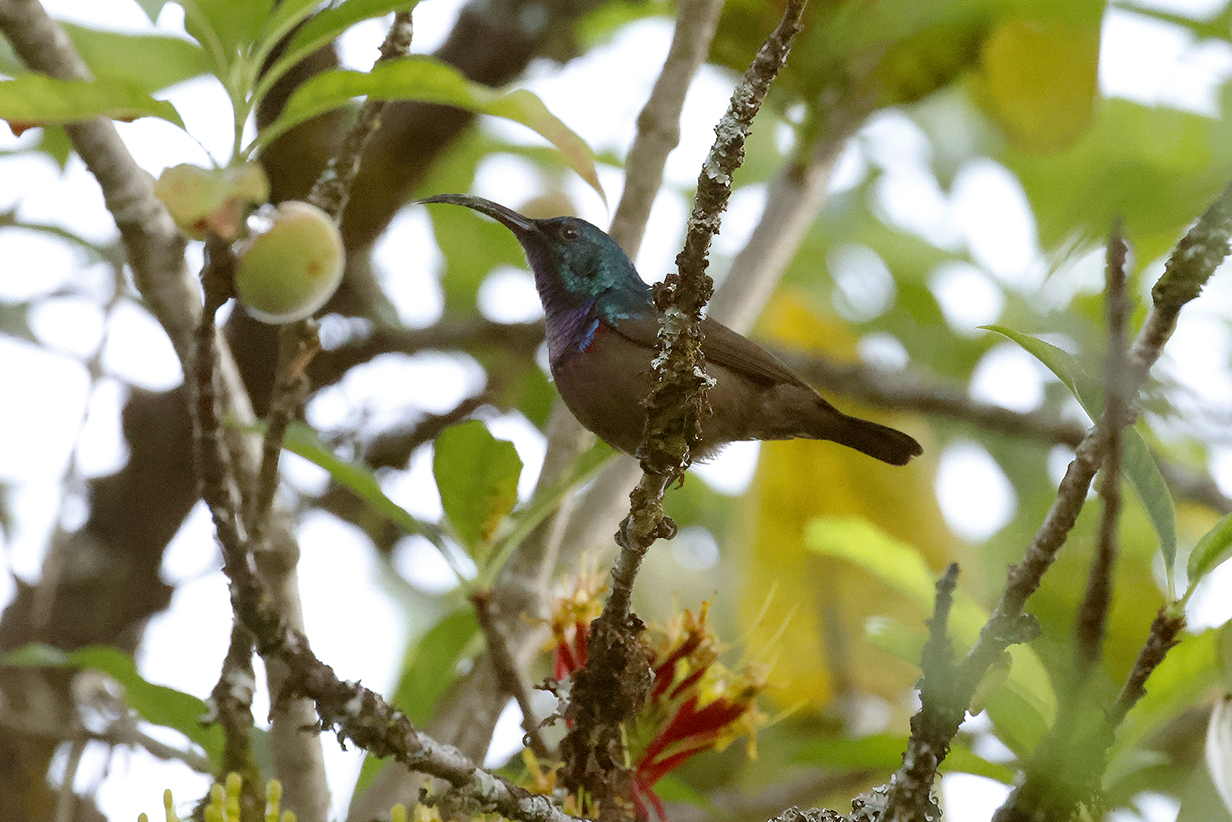
Loten's sunbird (This is a male. Loten's sunbird was new on Day 23, four days earlier.)
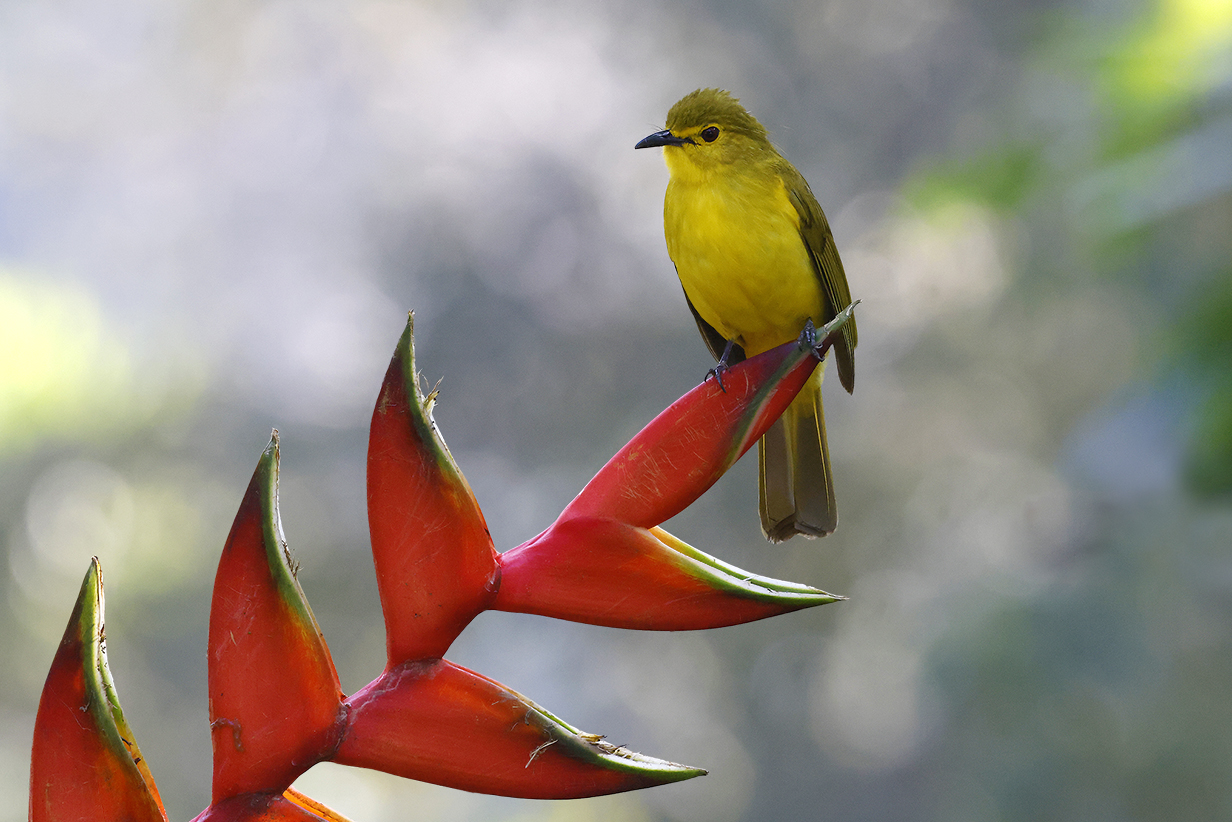
Yellow-browed bulbul
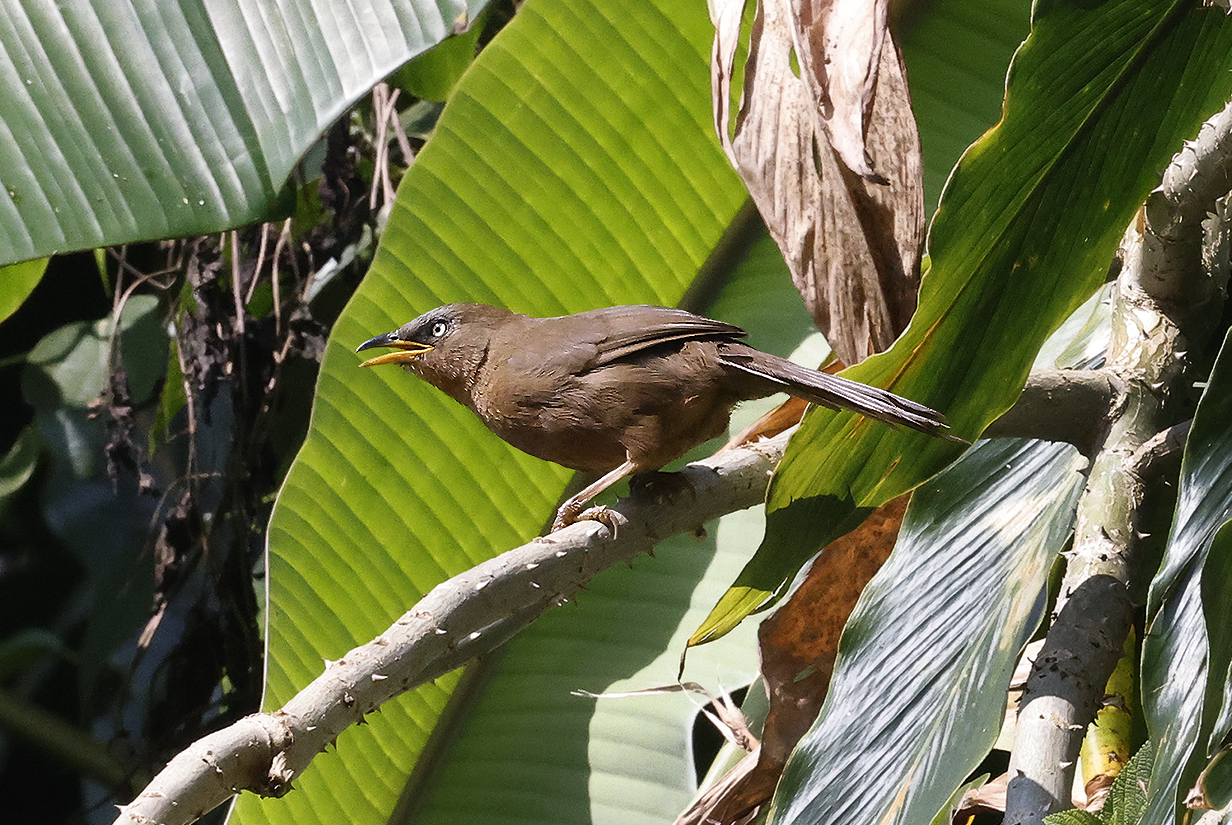
Rufous babbler (morning of Day 27; new on Day 25)


Little spiderhunter (This has been a nemesis bird for John for at least 2 trips to India. Mary got it well during our last trip. This time, John finally got the bird -- twice, actually -- but never well enough to get a decent picture. These very bad pictures are included just as a reminder that I got the bird.)
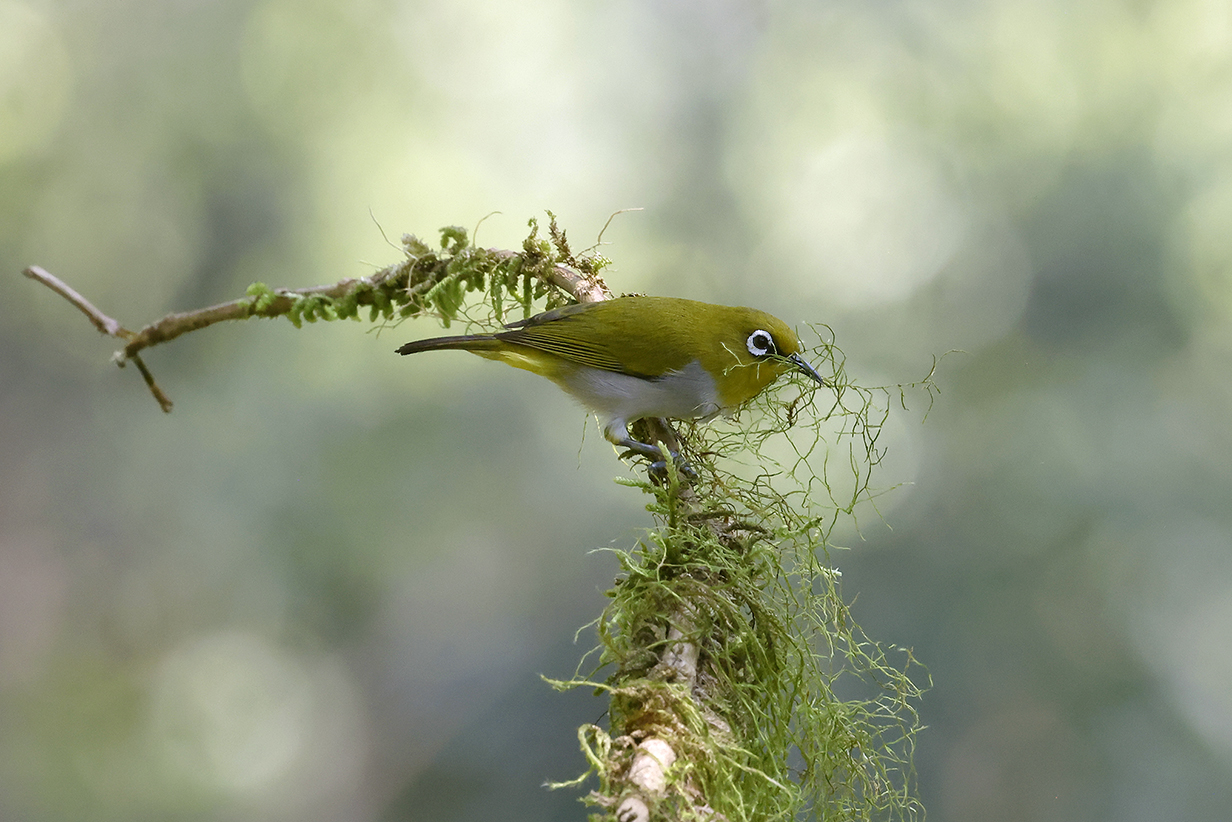
Indian white-eye collecting nesting material (new earlier during this trip)
One more happy surprise on the evening of Day 27 = 2023 December 13:

Black-and-orange flycatcher (This is John's life bird and overall trip bird, photographed in semi-darkness at the bottom of a gully using ISO 32,000. Very grainy.)
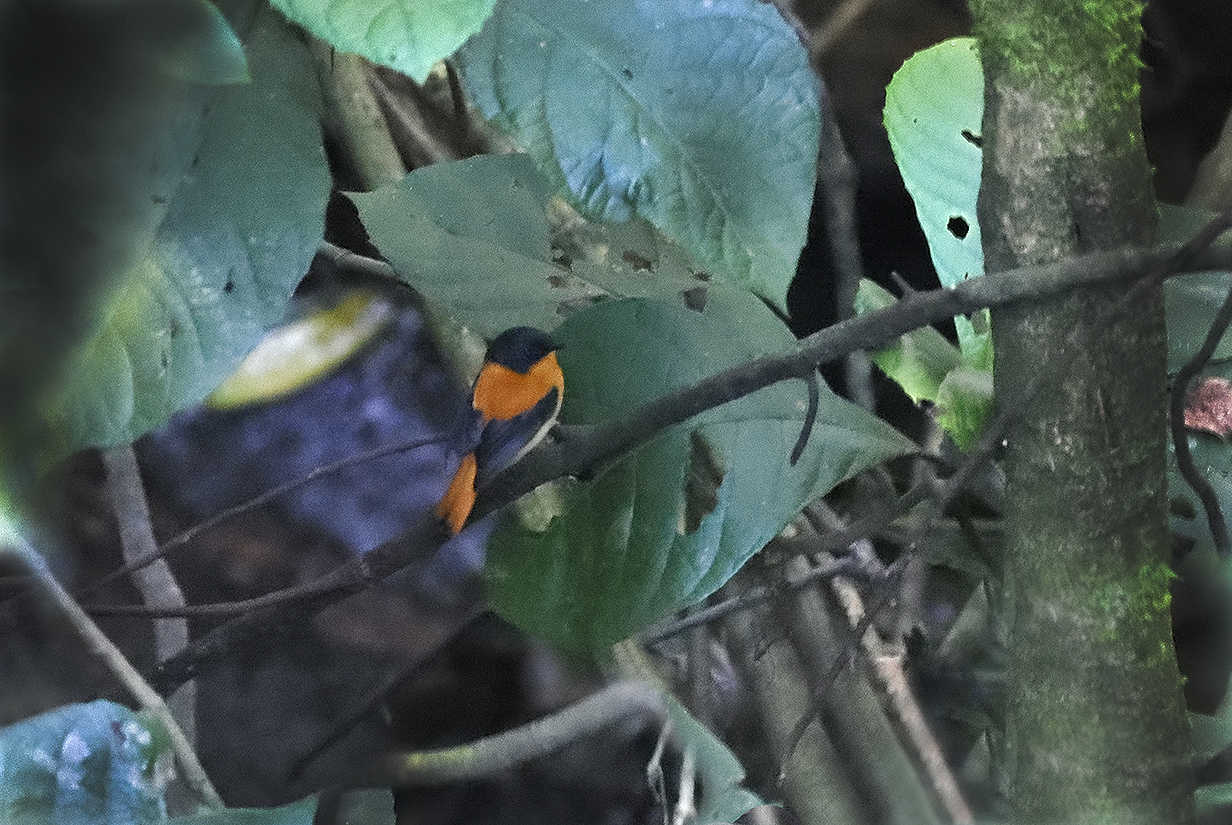
Black-and-orange flycatcher (This is the best average that I could make of the 5 pictures that immediately follow the above. Grain is reduced, but the bird moved minutely during the sequence of pictures so not all detail is recovered. It was hard to get even this much, given the darkness of the scene and the fact that I had only a few seconds of view.)
Days 28-29: Periyar Tiger Reserve, Thekkady, State of Kerala (altitude ~ 1000 m)
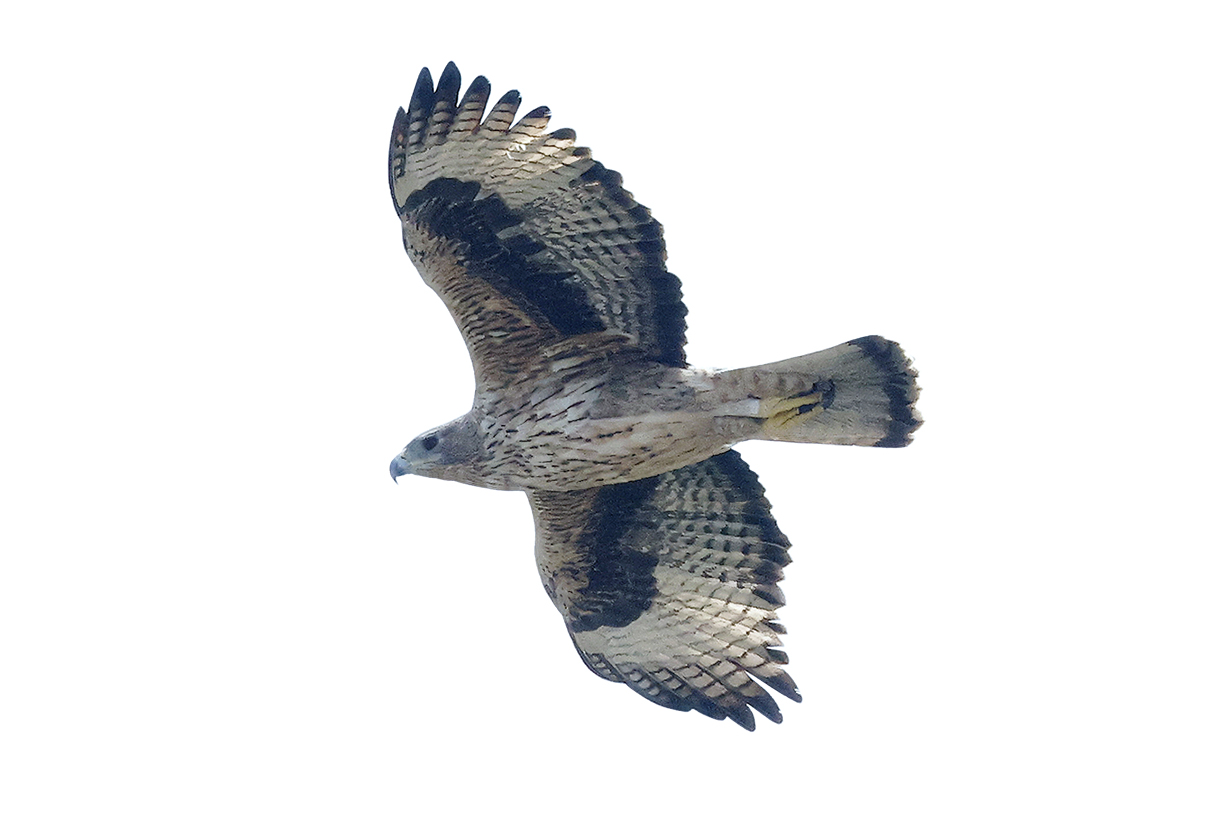
Bonelli's eagle (seen during the long drive to Thekkady)
Here, we are back in rain(y) forest, with high humidity and some danger of leeches. Birding was mostly by long walks through Periyar Tiger Reserve, where -- surprisingly -- we are allowed to walk free, not be "safaried" by jeep. We did not see a tiger! Birding was difficult, as it almost always is in tall forest, because the birds are scarce, elusive, and usually high up.
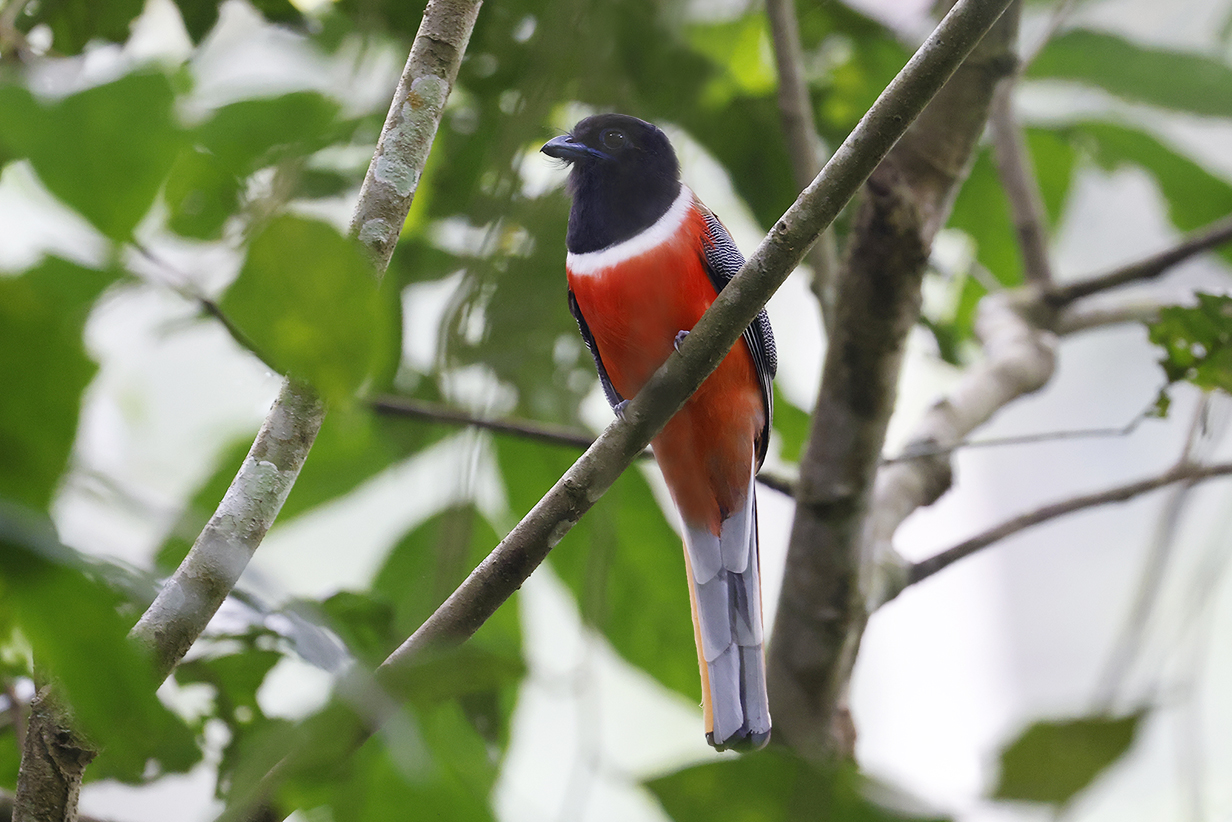
Malabar trogon was an exception, sitting quietly just above us. This male is John's life bird. We also saw a female, briefly.

Tickell's blue flycatcher (which I had never photographed well)
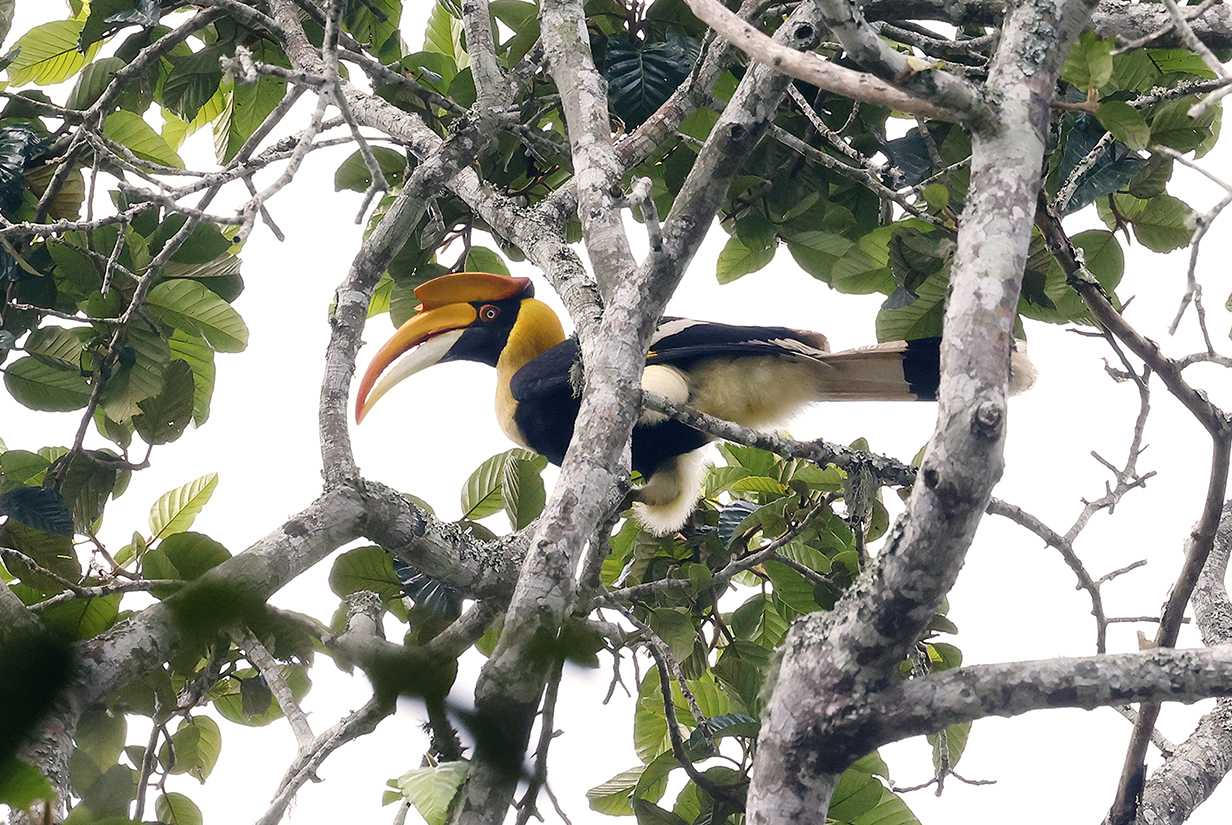
Great hornbill (again a bird that I had never photographed well)
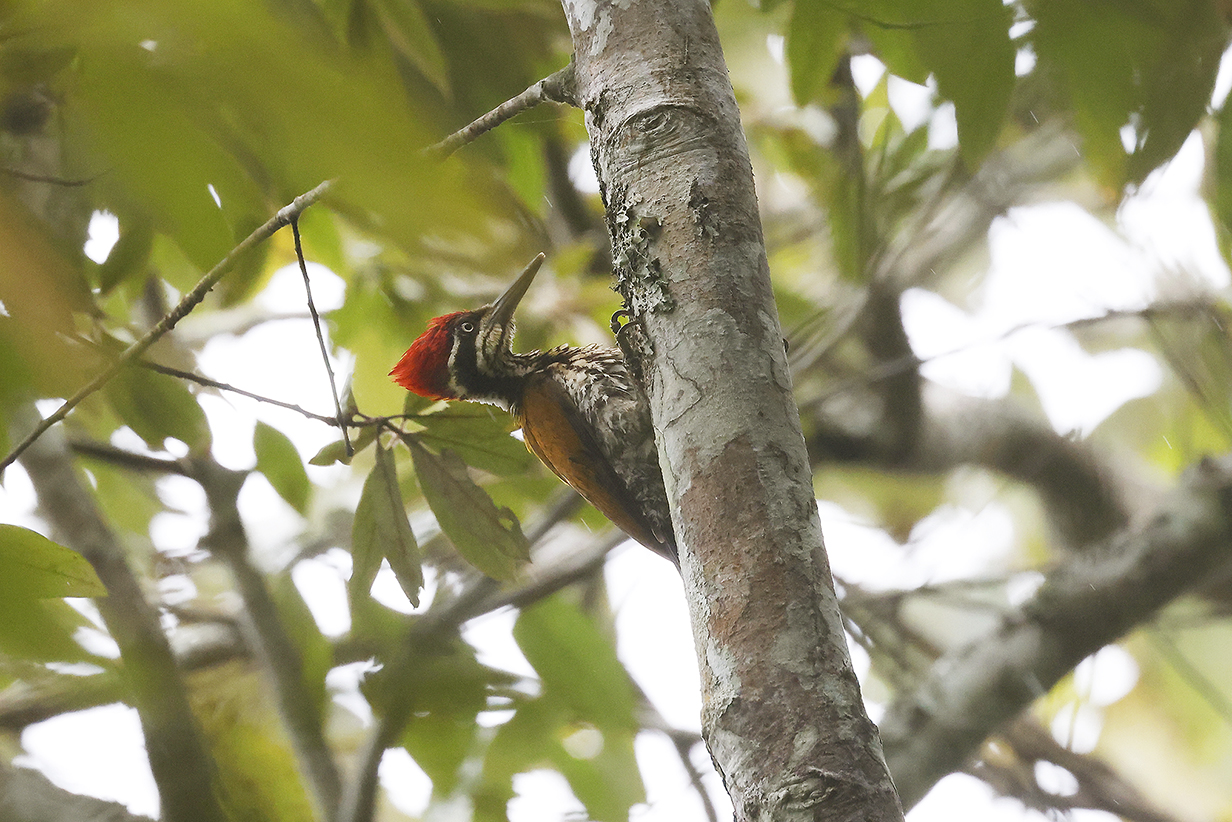
Malabar flameback (This is John's life bird, courtesy of a subspecies split from Greater flameback, just a few weeks before, in the eBird and Clements 2023 taxonomy update). Photographed in light rain
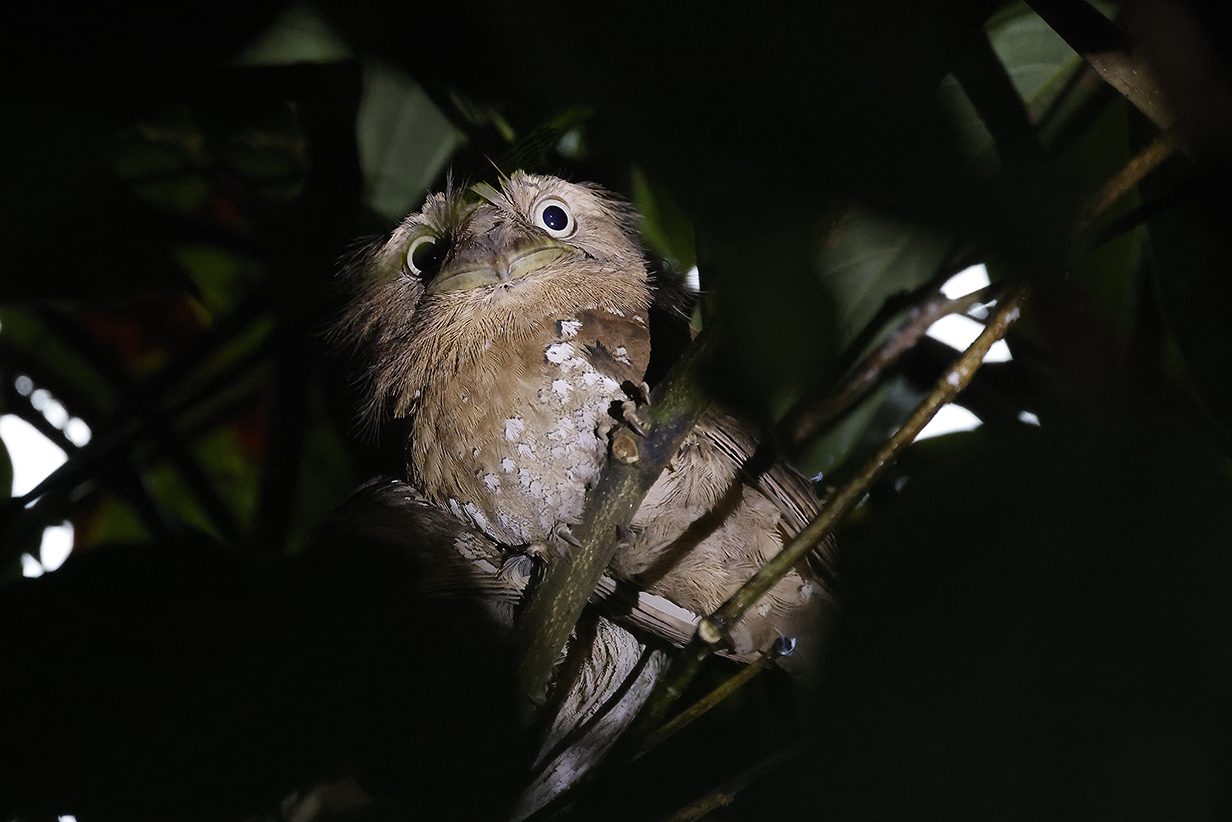
Sri Lankan frogmouth (This is John's life bird. Full disclosure: an out-of-focus branch crossed the bird's left eye and could not be eliminated by any move of the photographer. Careful interpolation in Photoshop eliminates it as well as possible to give an impression of what the bird looks like. Obviously it cannot be completely accurate. The bird was well hidden in a dense thicket of bushes and trees: only the practiced expertise of a Tiger Reserve ranger allowed us to see it. We are very grateful for his finesse and help.)
Days 30-31: Birding mostly from 3 hides in rain forest near sea level
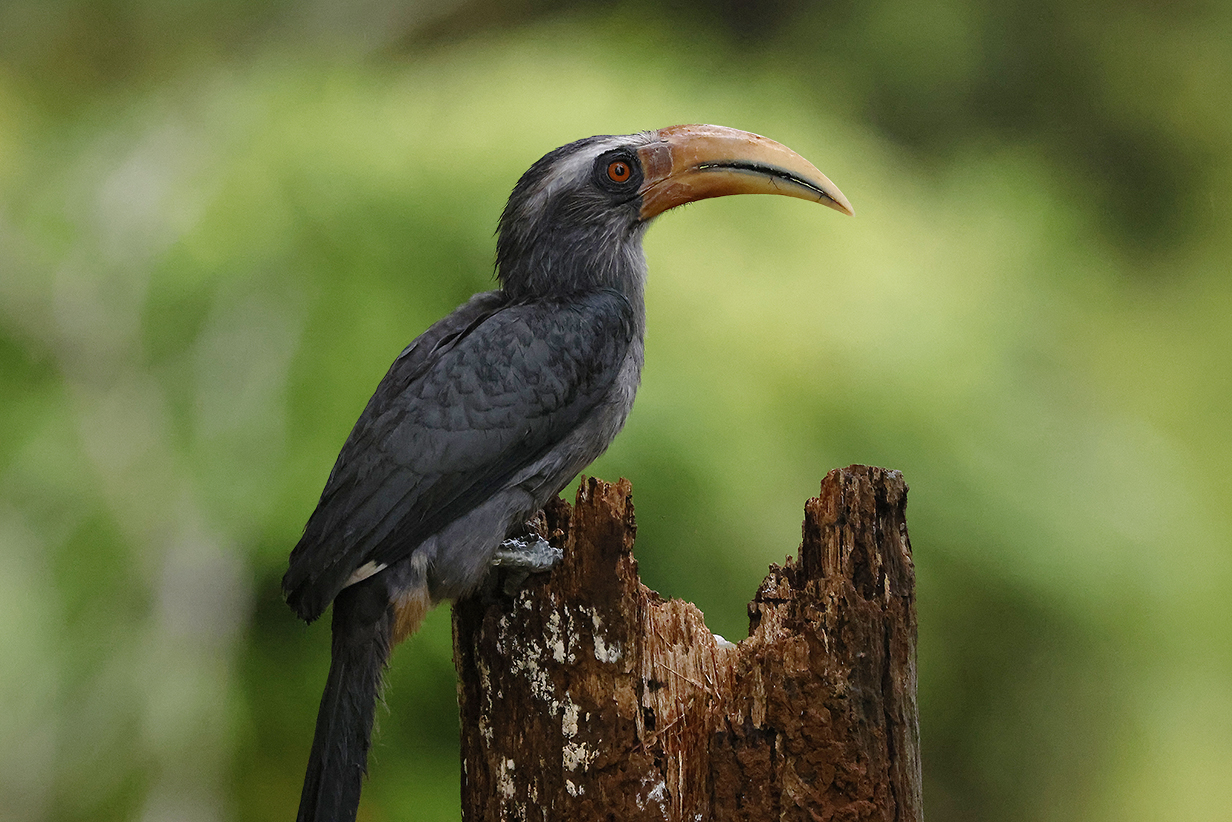
Malabar gray hornbill (new earlier in the trip)

Greater racket-tailed drongo (The rackets are a bit awkward in flight ... but the ladies like them.)
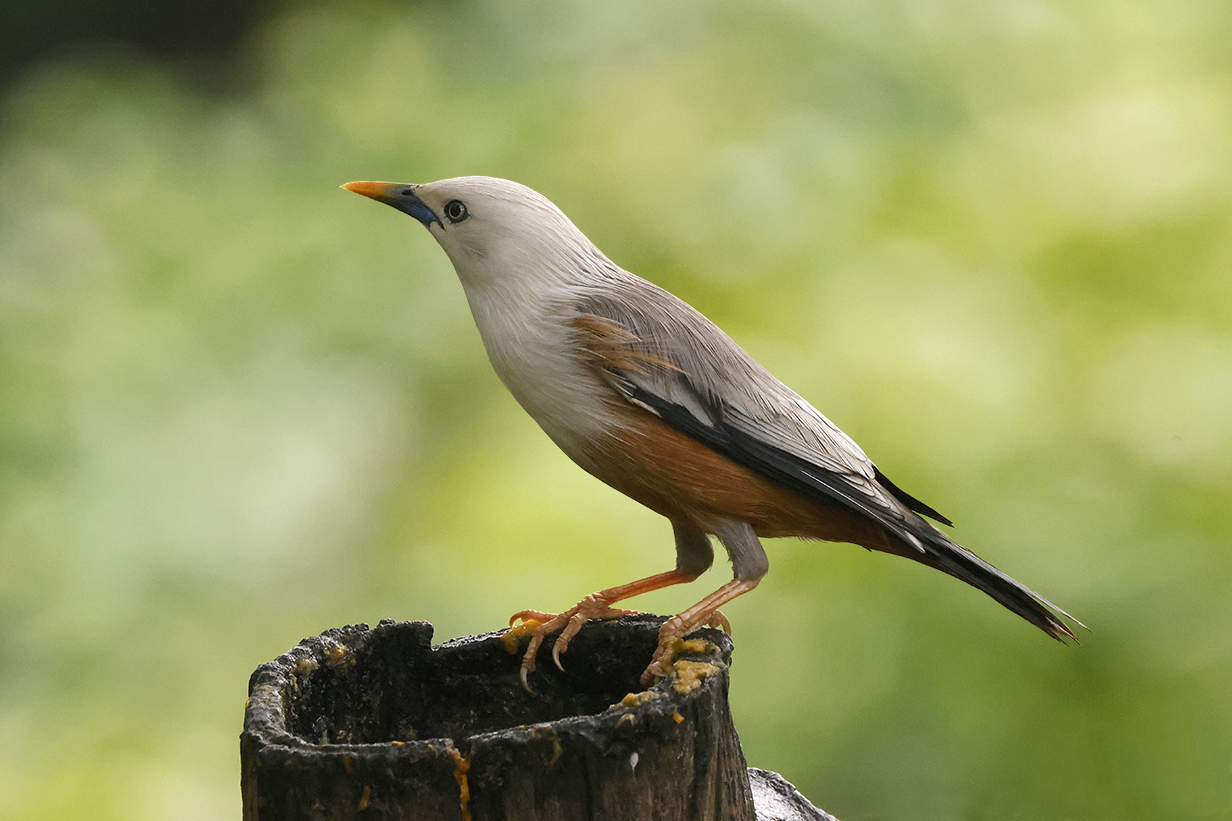
Malabar starling was new earlier in the trip. Our Eurasian starling is a handsome bird in breeding plumage, seen closely. But East Asia has much more elegant starling species. The same is true for pigeons and doves.
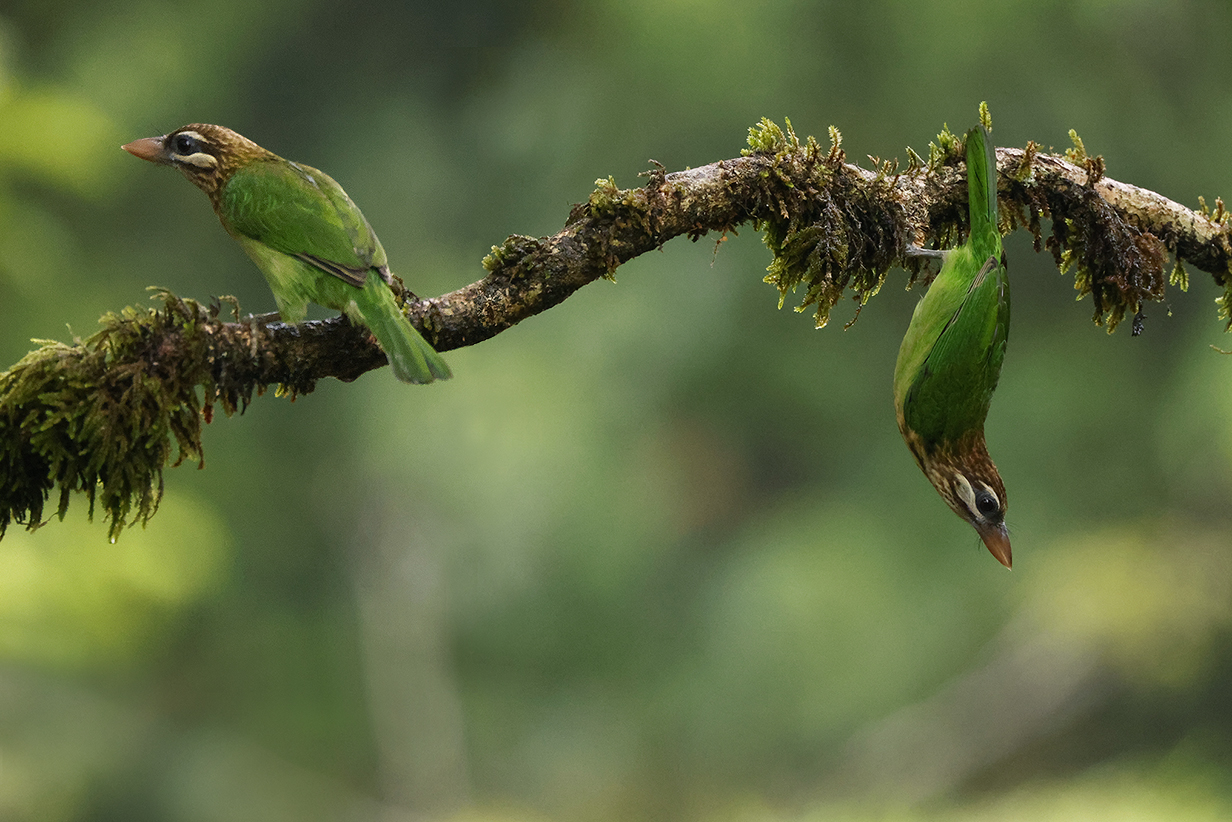
White-cheeked barbets (new earlier in the trip)
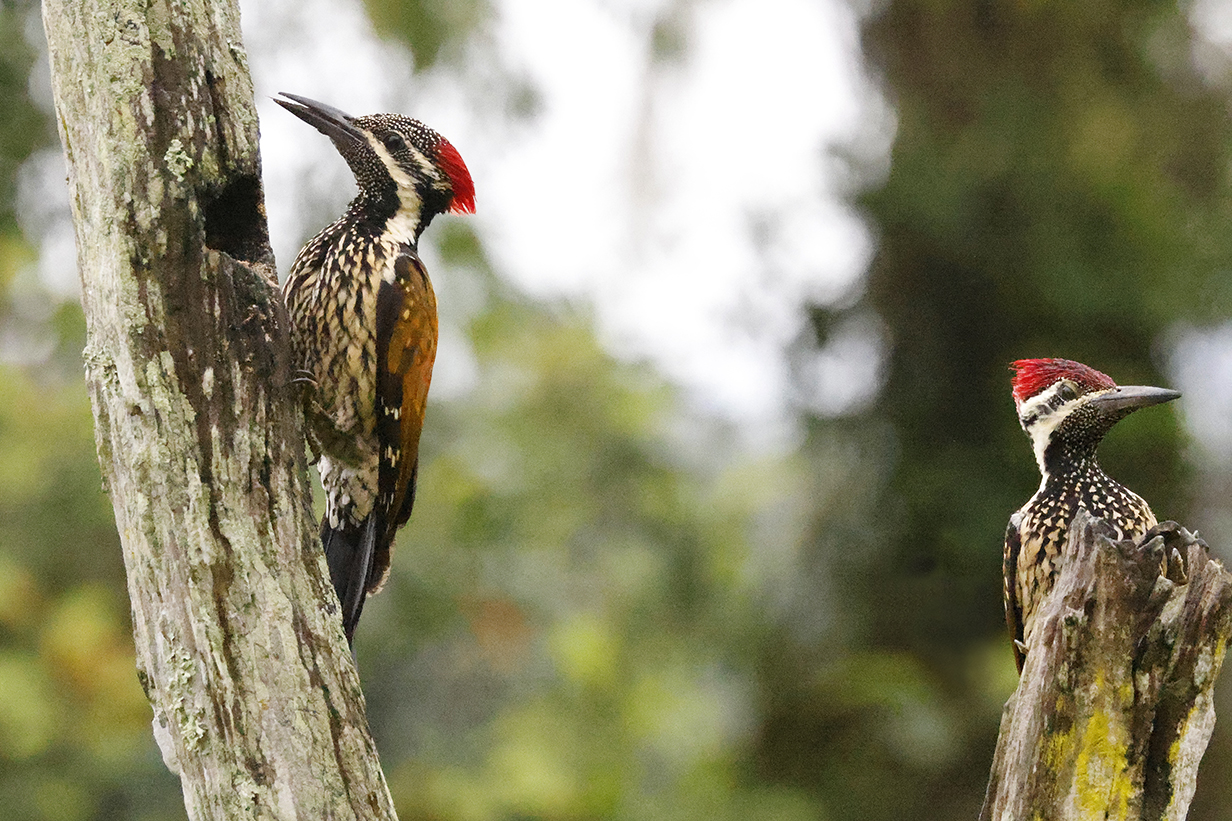
Black-rumped flameback (female at left and male at right)
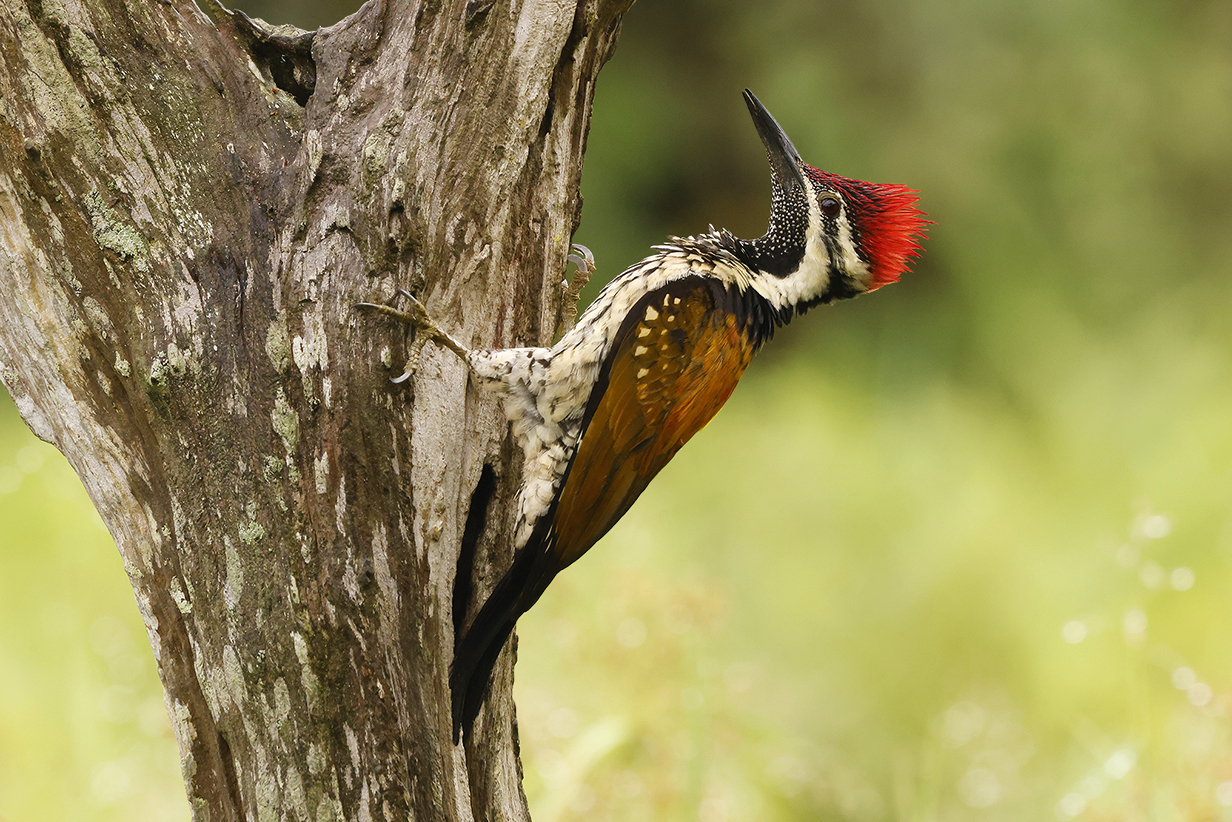
Black-rumped flameback (male)
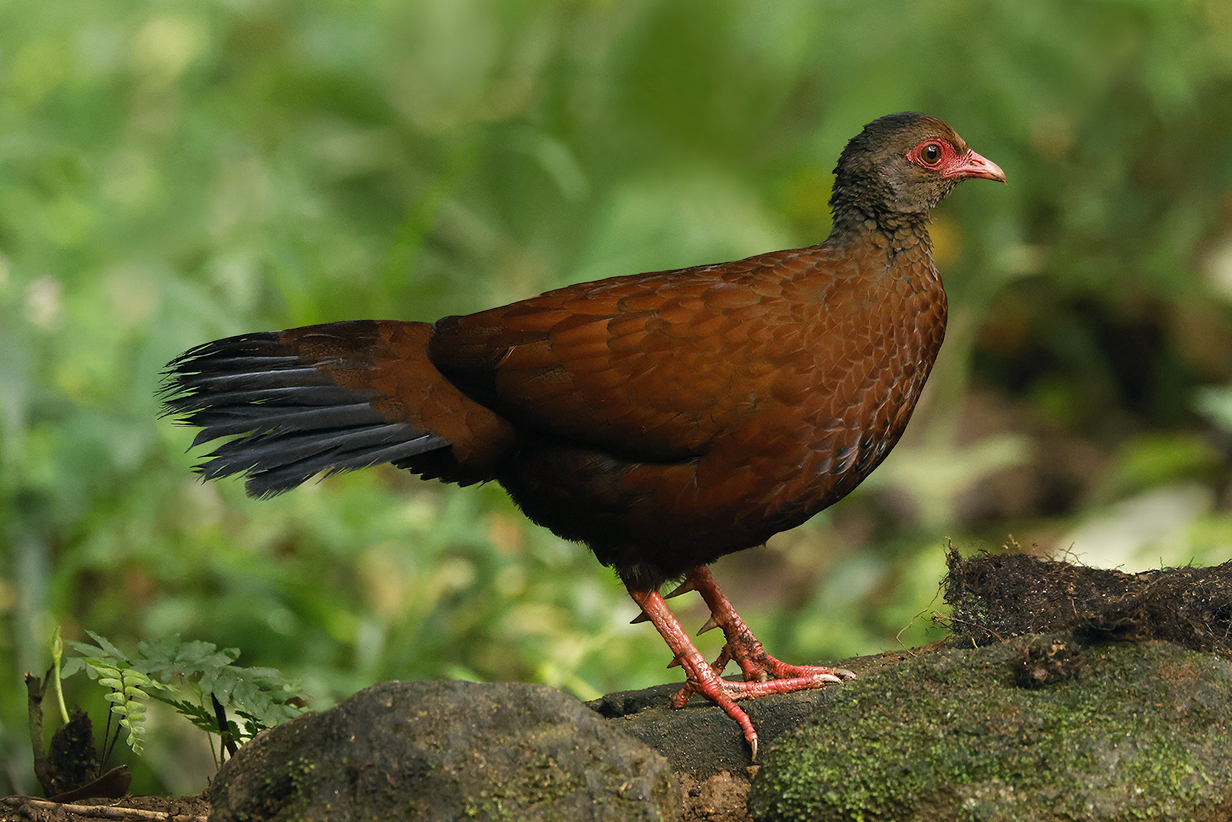
Red spurfowl (This male is our life bird.)
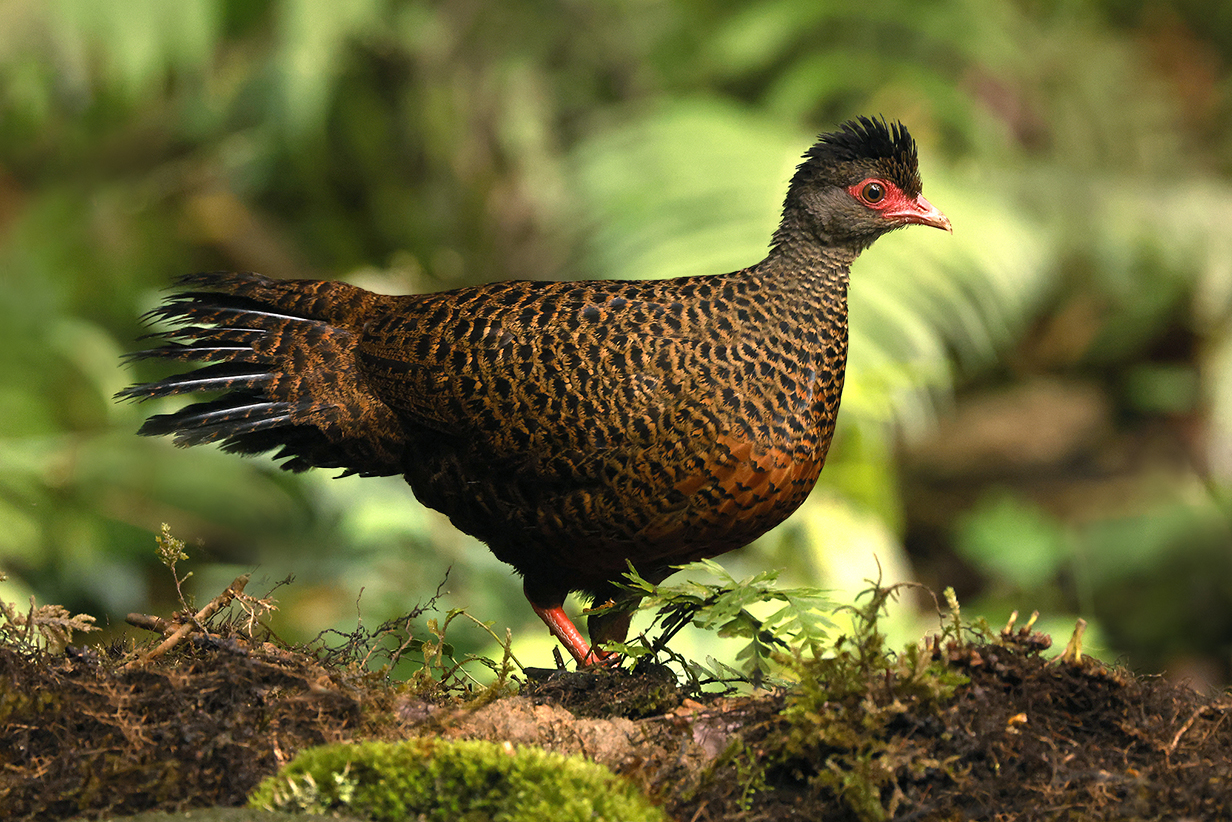
Red spurfowl (female)
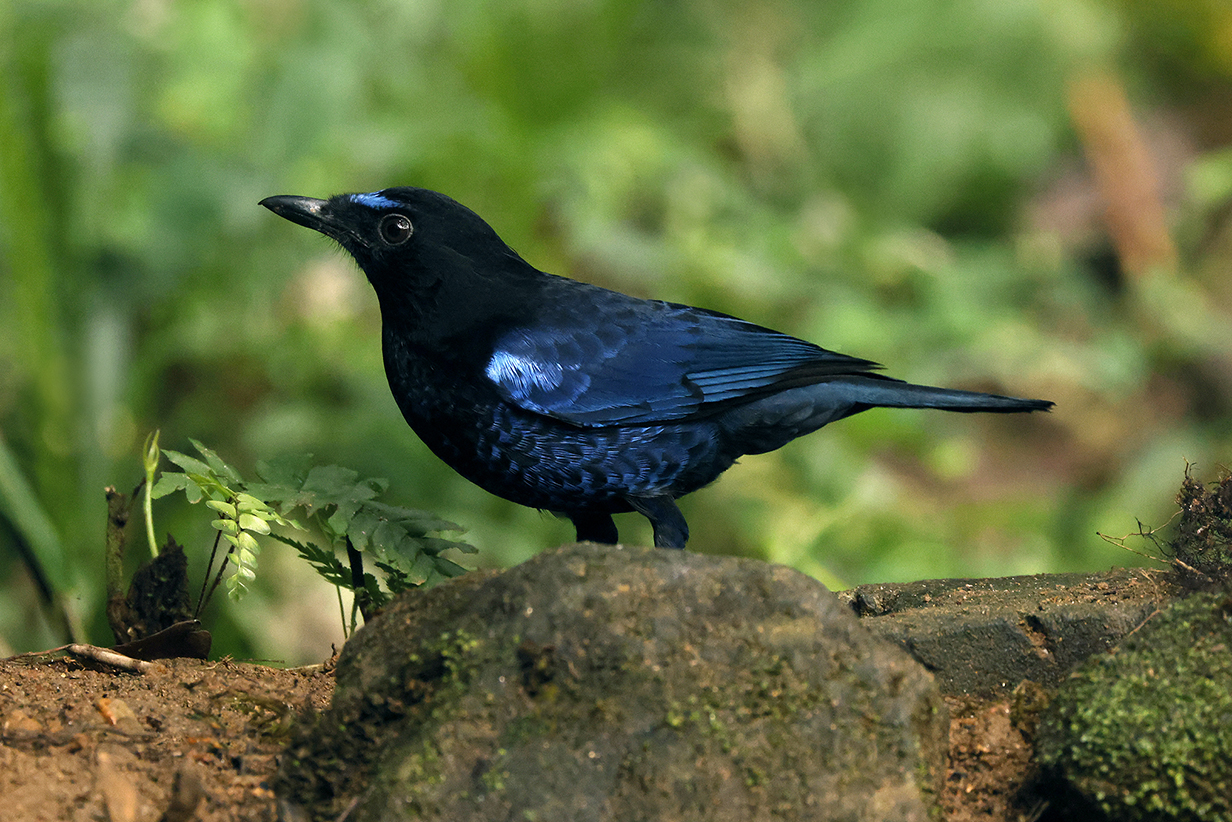
Malabar whistling-thrush
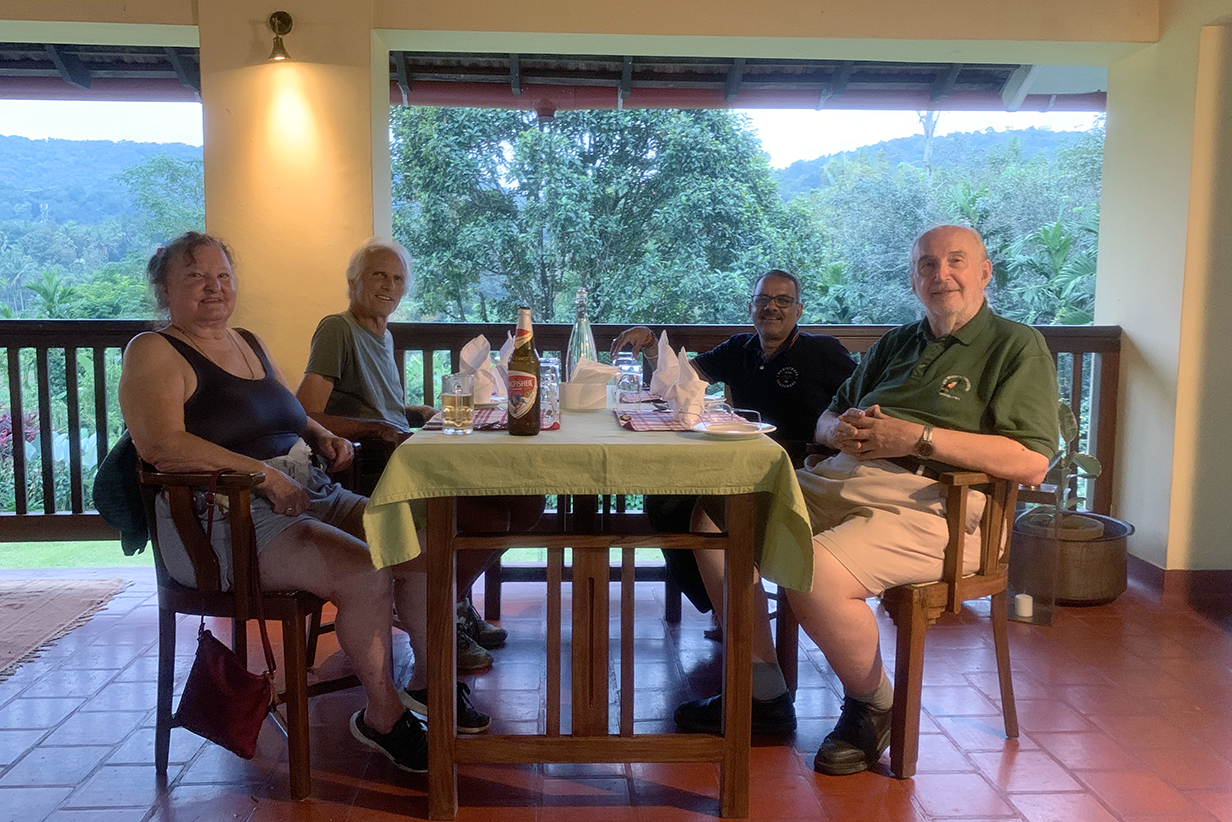
Final dinner of the trip in most gracious surroundings, Windermere River House Hotel, about a 2-hour drive from Kochi, from where we flew Kochi -- Dubai -- Munich the next day (left to right: Mary, Jack Poll, Vinod Goswamy, and John)
Our bird pictures from around the world follow standard ecozones approximately but not exactly:
Birds from the USA and Canada: our house, Hornsby Bend and greater Austin, Texas, California, Hawaii, Canada,
Neotropic birds from Central America and the Caribbean: Honduras, Costa Rica, Panama, Trinidad and Tobago
Neotropic birds from South America: Ecuador, Ecuador 2017, Brazil.
Western palearctic birds: Europe: Germany, Finland, Norway, Europe: United Kingdom, Europe: Spain, the Canary Islands, Europe: Lesbos, Greece, Israel
Eastern palearctic birds: China
Birds from Africa: The Gambia, South Africa
Indo-Malayan birds from India: North-west (Delhi, Uttar Pradesh, Uttarakhand) India: North-east (Assam, Arunachal Pradesh, Meghalaya) India: Central (Maharashtra, Madhya Pradesh)
Birds from Australia, New Zealand.
For our 2014 December trip to India, see this travelog.
For our 2016 May-June trip to India, see this travelog.
For our 2017 April trip to High Island, Texas, see this web site.
For our 2018 March trip to India, see this travelog.
For our 2018 May trip to China, see this travelog.
For our 2018 November trip to China, see this travelog.
For our 2019 April trip to High Island, Texas, see this web site.
For our 2019 July trip to China, see this travelog.
For our 2021 April trip to High Island, Texas, see this web site.
For the 2021 August 3 & 4 migration of Purple martins through Austin, see this web site.
For our 2021 December trip to Ecuador, see this web site.
For our 2022 January-February trip to Peru, see this web site.
For our 2022 July/August trip to Australia and Papua New Guinea, see this web site.
For our 2022 September trip to Bolivia, see this web site.
For our 2022 November-December pre-trip to Argentina (before our Antarctic cruise), see this web site.
For our 2022 November-December cruise to Antarctica, see this web site.
For our 2023 January birding in Chile, see this web site.
For our 2023 January-March cruise from Chile to Antarctica and around South America to Miami, FL, see this web site.
For our 2023 March-April birding in south Florida (after the Seabourn cruise), see this web site.
For our 2023 November-December birding to Sri Lanka, the Andaman Islands, and South India, see this web site.
For John's 2024 February/March birding in Colombia, see this web site.
For our 2024 May-June cruise from Iceland to Jan Mayen Island to and around the Svalbard Archipelago, see this web site.
For our 2024 June 25-30 stay in Paris, see this web site.
For our 2025 April 21 - May 3 trip to High Island, Texas, see this web site.